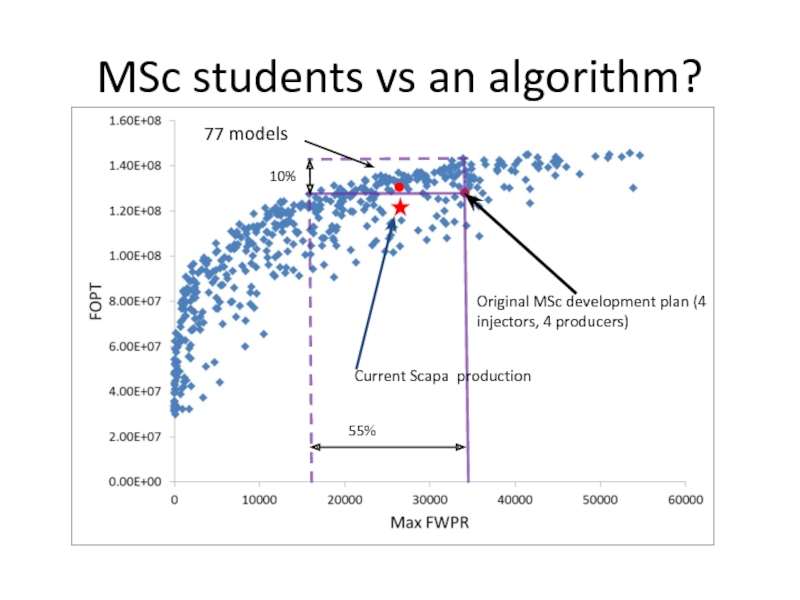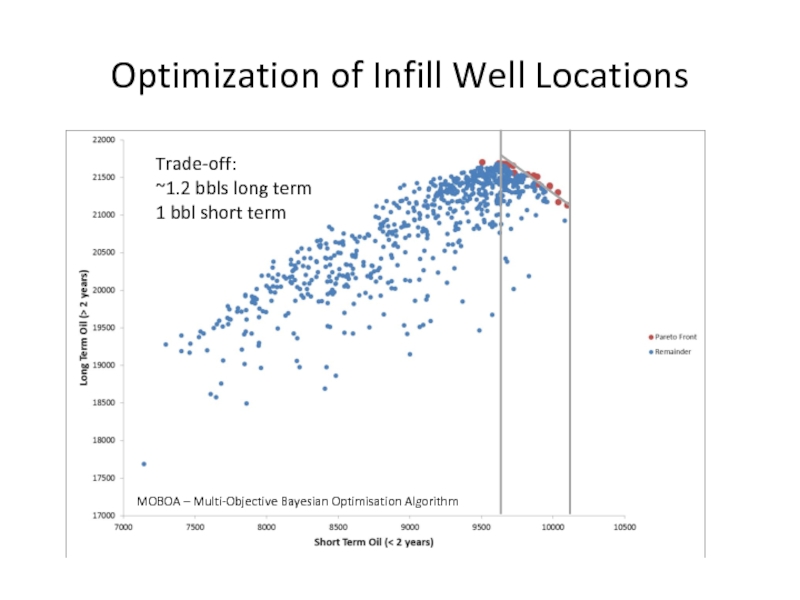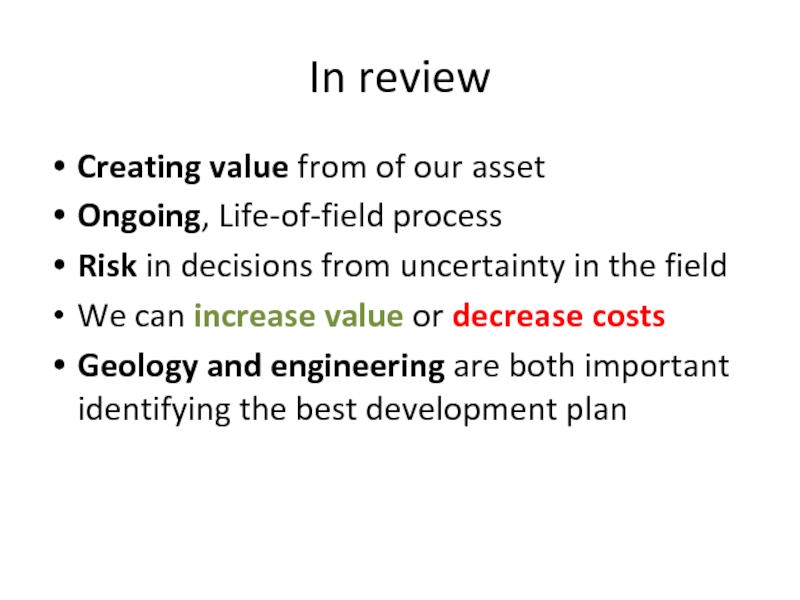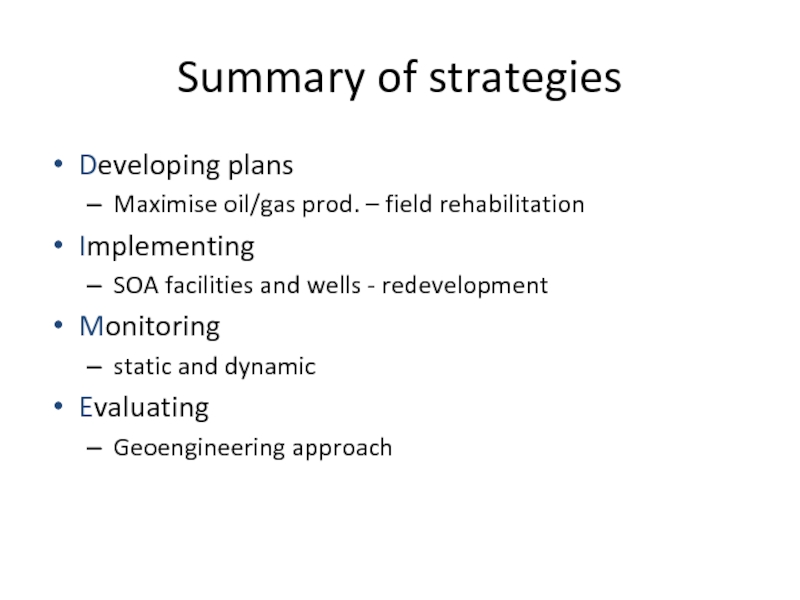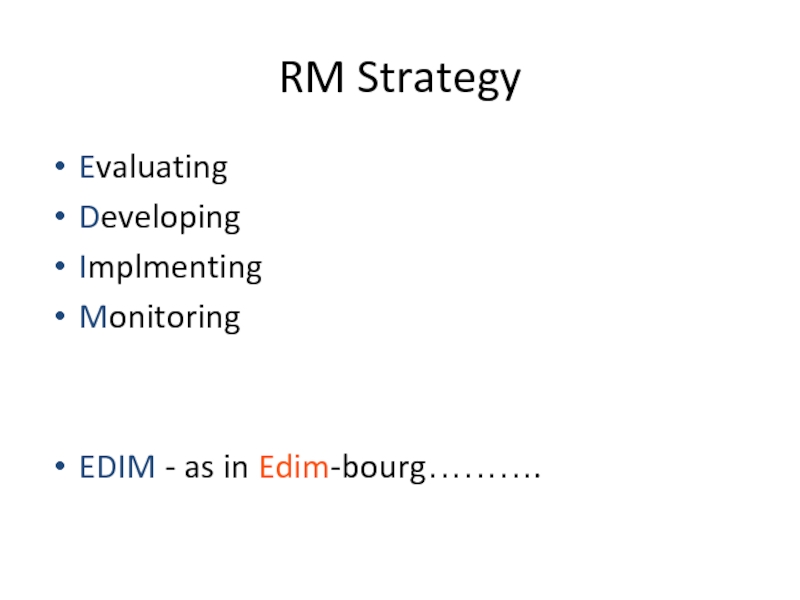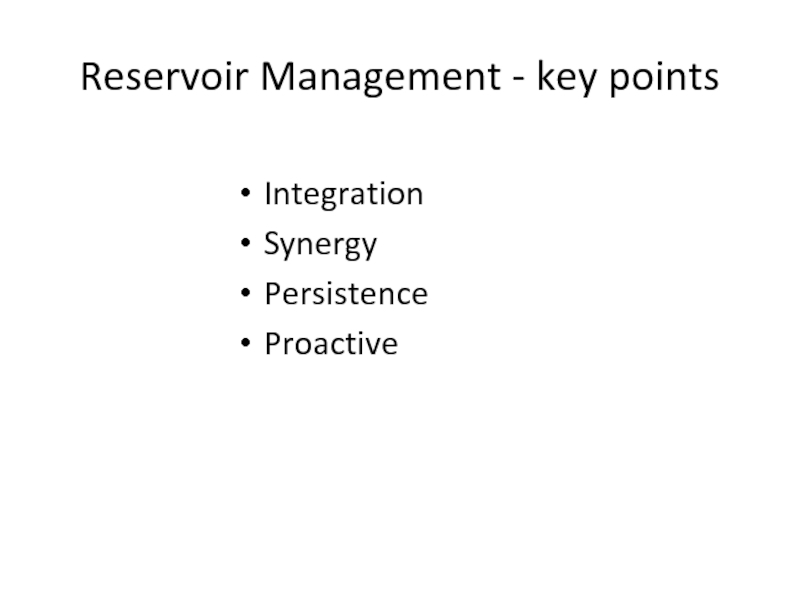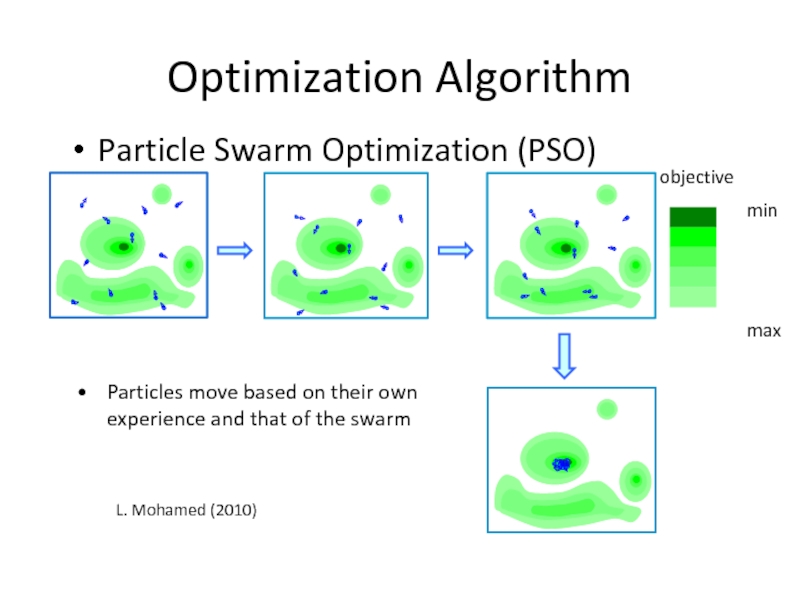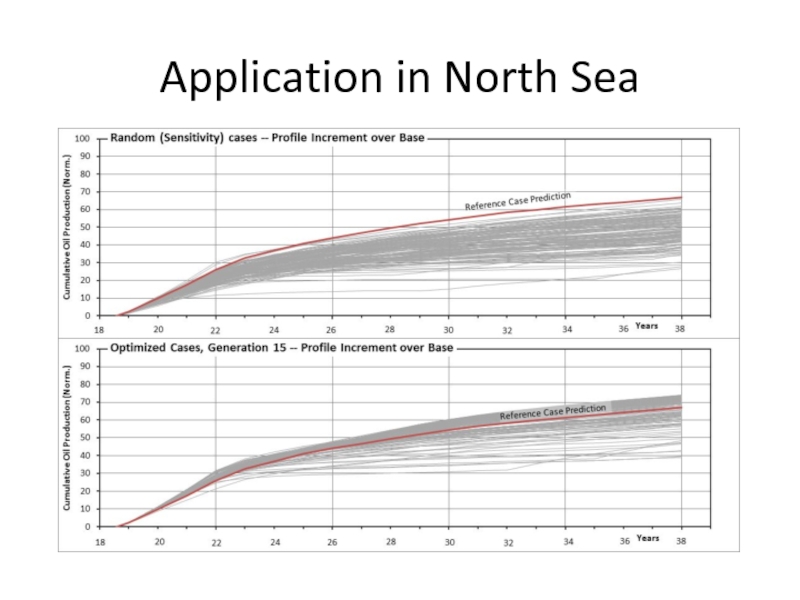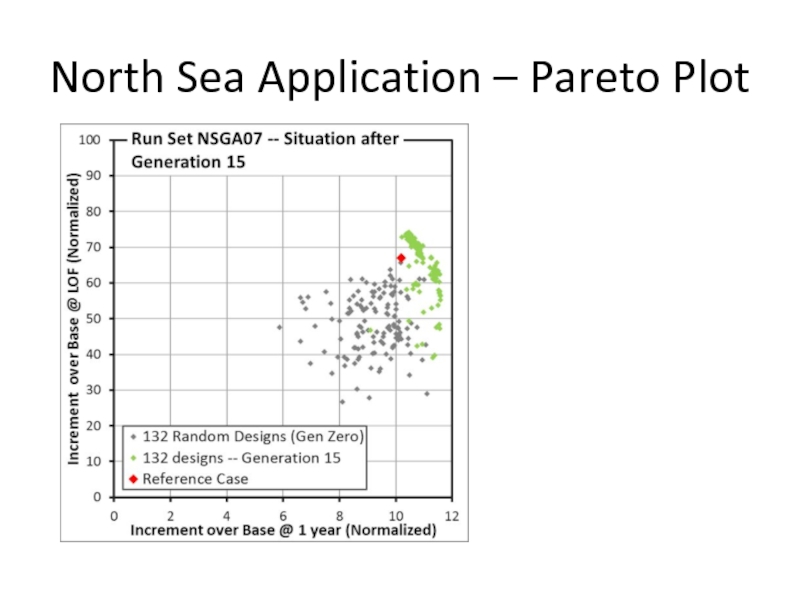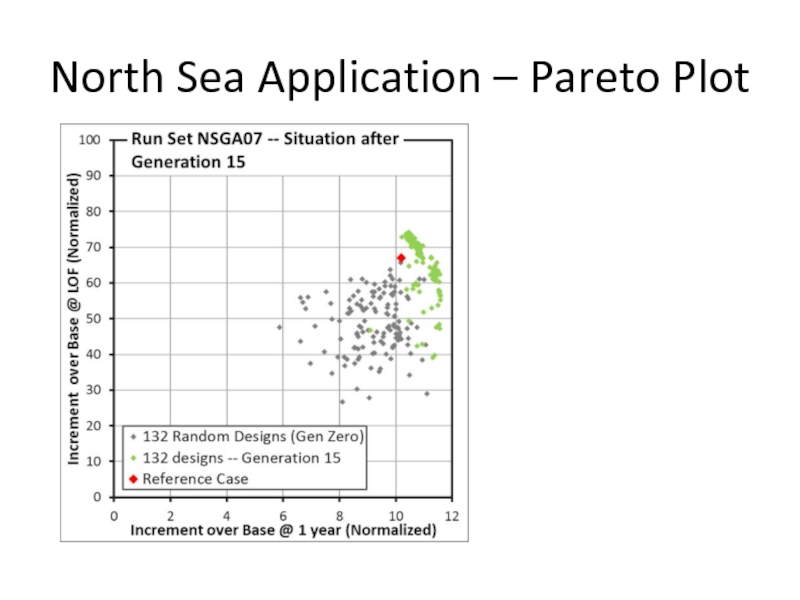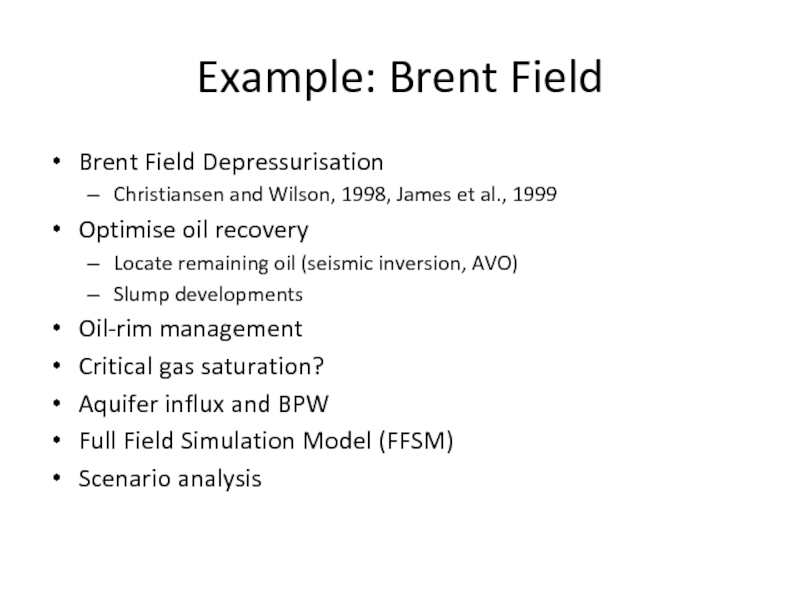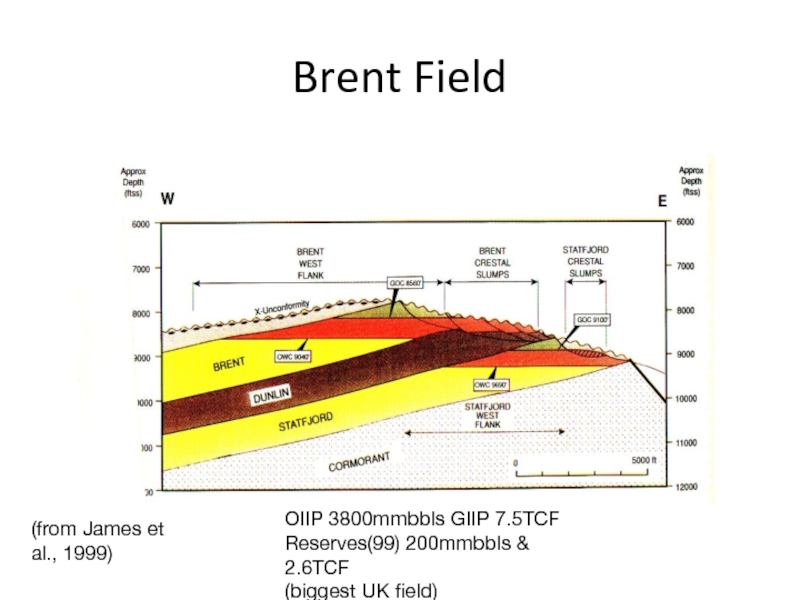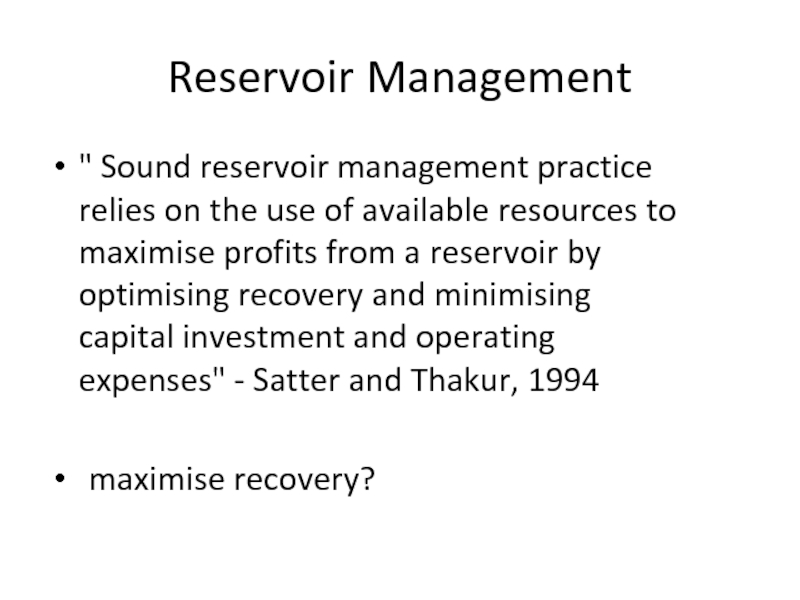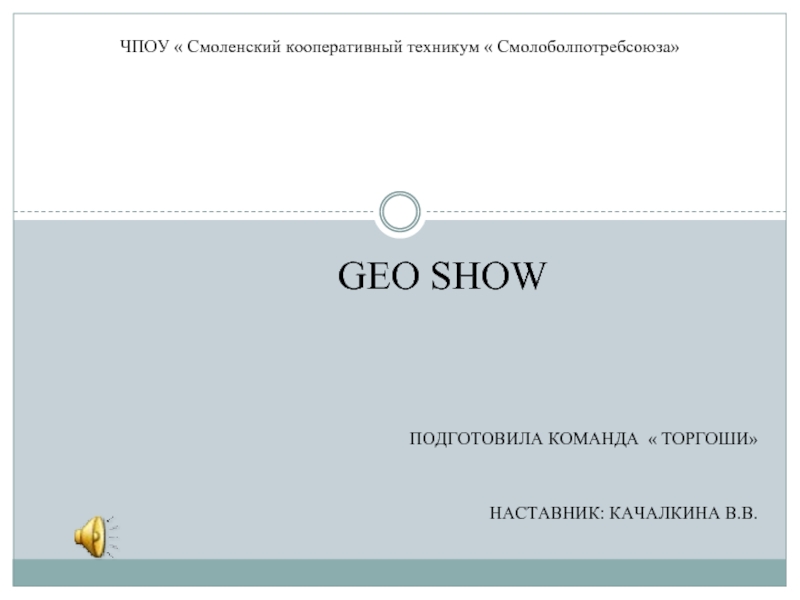- Главная
- Разное
- Дизайн
- Бизнес и предпринимательство
- Аналитика
- Образование
- Развлечения
- Красота и здоровье
- Финансы
- Государство
- Путешествия
- Спорт
- Недвижимость
- Армия
- Графика
- Культурология
- Еда и кулинария
- Лингвистика
- Английский язык
- Астрономия
- Алгебра
- Биология
- География
- Детские презентации
- Информатика
- История
- Литература
- Маркетинг
- Математика
- Медицина
- Менеджмент
- Музыка
- МХК
- Немецкий язык
- ОБЖ
- Обществознание
- Окружающий мир
- Педагогика
- Русский язык
- Технология
- Физика
- Философия
- Химия
- Шаблоны, картинки для презентаций
- Экология
- Экономика
- Юриспруденция
Reservoir management презентация
Содержание
- 1. Reservoir management
- 2. Learning objectives Provide a formal Management Process
- 3. “The purpose of reservoir management is
- 4. “The marshalling of all appropriate business,
- 5. “There are probably as many different
- 6. What is reservoir management? - Summary Integrated
- 7. A lifetime of reservoir models
- 8. Forties field – habitat of remaining
- 9. Monetary value of an asset Recoverable resources
- 10. Aim MAXIMISE VALUE MINIMISE
- 11. RECOVERY Maximise value through…
- 12. Recovery Factors Tyler and Finlay, 1991 Depends
- 13. Depositional Environment vs Drive Mechanism Environment type
- 14. Recover efficiency impact from various reservoir features
- 15. Does connectivity influence recovery?
- 16. What is connectivity? Sandbody connectivity %
- 17. Examples of connectivity? Larue & Hovadik, 2006
- 18. Relationship between connectivity and recovery Larue & Hovadik, 2006
- 19. Static vs dynamic well connectivity Reservoir recoveries
- 20. 2D Connectivity Hovadik & Larue, 2010
- 21. 3D percolation connectivity Hovadik & Larue, 2010
- 22. 2D vs 3D connectivity Larue & Hovadik, 2006
- 23. Shifting the S-Curve Larue & Hovadik, 2006
- 24. Shifting the S-Curve Left or Right? 1
- 25. Geology that shifts the S-Curve Left Larue & Hovadik, 2006
- 26. Geology that shifts the S-Curve Right Larue & Hovadik, 2006
- 27. Increasing 2D effect (shift to Right) Larue & Hovadik, 2006
- 28. Volume support and the cascade zone Larue & Hovadik, 2006
- 29. Geobody Anisotropy Hovadik & Larue, 2010
- 30. Sinuosity Hovadik & Larue, 2010
- 31. Grid dimensions – volume support Hovadik & Larue, 2007/2010
- 32. Overview Increased volume support increases width of
- 33. Which impact? X X X X X
- 34. Is connectivity the biggest factor affecting recovery? Larue and Friedman, 2005
- 35. 30% NTG Larue and Friedman, 2005
- 36. 60% NTG Larue and Friedman, 2005
- 37. 80% NTG Larue and Friedman, 2005
- 38. Key factors affecting dynamic recovery Static connectivity
- 39. Impact of tortuosity Larue & Hovadik, 2006
- 40. Impact of permeability heterogeneity Larue and Friedman, 2005
- 41. Thief zone impact on recovery Larue and Friedman, 2005
- 42. Permeabilty heterogeneity impact Small difference between 0D
- 43. Variogram range and Vdp combined Hovadik & Larue, 2010
- 44. Reservoir Sweep
- 45. Reservoir Sweep
- 46. Reservoir Sweep
- 47. Impact of mobility ratio Larue and Friedman, 2005
- 48. Impact of well pattern Larue and Friedman, 2005
- 49. Well distance impact on recovery (dynamic connectivity) Hovadik & Larue, 2010
- 50. Does seed really account for uncertainty? Larue and Friedman, 2005
- 51. What matters in your reservoir? Larue and Friedman, 2005
- 52. Extreme edge cases: High NTG + Low Connectivity Manzocchi et al, 2007
- 53. NTG vs Amalgamation Ratio NTG and Amalgamation
- 54. Object Based Modelling Convergence Problem Illustration of
- 55. Geostatistical modelling conditioned to NTG High NTG
- 56. Overview of connectivity 30% 60% A+B NTG
- 57. IMPROVED RECOVERY Maximise value through…
- 58. Recovery Factors Tyler and Finlay, 1991 Depends
- 59. Improved Recover Factors Tyler and Finlay, 1991
- 60. What can we adjust to improve recovery?
- 61. Evaluation of history, IHS data
- 62. Production Capacity Increase in Mature Fields
- 63. Production Capacity Increase in Mature Fields
- 64. INFILL DRILLING Example of….
- 65. Time Field Oil Production Rate A typical example of the north sea
- 66. RM Example 1 Strategy for Statfjord Aadland
- 67. Statfjord Field - cross section GOC OWC GOC OWC BRENT STATFJORD 200m
- 68. Statfjord Field - initial production plan
- 69. Statfjord Field - Remaining oil BRENT
- 70. Statfjord Field - New opportunities BRENT
- 71. Example: Yibal Field, Oman Strategy for
- 72. Modelling Characteristics and Sensitivities
- 73. Yibal Field Development History Depletion and “phase”
- 74. YIBAL FIELD: Water - Oil Rate vs
- 75. Seifert et al., 1996 Impact
- 76. Seifert et al., 1996 Impact of well
- 77. Seifert et
- 78. RM Example 3: Heather Field Compartmentalisation and Variable Recovery Crest Flank
- 79. Infill Drilling – Heather Field Fault compartmentalisation
- 80. FRACCING Example of….
- 81. Example: Leman Field Strategy for Leman Field
- 82. Typical Rotliegend reservoir section
- 83. Typical Rotliegend reservoir section Bypassed gas Stratigraphic/structurally bypassed gas
- 84. Typical Rotliegend reservoir section
- 85. EOR (WAG) Example of….
- 86. IOR: New opportunities with CO2
- 87. Example: Magnus Field Production & Injection History
- 88. Improved oil recovery from EOR over waterflood Moulds et al, 2010, SPE 134953
- 89. The Future – New Wells Magnus
- 90. Target: Magnus Field Oil Remaining after
- 91. PEOPLE/TEAMS Maximise value through…
- 92. Synergy Output of a synergistic team is
- 93. Synergy Is not: Geoengineering Any thing about
- 94. REM is like Systems thinking System of
- 95. Field Management Plan (UK DTI) Reservoir Management
- 96. RM Strategy Developing Implementing Monitoring Evaluating DIME - Satter and Thakur, 1994
- 97. WATER MANAGEMENT Increase costs through…
- 98. Reservoir Management Issues (1) a- Mechanical leaks:
- 99. Reservoir Management Issues (2) e- Fractures: f
- 100. WATER SHUTOFF Example of….
- 101. Yibal Field Development History Depletion and “phase”
- 102. YIBAL FIELD: Water - Oil Rate vs
- 103. Brent Field Reservoir monitoring (Bryant and Livera, 1991)
- 104. Brent Field Reservoir monitoring
- 105. Brent Field
- 106. SCALE MANAGEMENT Increase costs through…
- 107. Decline in Magnus production Moulds et al, 2010, SPE 134953
- 108. Examples - Flow Restriction
- 109. Examples - Facilities separator scaled up and after cleaning
- 110. Water chemistry history match 154471 • Use
- 111. Probabilistic predictions of scaling in wells 154471
- 112. Predicting Seawater fraction in produced water (Vasquez et al., 2013)
- 113. Probability maps of seawater fraction P10 P50 P90
- 114. Results Optimization w/o accounting scale risk
- 115. Results Optimization accounting scale risk SeaWater Fraction OilSaturation Layer 4 OilSaturation Layer 1
- 116. Results Layer open/shut w/o accounting scale risk accounting scale risk 0 1
- 117. Impact in the value through… VALUE OF YOUR OIL
- 118. Two key things you don’t know How
- 119. All oil is not created equally priced...
- 120. Time value of money where DPV is the
- 121. Value of money decreases overtime (NPV) From wikipedia
- 122. Compare value of companies Oil = 5,817
- 123. Compare strategy of companies Offshore, deep water,
- 124. Lifting cost of oil (worldwide)
- 125. Angus field NS Why the stop in production for 10 years?
- 126. Aim MAXIMISE VALUE MINIMISE
- 127. Aim MAXIMISE VALUE MINIMISE
- 128. Value and Risk: Expected Return Expected loss/gain
- 129. Decision tree analysis
- 130. Discretisation of PDFs Convert continuous values into
- 131. RESERVOIR DEVELOPMENT OPTIMISATION Maximise value through…
- 132. What do we mean by optimisation Process
- 133. Optimisation example Model 1 Model 2
- 134. Optimisation often involves trade-offs MAXIMISE VALUE
- 135. Automated optimisation A set of algorithms available
- 136. Optimization Algorithm Particle Swarm Optimization (PSO)
- 137. How many wells? Vary well status and
- 138. Real life trade-off in optimisation Vary injection
- 139. MSc students vs an algorithm? Original MSc
- 140. Optimization of Infill Well Locations Trade-off:
- 141. In review Creating value from of our
- 142. Summary of strategies Developing plans Maximise oil/gas
- 143. RM Strategy Evaluating Developing Implmenting Monitoring EDIM - as in Edim-bourg……….
- 144. Reservoir Management - key points Integration Synergy Persistence Proactive
- 145. Optimization Algorithm Particle Swarm Optimization (PSO)
- 146. Application in North Sea
- 147. North Sea Application – Pareto Plot
- 148. North Sea Application – Pareto Plot
- 149. Example: Brent Field Brent Field Depressurisation Christiansen
- 150. Brent Field (from James et al., 1999)
- 151. Reservoir Management " Sound reservoir management practice
Слайд 2Learning objectives
Provide a formal Management Process
Reservoir Management tools
Review some examples of
Clastics
Carbonates
Oil
Gas
Develop a knowledge of Reservoir Management techniques and applications
Reservoir Management best practice
Слайд 3
“The purpose of reservoir management is to control operations to obtain
Thakur, 1996 - Chevron
Слайд 4
“The marshalling of all appropriate business, technical and operating resources to
“Through-life, ongoing process”
Al-Hussainy and Humphreys, 1996 - Mobil
Слайд 5
“There are probably as many different definitions as there are perceptions
“Integrated approach...key consideration...”
“The judicious use of the various means available to a business to maximise its benefits/profits from the reservoir”
Egbogah, 1996 - Petronas
Слайд 6What is reservoir management? - Summary
Integrated approach:
to control operations
to maximise
to obtain the maximum possible economic recovery from a reservoir
Слайд 9Monetary value of an asset
Recoverable resources (i.e. reserves)
Rate of production
Cost of
Oil price
Fiscal regime
Слайд 10Aim
MAXIMISE
VALUE
MINIMISE
COST
Maximise recovery
Recovery Technology (speed up)
People/Team
Reservoir Knowledge/analysis
CAPEX
OPEX
Tax
Depreciation
Слайд 12Recovery Factors
Tyler and Finlay, 1991
Depends on Geology
and Drive Mechanism
Solution gas drive
Gas cap drive 20-40%
Water drive 35-75%
Gravity drainage 5-30%
(after Sills, AAPG Methods 10, 1992)
Слайд 13Depositional Environment vs Drive Mechanism
Environment type has less of an impact
Primary vs secondary recovery has a bigger impact
Primary recover average = 20% recovery vs 40% for secondary recovery mechanisms
Larue and Friedman, 2005
Слайд 16What is connectivity?
Sandbody connectivity
% of sand bodies that are connected
Reservoir connectivity
% of sand connected to the wells
Producer, producer/injector, completions/laterals
Static and Dynamic connectivity
How long will it take to produce the connected volume
Bypassing?
Multiple connections?
Слайд 19Static vs dynamic well connectivity
Reservoir recoveries significantly below percolation prediction of
Static inter-body connectivity
Producer sand connectivity
Producer-injector connectivity
Dynamic recovery efficiency is different
Larue & Hovadik, 2006
Слайд 32Overview
Increased volume support increases width of cascade zone
Decreasing “dimensionality” moves curve
Increasing dimensionality shifts curve to the left
Слайд 38Key factors affecting dynamic recovery
Static connectivity
SHAPE OF S-CURVE
Dynamic “addons”
Tortuosity
Permeability Heterogeneity
Inter-well distance
Fault
Fluid
Слайд 42Permeabilty heterogeneity impact
Small difference between 0D (nugget) and 3D (variogram) models
Add
Add drapes and both K variability and tortuosity increase
Compartmentalisation from mud drapes Further reduces recovery
Hovadik & Larue, 2010
Слайд 53NTG vs Amalgamation Ratio
NTG and Amalgamation ratio do not corellate in
High NTG vs Low AR
Object models
Manzocchi et al, 2007
Слайд 54Object Based Modelling
Convergence Problem
Illustration of Sequential
Object Based Algorithm (Srivastava 1994)
As Number
How will NTG correlate with AR in an Object model?
Слайд 55Geostatistical modelling conditioned to NTG
High NTG system has short continuity of
Beds terminate early
Shales laterally extensive
LOW Amalgamation ratio
Modelling using Objects
(b) sand in shale background
(c) shale in sand background
Neither honour AR of system
Need to model with additional AR parameter (d)
Standard Geostats methods won’t capture the shift to 2D connectivity due to low AR
Manzocchi et al, 2007
Слайд 56Overview of connectivity
30%
60%
A+B
NTG
NTG
Geobody size
Total Recovery
Impact of Geology
More wells
Lower Mobility
High Vdp
NTG >35%
Seed
Слайд 58Recovery Factors
Tyler and Finlay, 1991
Depends on Geology
and Drive Mechanism
Solution gas drive
Gas cap drive 20-40%
Water drive 35-75%
Gravity drainage 5-30%
(after Sills, AAPG Methods 10, 1992)
Слайд 61
Evaluation of history, IHS data base
Natural decline “as is”
Production efficiency
Reserve growth;
Exploration success
Demand growth
New field developments
From Meling, 2004
Petroleum Industry Drivers
Слайд 62Production Capacity Increase in Mature Fields
Time
Production
Overall Field Development Plan
Detailed Seismic &
Operations optimisation
Field Development Plan
Production Optimisation
Production Profile Protection
Start of production
Reservoir Simulation and Engineering Studies
(after Campbell Airlie, EPS)
Слайд 63Production Capacity Increase in Mature Fields
Time
Production
Overall Field Development Plan
Detailed Seismic &
Operations optimisation
Field Development Plan
Production Optimisation
Production Profile Protection
Start of production
Reservoir Simulation and Engineering Studies
(after Campbell Airlie, EPS)
Mature Field Management
Слайд 66RM Example 1
Strategy for Statfjord
Aadland et al., 1994
High well activity
Horizontal wells
Reservoir
Proactive
Investment for future
Слайд 68
Statfjord Field - initial production plan
BRENT
STATFJORD
200m
Water injection
Gas injection
Oil production
Слайд 69
Statfjord Field - Remaining oil
BRENT
STATFJORD
200m
Remaining oil locations
Rim oil
Attic oil
Structural compartments
Stratigraphic
compartments
Слайд 70
Statfjord Field - New opportunities
BRENT
STATFJORD
200m
Remaining oil locations
New completions
Horizontal wells
High angle wells
Extended
drilling (ERD)
Infill wells
Слайд 71Example: Yibal Field, Oman
Strategy for Yibal Field, Oman
Horizontal wells
Bypassed oil in
Слайд 72Modelling Characteristics and Sensitivities
Original OWC
Upper Shuaiba Matrix:
Single pore system
Uncertain Kv/Kh ratio
Uncertain
Uncertain keff
Tight Streak:
Baffle to flow
Uncertain keff
Uncertain continuity
Fault and Fracture Network:
Uncertain and varying conductivity
Uncertain density
Uncertain keff
Upper Thief Zone:
Dual pore system
Uncertain continuity
Uncertain keff
Lower Thief Layer:
Dual pore system
Uncertain continuity
Uncertain keff
Слайд 73Yibal Field Development History
Depletion and “phase” injection
Aquifer injection
Onset of horizontal drilling
High
1994
1979
1985
2002
(from Mijnsen et al, 2005)
Слайд 75
Seifert et al., 1996
Impact of well placement
fluvial study
SW
NE
compartmentalisation
of pay facies
FROM CHAPTER
Слайд 76Seifert et al., 1996
Impact of well placement
fluvial study
find orientation of well
contain > aeolian GU proportions
maximise productivity
intersect > number of aeolian bodies
maximise drainage
assess the likelihood of wells in this orientation intersecting high proportions of aeolian GUs
FROM CHAPTER 1
Слайд 77
Seifert et al., 1996
Impact of well placement
results
aeolian bodies
intersected
aeolian GU
proportions
horizontal wells
#
cumulative aeolian
intersected
inclined wells
well length (ft)
FROM CHAPTER 1
Слайд 81Example: Leman Field
Strategy for Leman Field
Mijnsson and Maskall 1994
Proactive hunt for
Horizontal wells
Parallel to palaeowind
Only part of the story
Слайд 84
Typical Rotliegend reservoir section
Horizontal well/multilateral opportunities
Stratigraphic/structurally bypassed gas
Fraccing
Слайд 87Example: Magnus Field
Production & Injection History
Commence water injection
Moulds et al, 2010,
Слайд 89
The Future – New Wells
Magnus Extension Project
4 new slots, slot splitter
13 well drilling programme under-way
Moulds et al, 2010, SPE 134953
Слайд 90Target: Magnus Field
Oil Remaining after waterflood
EOR oil target: updip
Moulds et al, 2010, SPE 134953
Слайд 92Synergy
Output of a synergistic team is larger than the sum of
Geol
+
Geoph
Eng
+
=
Output
=
Output
Sneider, 2000
Слайд 93Synergy
Is not:
Geoengineering
Any thing about multi-discipline work
Anything to do with Energy
Synergy
Sum of
Слайд 94REM is like Systems thinking
System of interdependent processes
Model Complexity of system
People in parts of system need to work together and communicate
Geology, petrophysics, geophysics, reservoir engineering, drilling, petroleum engineering, upstream/downstream, environment, local populations, governments….. The list goes on
Слайд 95Field Management Plan (UK DTI)
Reservoir Management Strategy
- detailing the principles and
Reservoir Monitoring Plan
- describing the data gathering and analysis proposed to resolve existing uncertainties and understand dynamic performance during development drilling and subsequent production
Owen, 1998
Слайд 98Reservoir Management Issues (1)
a- Mechanical leaks: b - Behind Casing flow
c - Oil-water contact: d – High perm zones
(From Arnold et al., 2004)
Слайд 99Reservoir Management Issues (2)
e- Fractures: f – Fractures to water
g
i – Gravity segregation
j – High perm with crossflow
Слайд 101Yibal Field Development History
Depletion and “phase” injection
Aquifer injection
Onset of horizontal drilling
High
1994
1979
1985
2002
(from Mijnsen et al, 2005)
Слайд 104
Brent Field Reservoir monitoring
(Bryant and Livera, 1991)
1. Initial Conditions
Ness Formation
Слайд 105
Brent Field Reservoir monitoring
(Bryant and Livera, 1991)
1. 1987 Conditions
Ness Formation
New Perforations
Profile
Water Shut-off
Слайд 110Water chemistry history match
154471 • Use of Water Chemistry Data in
Слайд 111Probabilistic predictions of scaling in wells
154471 • Use of Water Chemistry
Spatial Probability Maps
Well Forecasts
Tracer concentration
Time
Слайд 115
Results
Optimization accounting scale risk
SeaWater Fraction
OilSaturation Layer 4
OilSaturation Layer 1
Слайд 118Two key things you don’t know
How much oil you can extract
Reservoir
Variations from different development plans
Ownership
How much your oil is worth
Oil price
Lifting costs
CAPEX
Taxation/Royalty
Слайд 120Time value of money
where
DPV is the discounted present value of the future
FV is the nominal value of a cash flow amount in a future period;
i is the interest rate or discount rate, which reflects the cost of tying up capital and may also allow for the risk that the payment may not be received in full;[1]
n is the time in years before the future cash flow occurs
“how much money would have to be invested currently, at a given rate of return, to yield the cash flow in future.”
Слайд 122Compare value of companies
Oil = 5,817 million barrels
Gas = 24,948 billion
1.75 million BOE per day
Oil = 2,234 million barrels
Gas = 3,810 billion cubic feet
753,000 BOE per day production
Market cap = 83.28bn
Market cap = 77.63bn
$6.8 billion net income
$4.6 billion net income
Слайд 123Compare strategy of companies
Offshore, deep water, complex fields
Ultra high production (60,000
High well costs ($150 million + per well)
Ultra high CAPEX
Long development cycles (6 years)
Onshore, EOR, easy access, shallow
Low production (500-1000bpd)
Low CAPEX/high OPEX ($10/bbl)
Low well cost ($2-4 million)
Fast turn around times on wells (less than 1 year)
Слайд 126Aim
MAXIMISE
VALUE
MINIMISE
COST
Maximise recovery
Speed up recovery
People/Team
Reservoir Knowledge/analysis
Recovery Technology
CAPEX
OPEX
Tax
Depreciation
Слайд 127Aim
MAXIMISE
VALUE
MINIMISE
COST
Maximise recovery
Speed up recovery
People/Team
Reservoir Knowledge/analysis
Recovery Technology
CAPEX
OPEX
Tax
Depreciation
RISK
Слайд 128Value and Risk: Expected Return
Expected loss/gain for an event is sum
E(R) = 0.5 × £10 + 0.25 × £20 + 0.25 × (-£10) = £7.5
Слайд 130Discretisation of PDFs
Convert continuous values into discrete to use in decision
Several methods, such as:
Swanson’s rule (P10/50/90 = 30%/40%/30%)
Pearson Tukey (P10/50/90 = 18.5%/63%/18.5%)
McNamee & Celona Shortcut (25%/50%/25%)
P10
P50
P90
Слайд 132What do we mean by optimisation
Process of improving something
to find the
Constantly updating/improving process vs defined decision points
Maximising value, minimising risk/impact, lowering cost
Integrated solution in complex systems
Слайд 134Optimisation often involves trade-offs
MAXIMISE
VALUE
MINIMISE
COST
Maximise recovery
Speed up recovery
People/Team
Reservoir Knowledge/analysis
Recovery Technology
CAPEX
OPEX
Tax
Depreciation
Слайд 135Automated optimisation
A set of algorithms available that can automate the optimisation
Define problem as a set of optimisation parameters in the model
Algorithm adjusts these automatically to find “optimal solutions”
Algorithm steps iteratively, converging on the “best answer”
Multiple competing criteria means a trade-off in the optimal solution
Слайд 136
Optimization Algorithm
Particle Swarm Optimization (PSO)
Particles move based on their own experience
L. Mohamed (2010)
Слайд 138Real life trade-off in optimisation
Vary injection well rates and locations of
Well rates in [0,15] MBD
Слайд 139MSc students vs an algorithm?
Original MSc development plan (4 injectors, 4
10%
55%
77 models
Current Scapa production
Слайд 140Optimization of Infill Well Locations
Trade-off:
~1.2 bbls long term
1 bbl short
MOBOA – Multi-Objective Bayesian Optimisation Algorithm
Слайд 141In review
Creating value from of our asset
Ongoing, Life-of-field process
Risk in decisions
We can increase value or decrease costs
Geology and engineering are both important identifying the best development plan
Слайд 142Summary of strategies
Developing plans
Maximise oil/gas prod. – field rehabilitation
Implementing
SOA facilities and
Monitoring
static and dynamic
Evaluating
Geoengineering approach
Слайд 145
Optimization Algorithm
Particle Swarm Optimization (PSO)
Particles move based on their own experience
L. Mohamed (2010)
Слайд 149Example: Brent Field
Brent Field Depressurisation
Christiansen and Wilson, 1998, James et al.,
Optimise oil recovery
Locate remaining oil (seismic inversion, AVO)
Slump developments
Oil-rim management
Critical gas saturation?
Aquifer influx and BPW
Full Field Simulation Model (FFSM)
Scenario analysis
Слайд 150Brent Field
(from James et al., 1999)
OIIP 3800mmbbls GIIP 7.5TCF
Reserves(99) 200mmbbls &
(biggest UK field)
Слайд 151Reservoir Management
" Sound reservoir management practice
relies on the use of
maximise recovery?
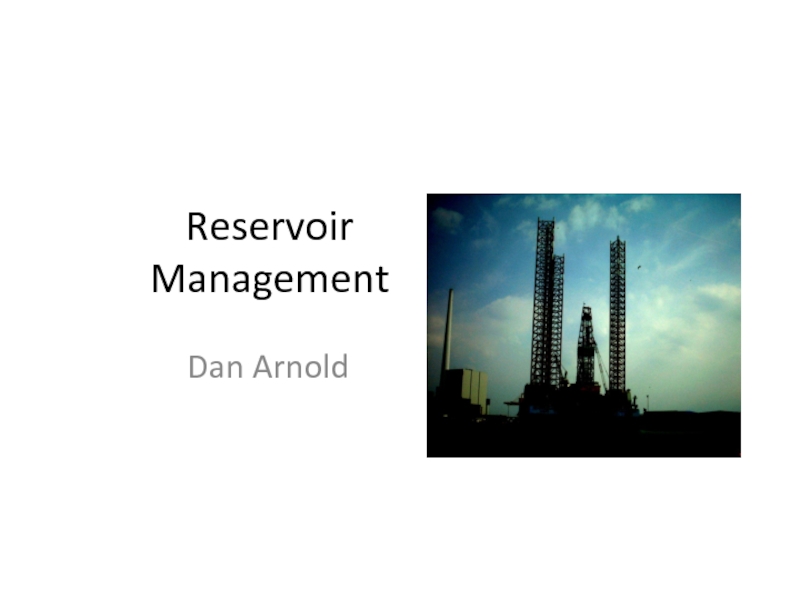
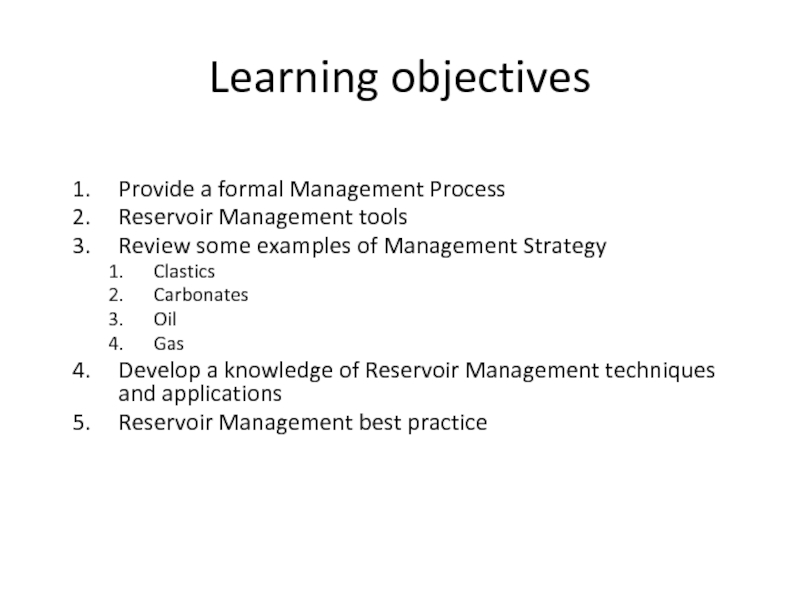
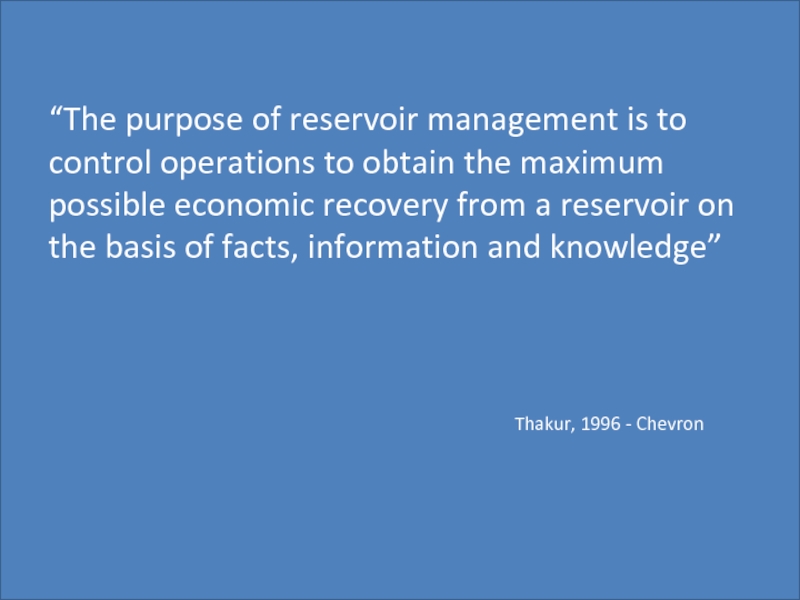
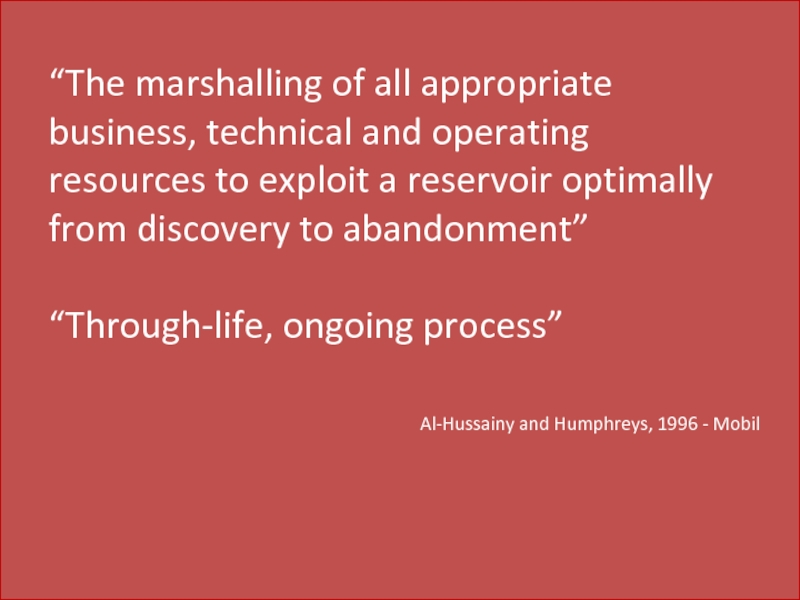
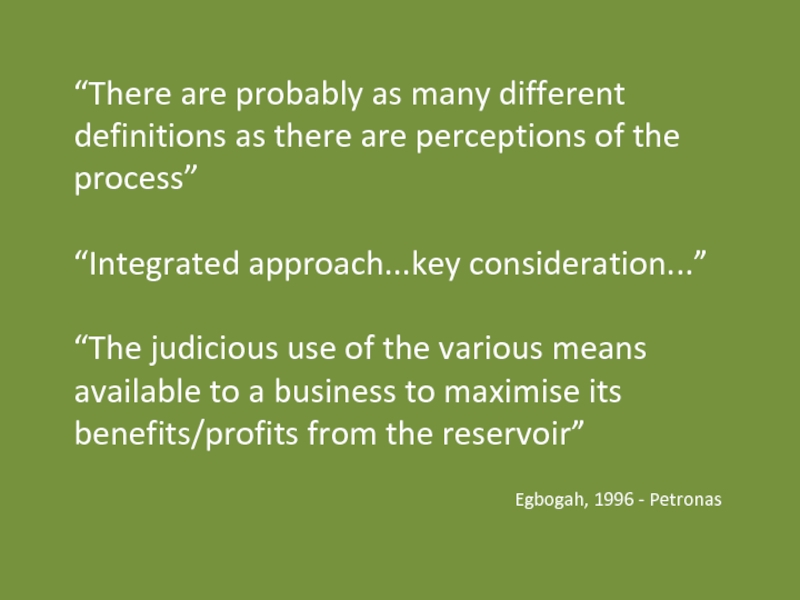
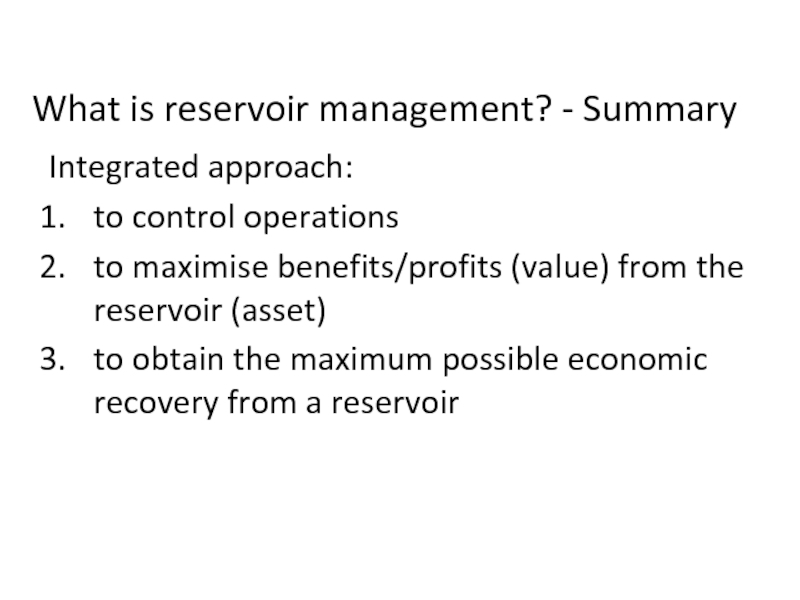
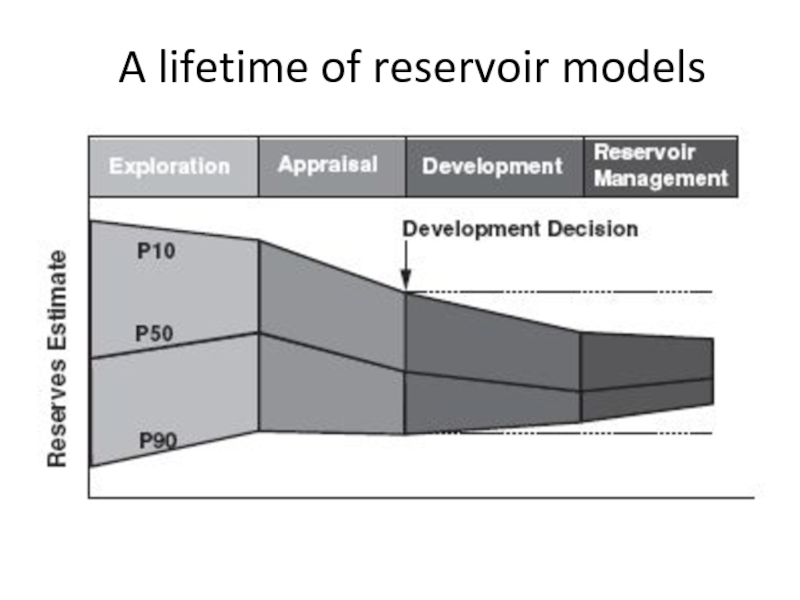
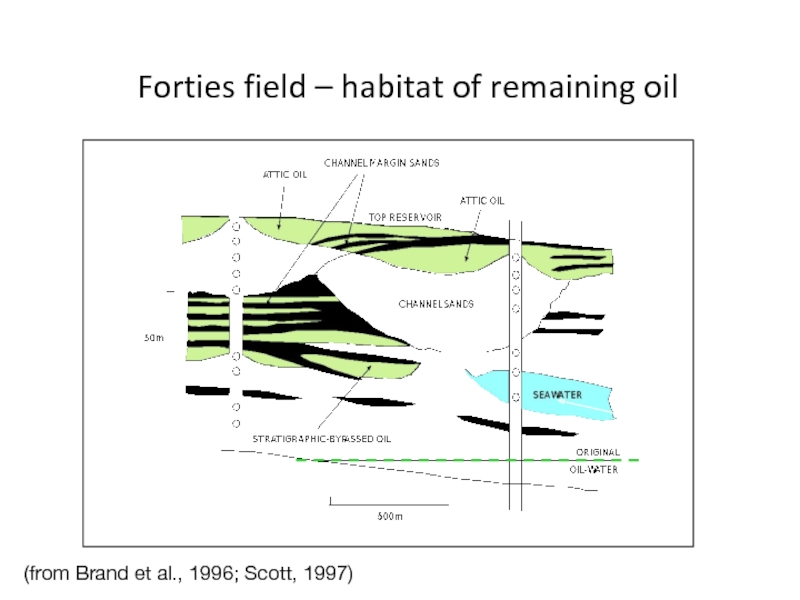
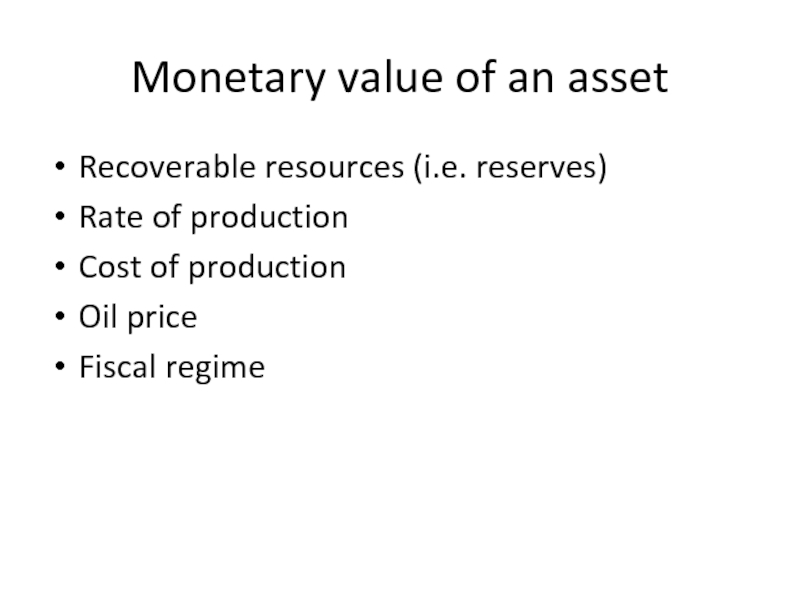
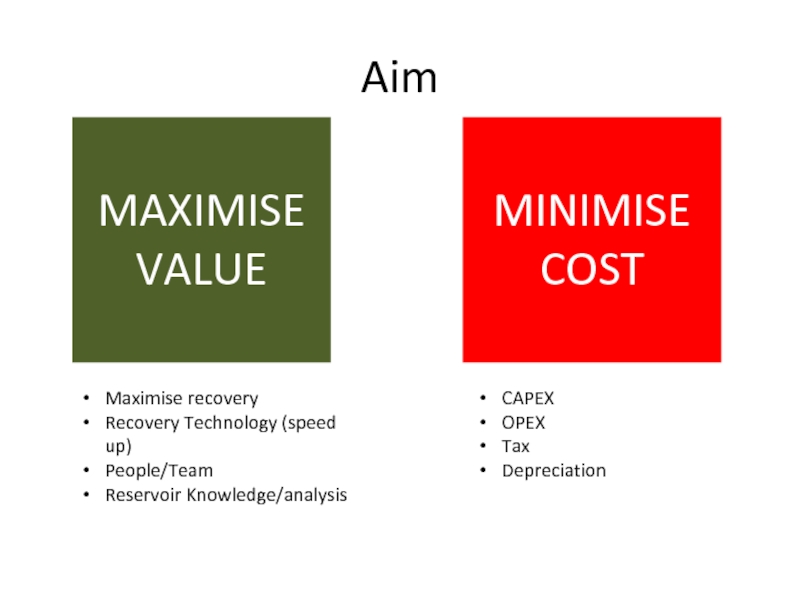

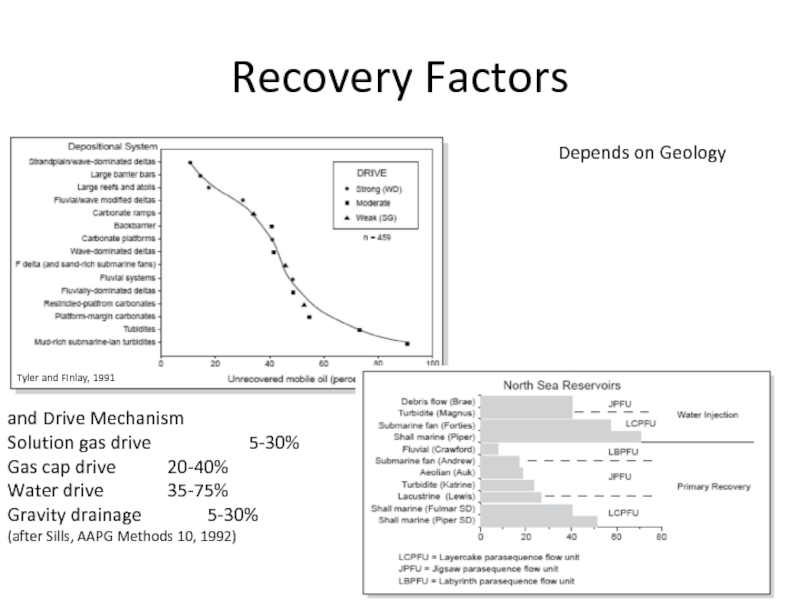
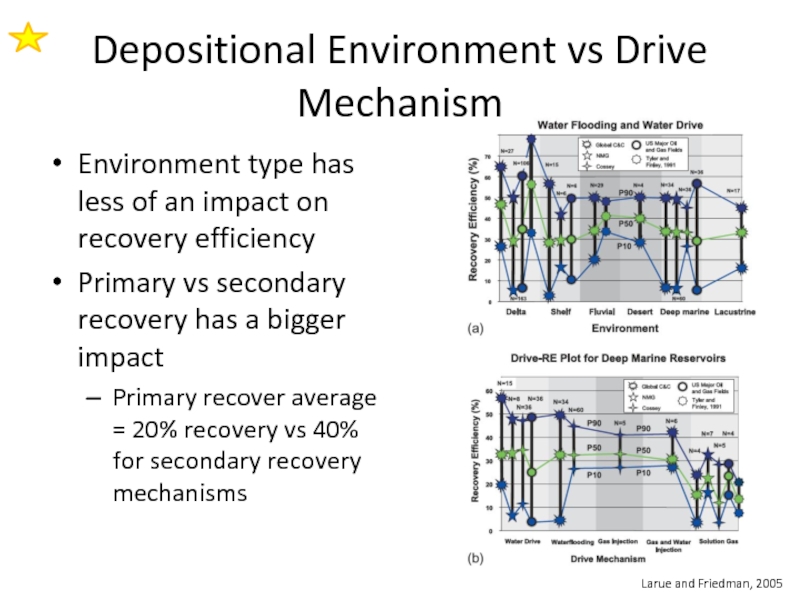
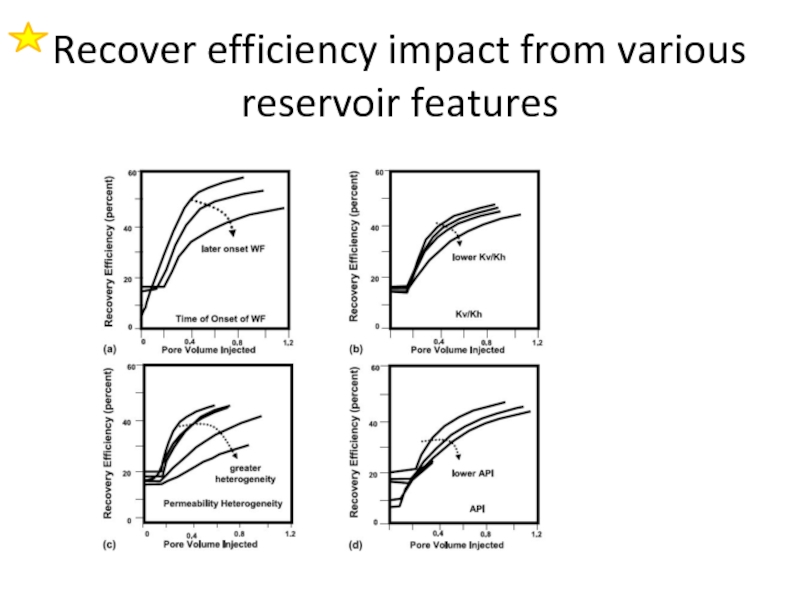

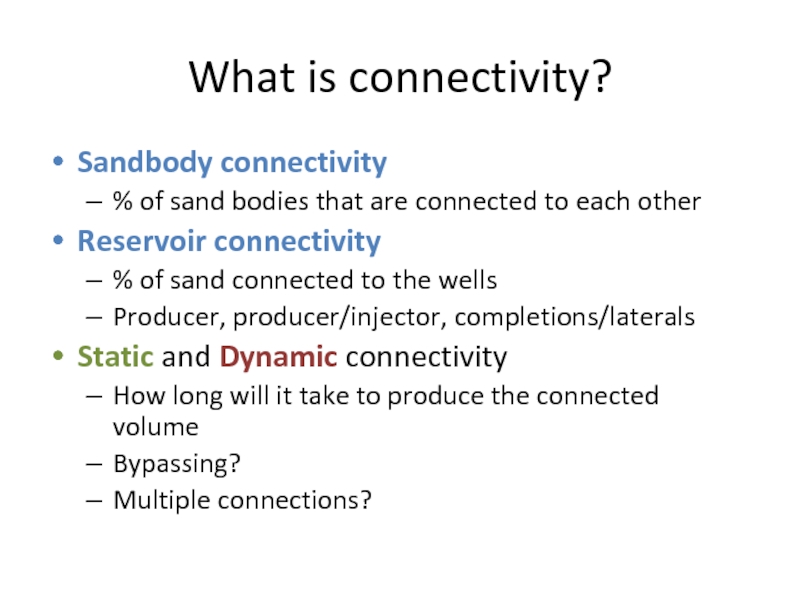
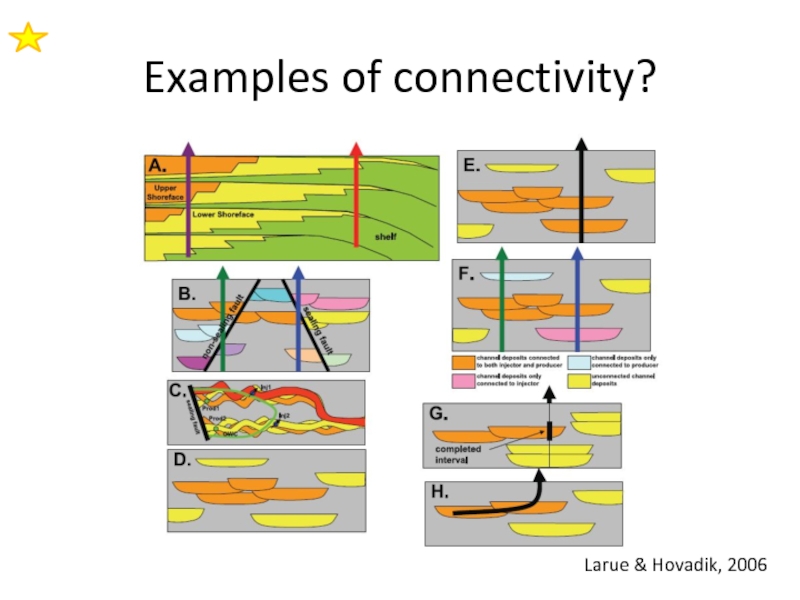
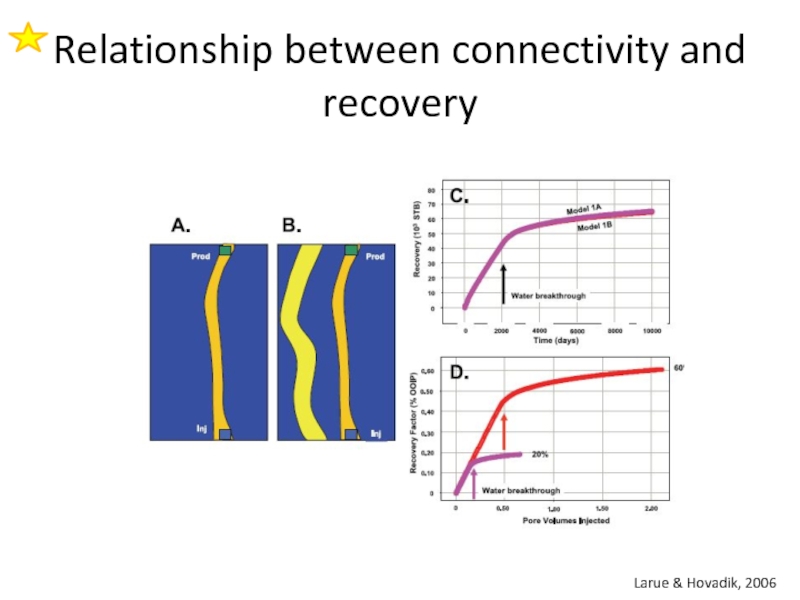
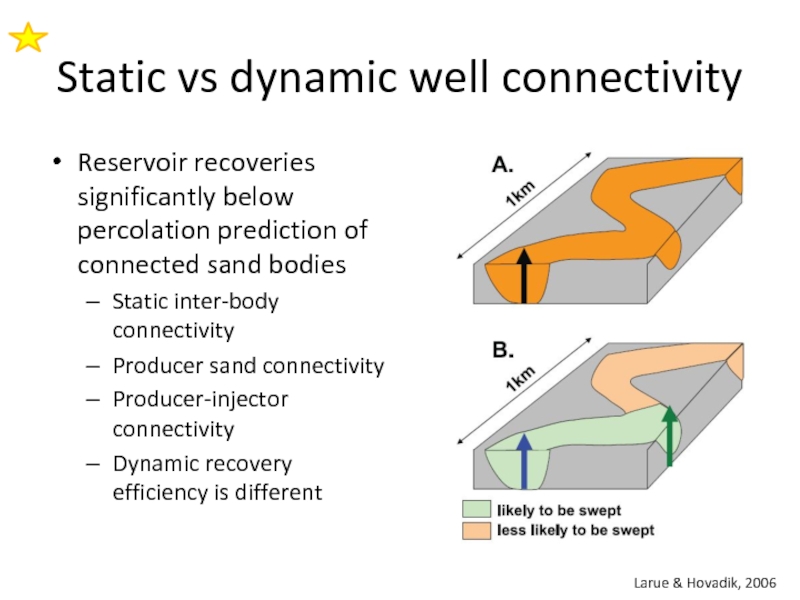
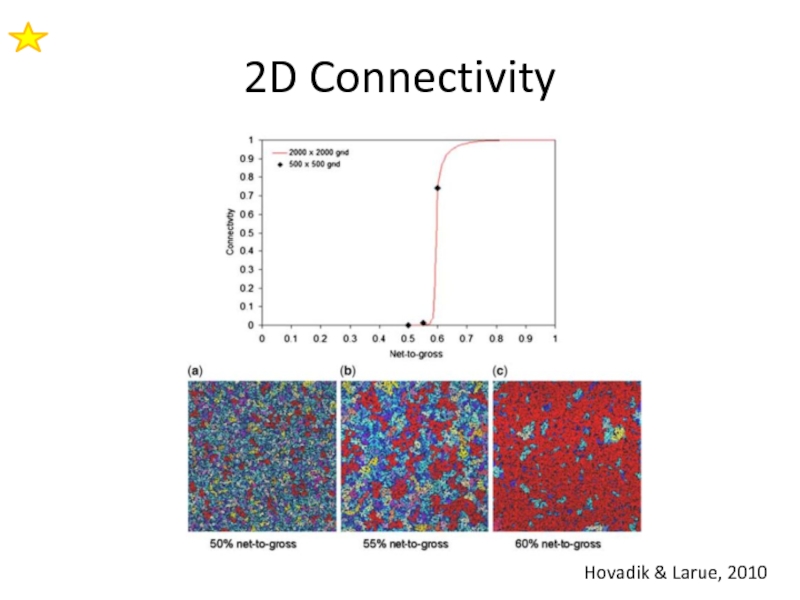
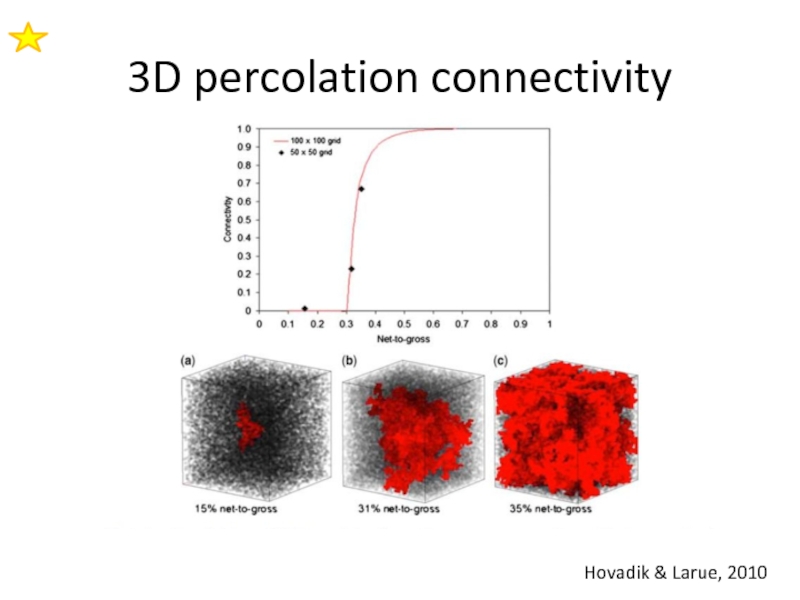
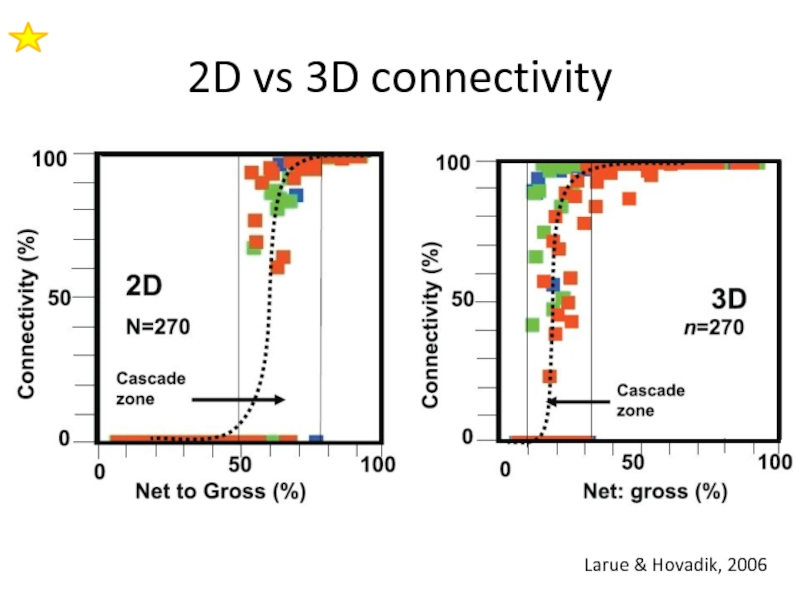
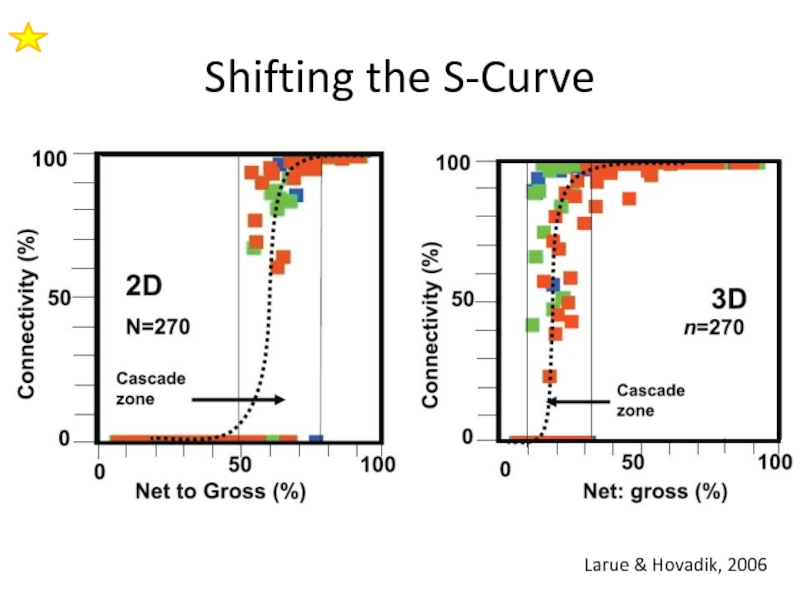
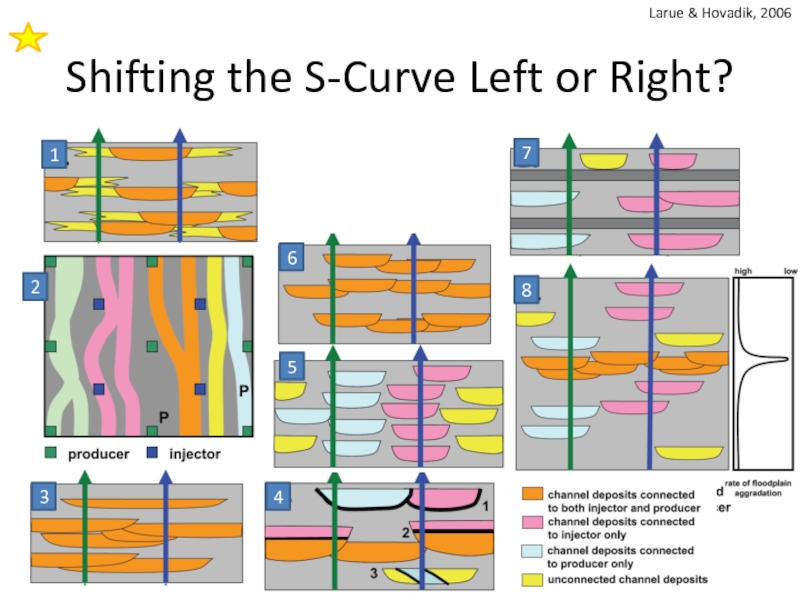
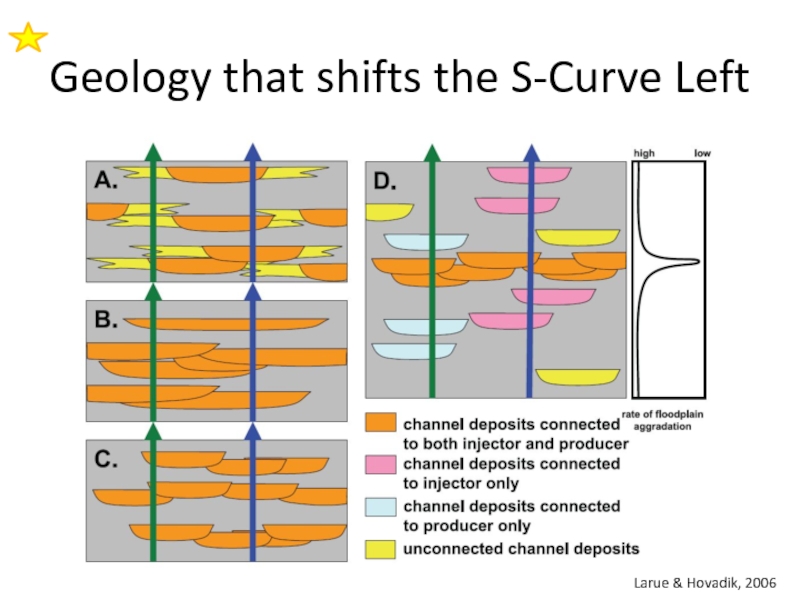
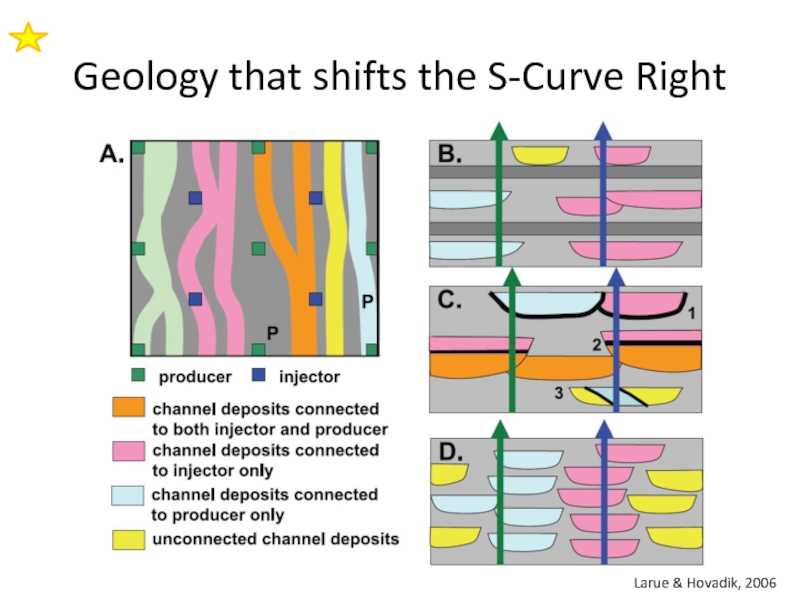
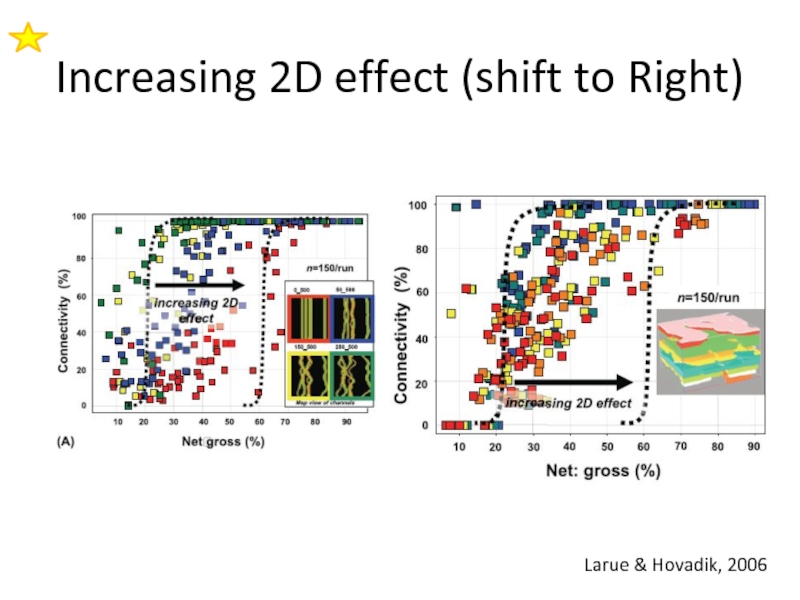
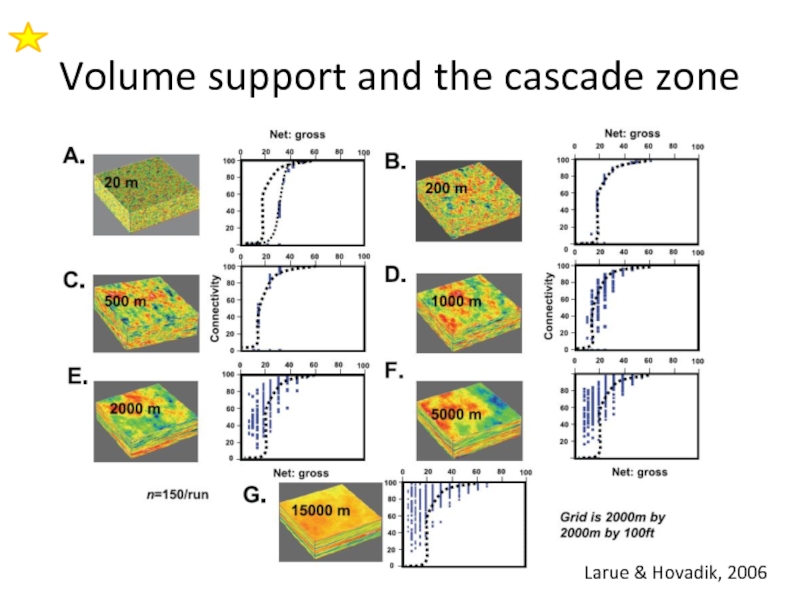
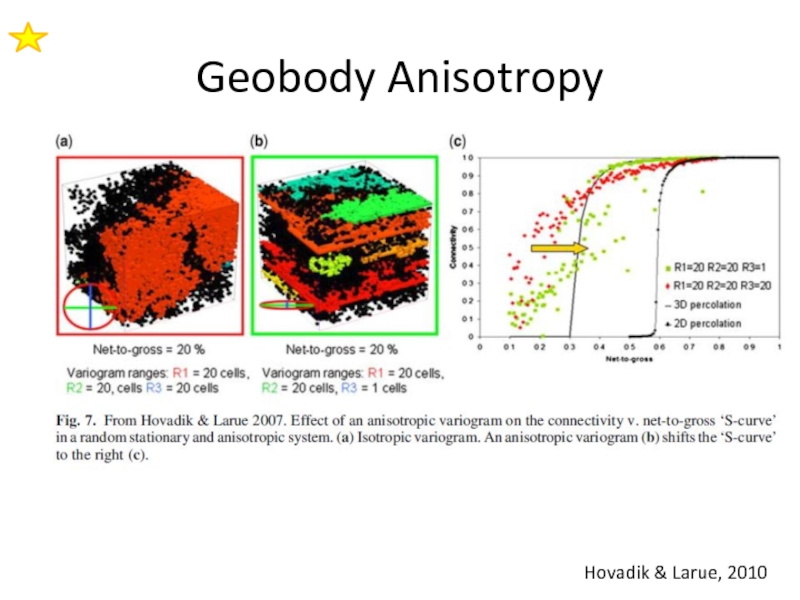
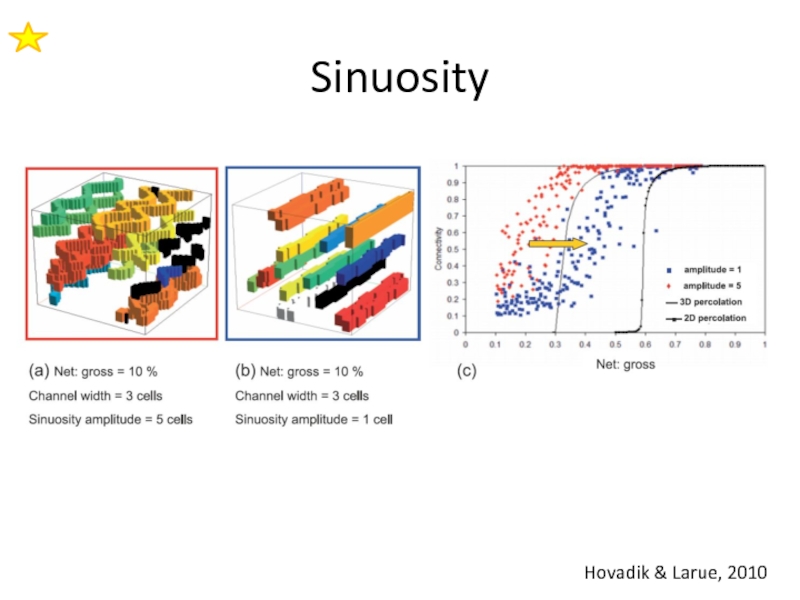
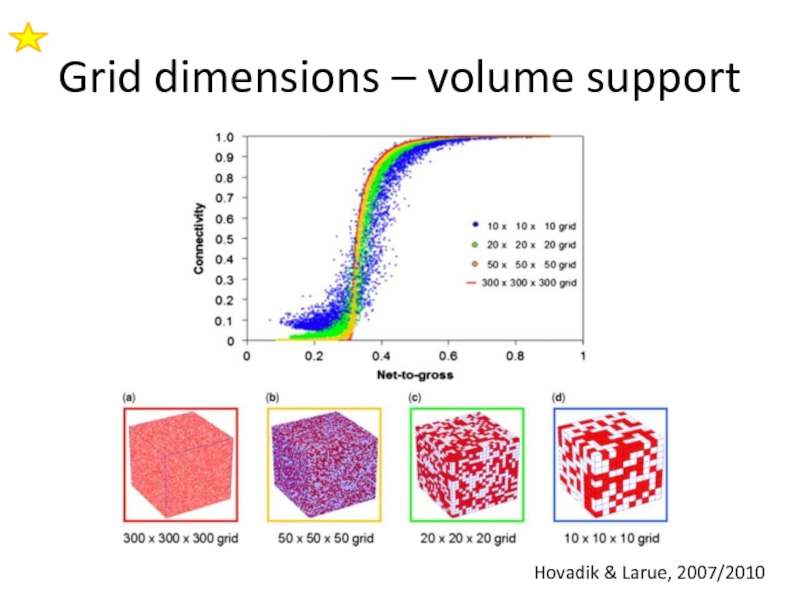
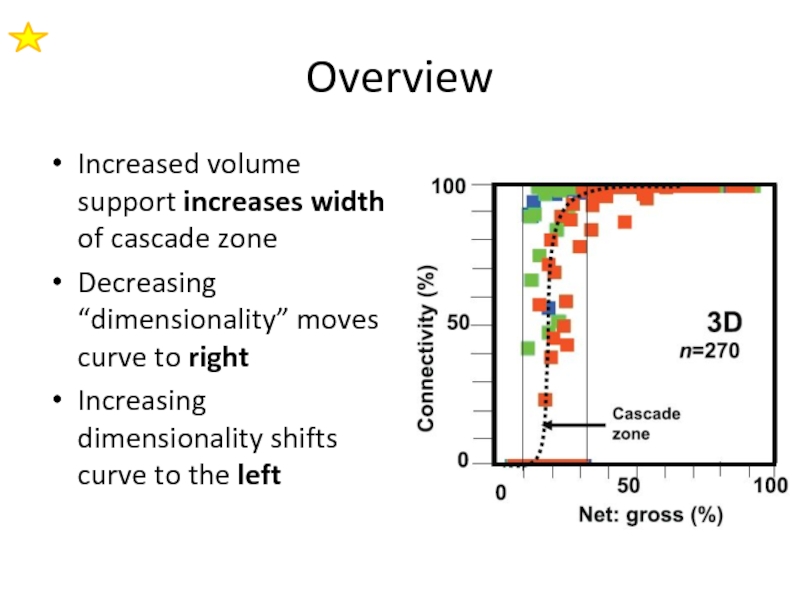
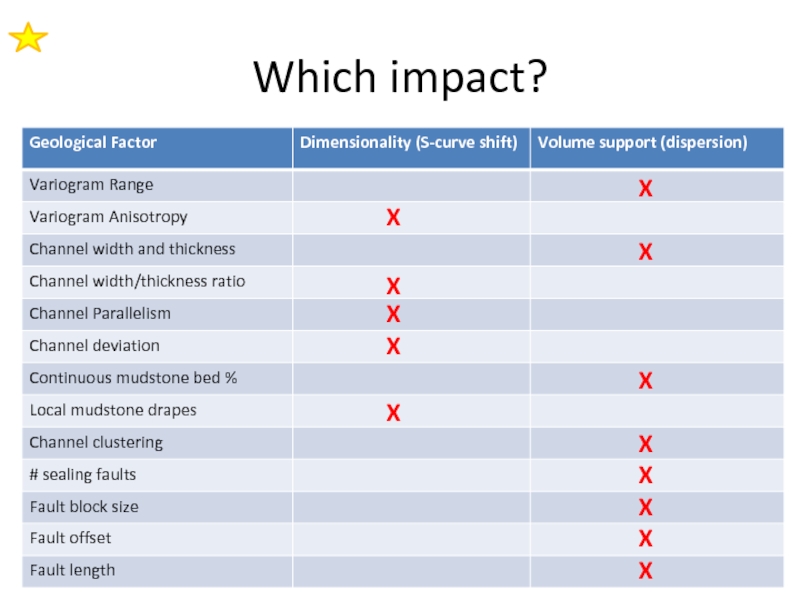
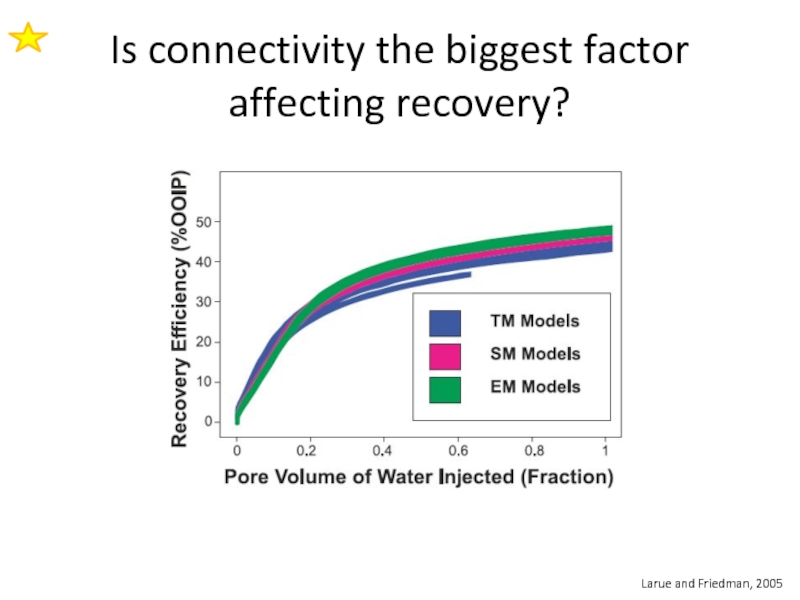
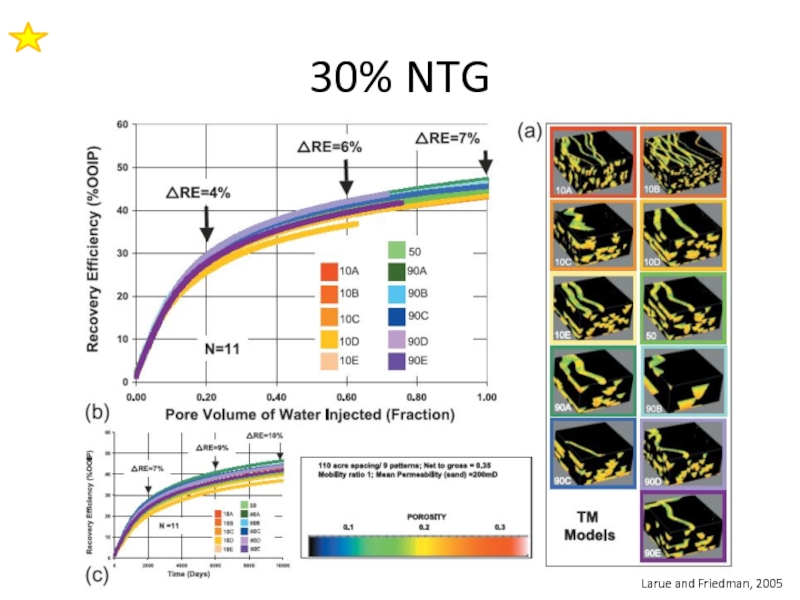
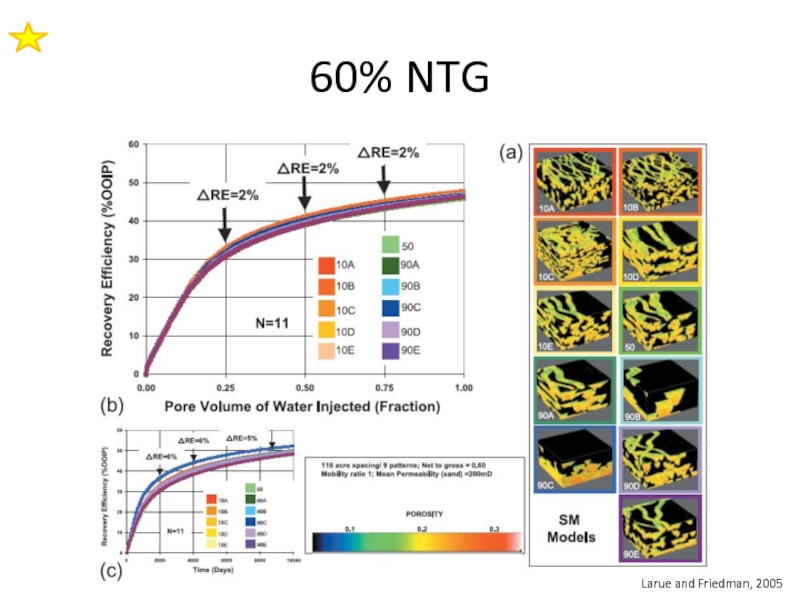
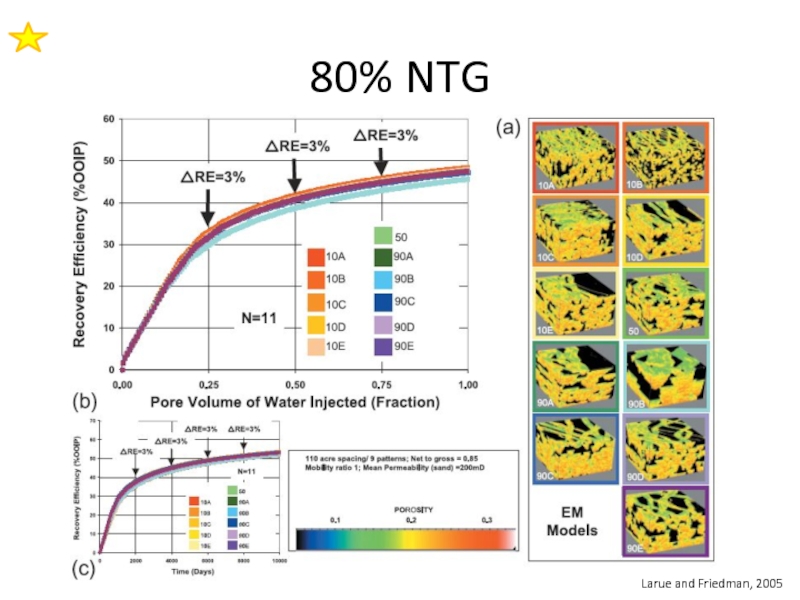
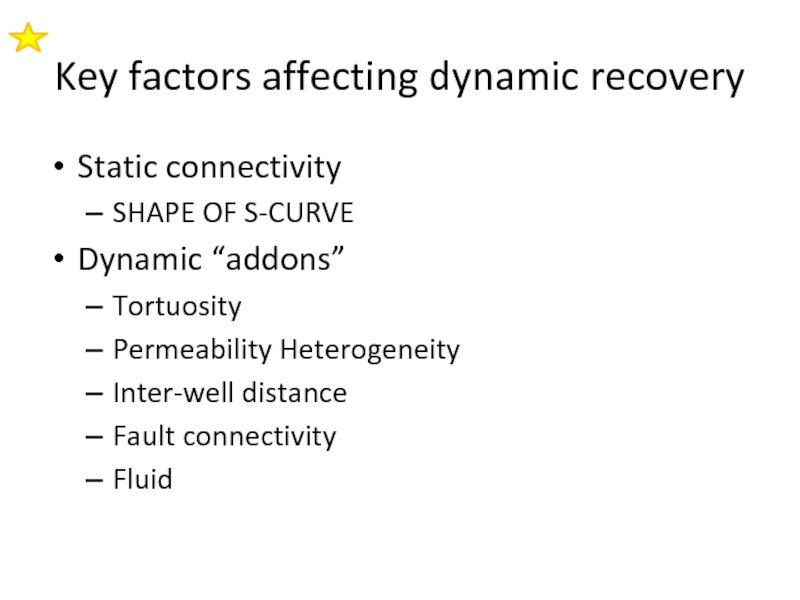
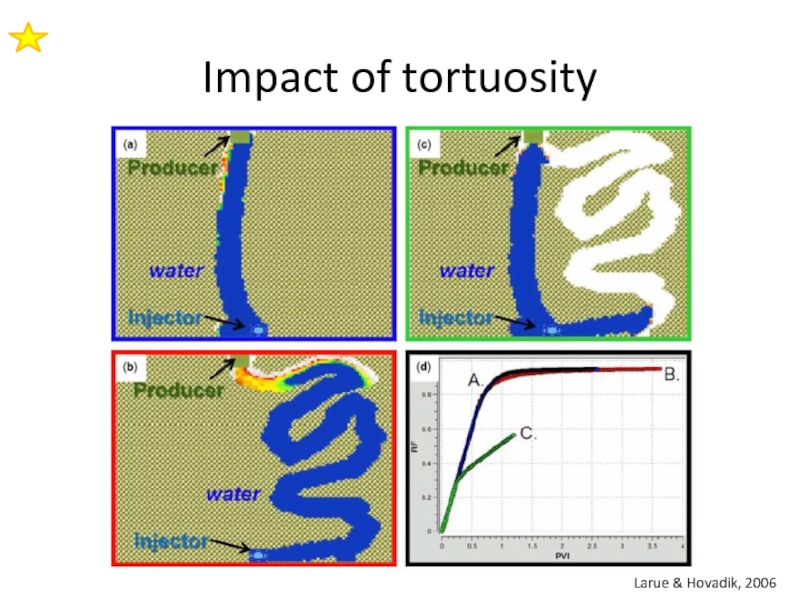
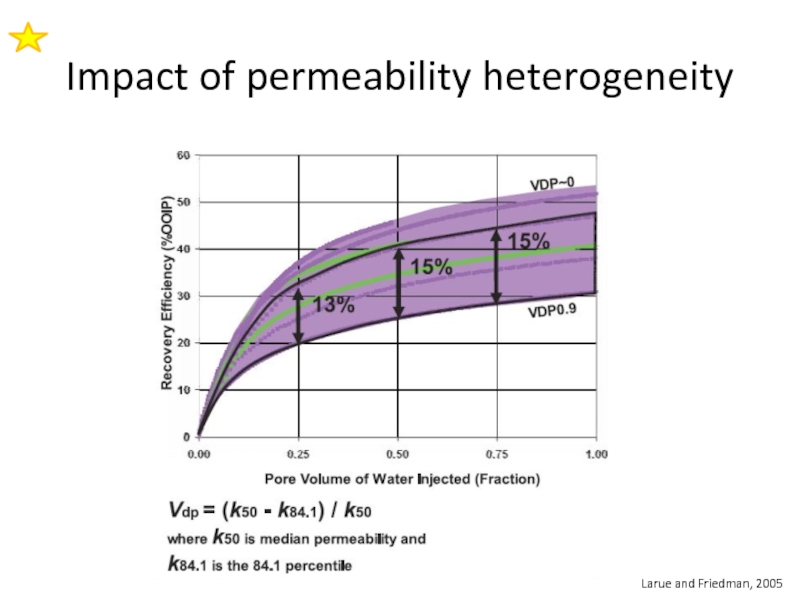
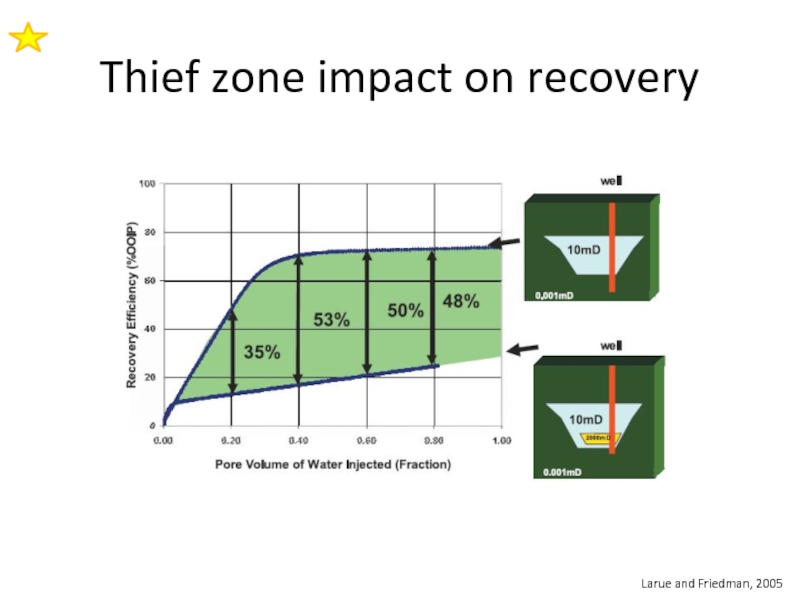
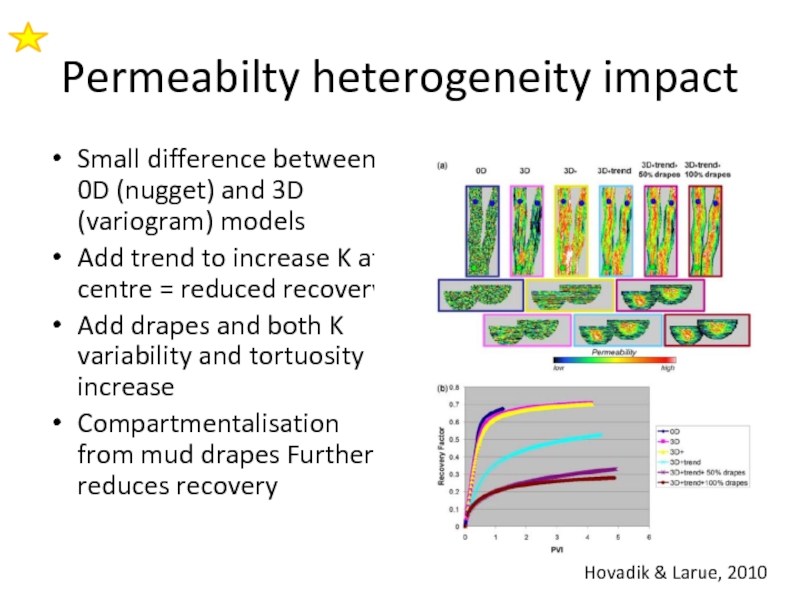
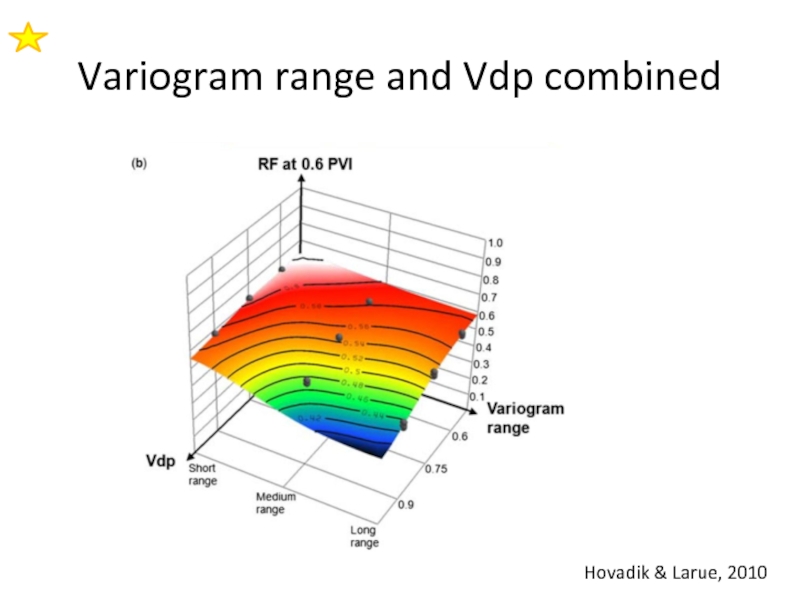
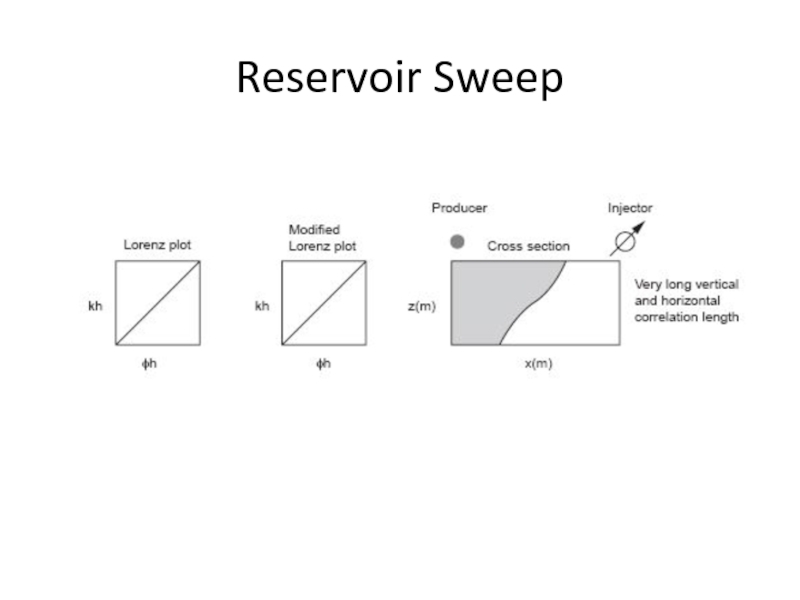
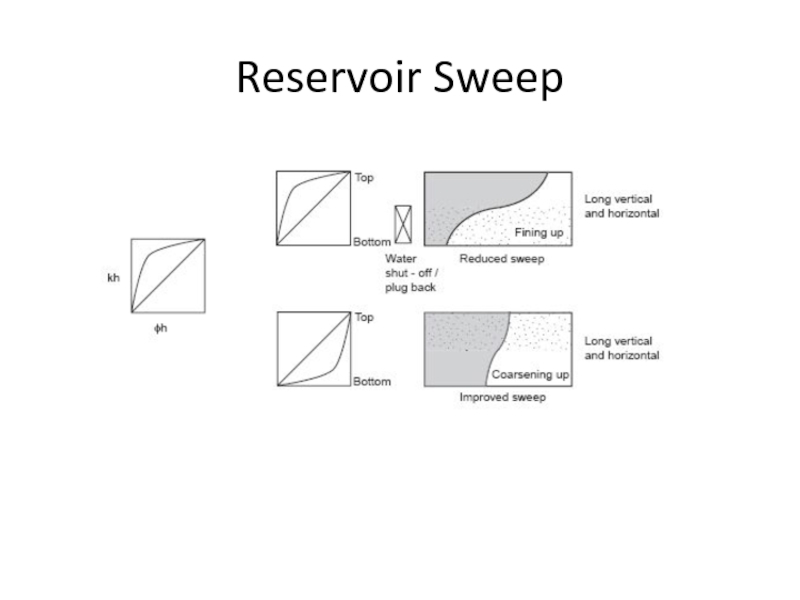
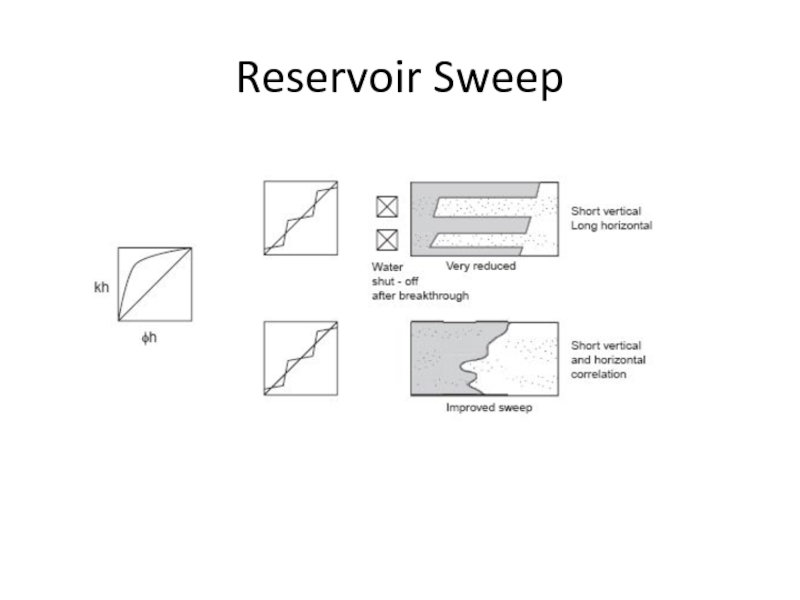
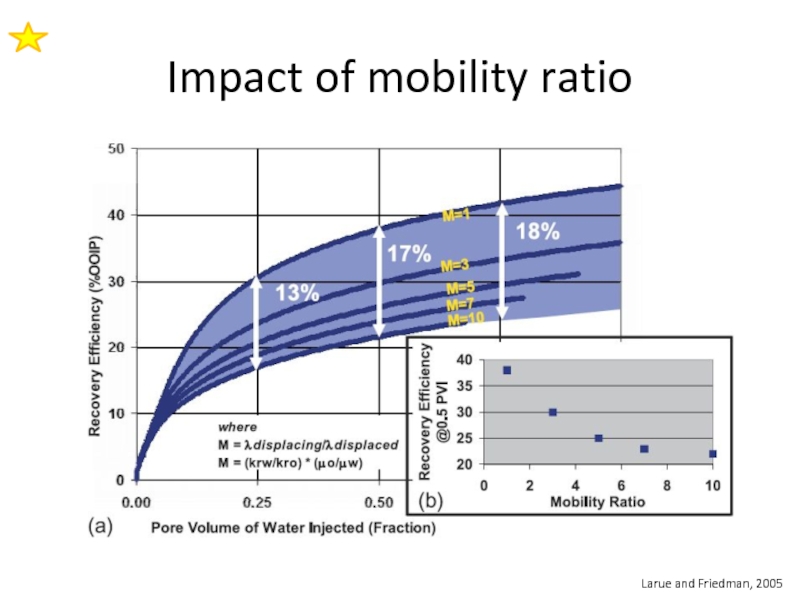
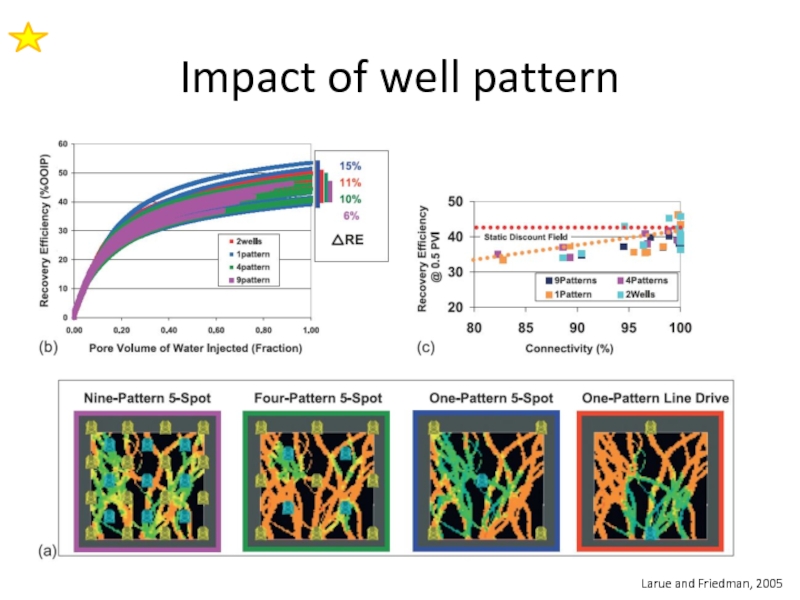
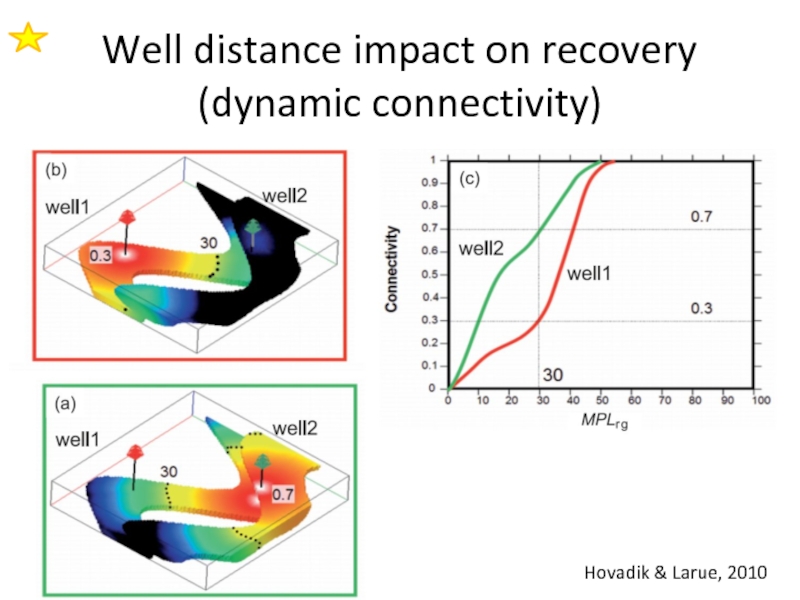
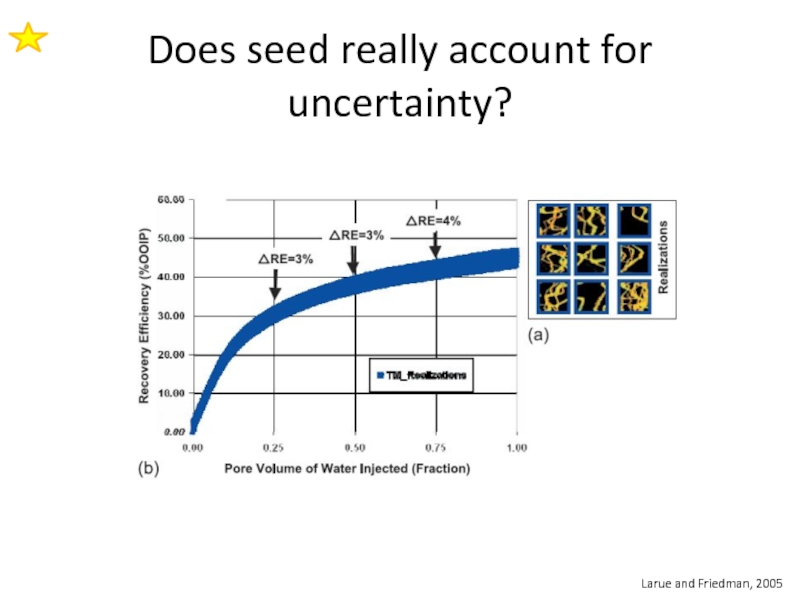
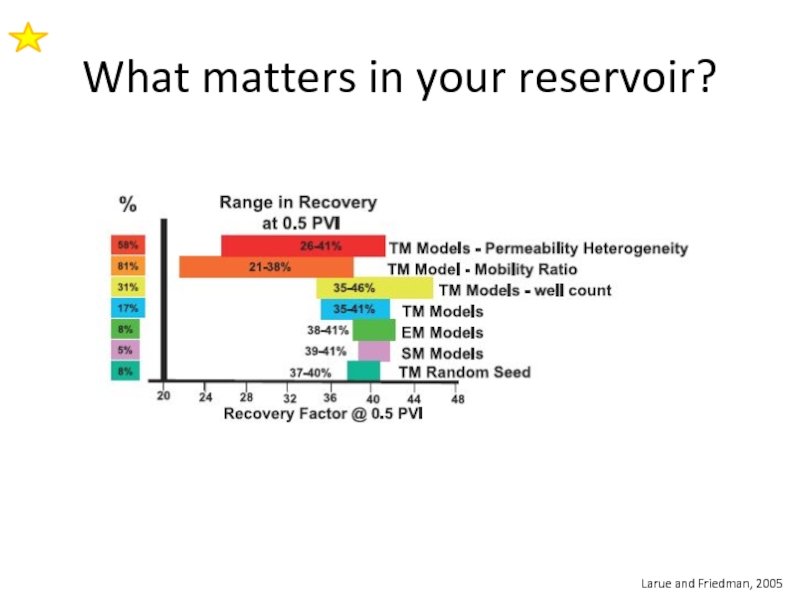
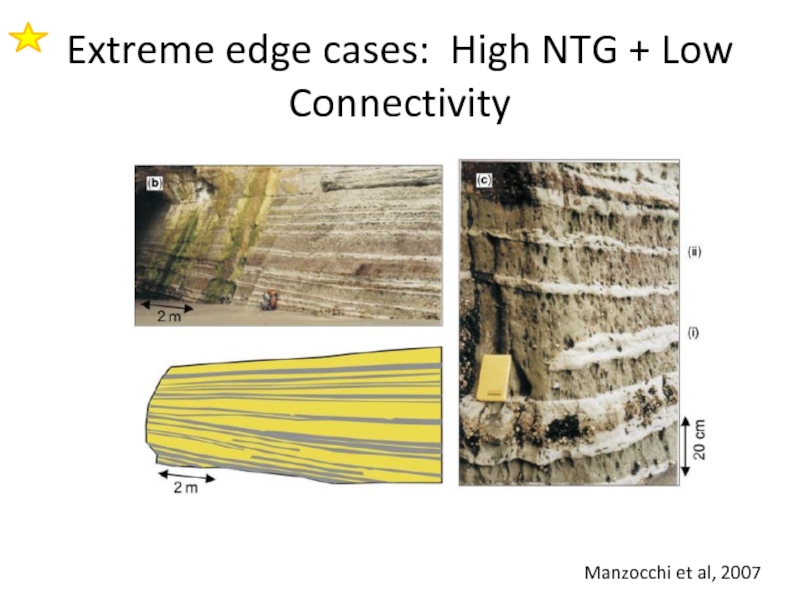

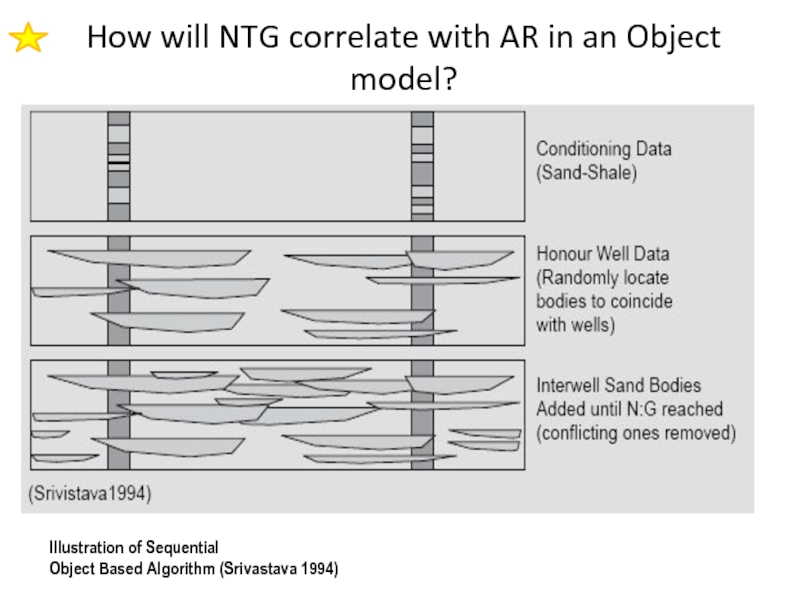

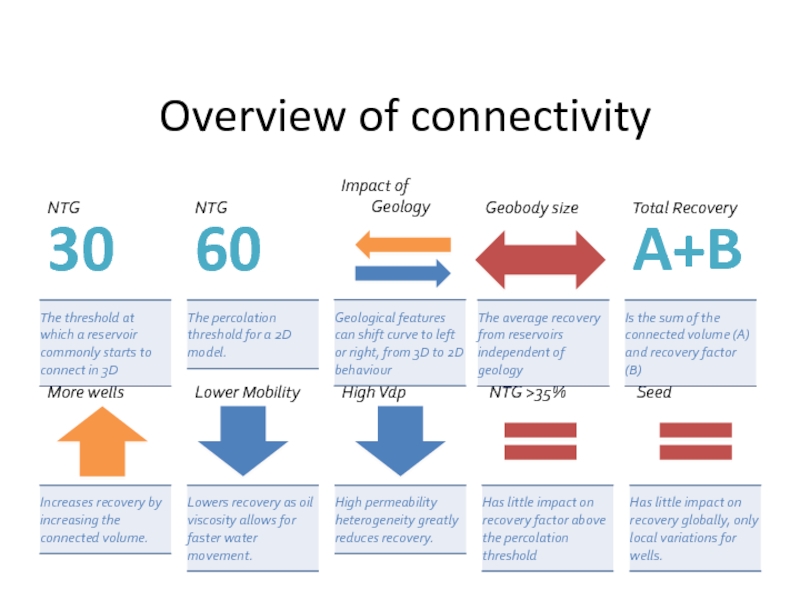


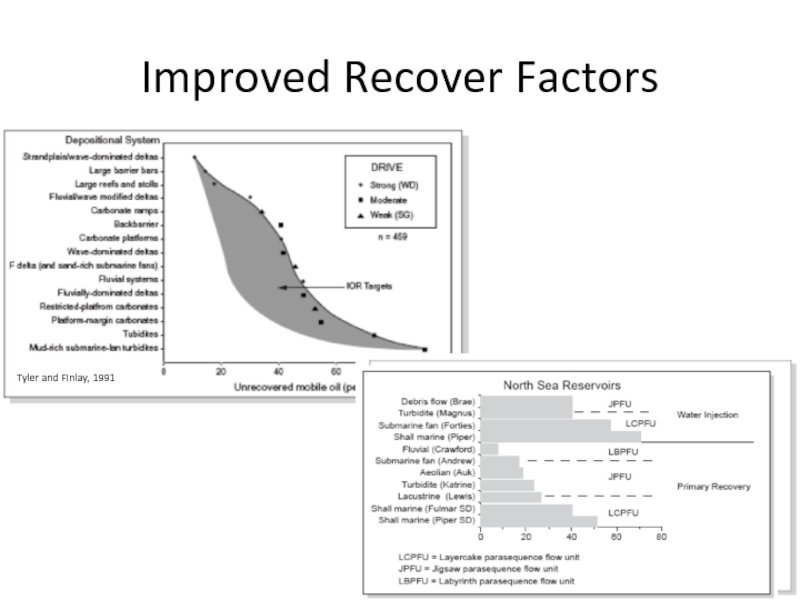
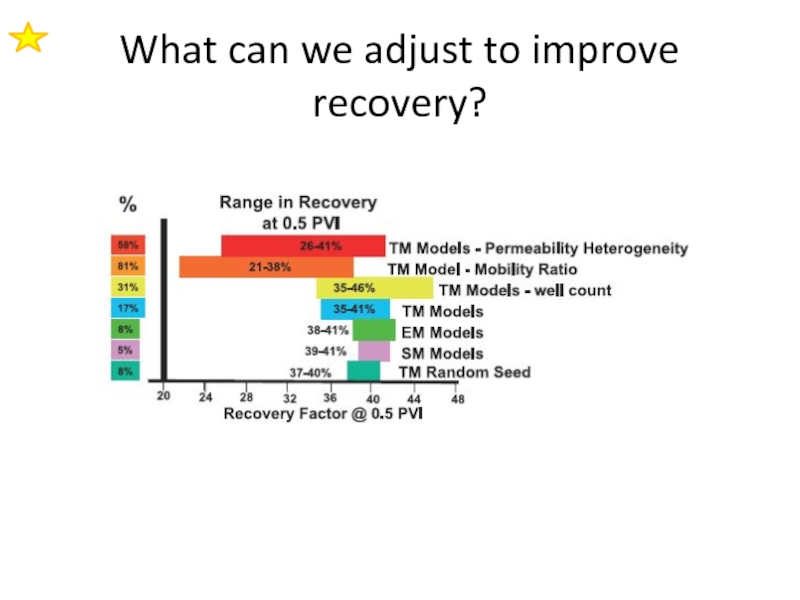
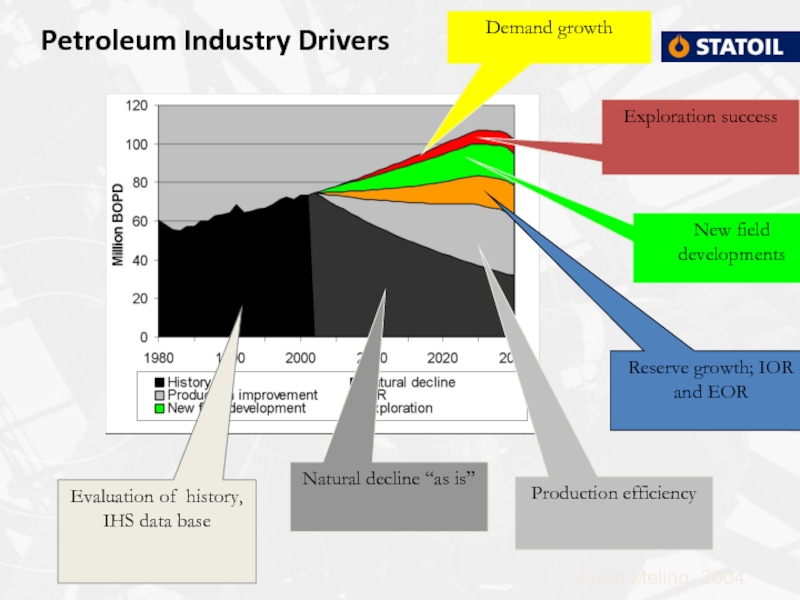
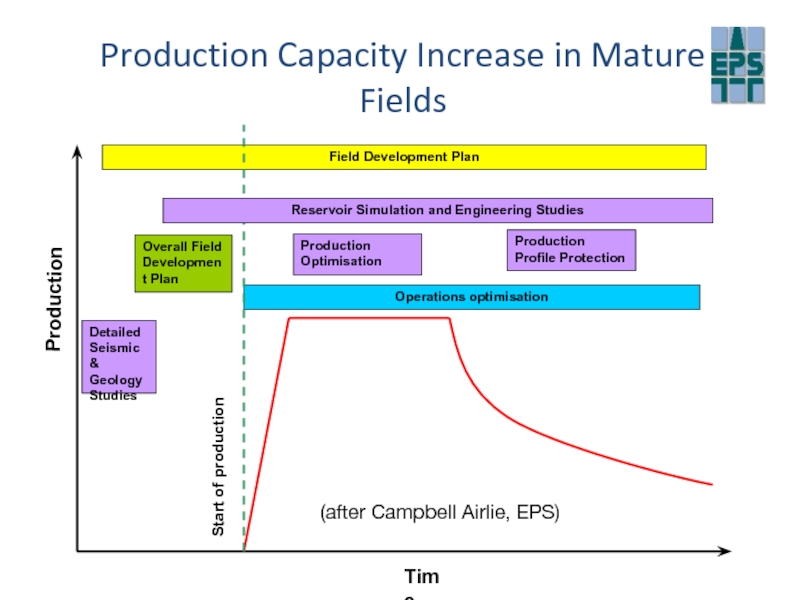
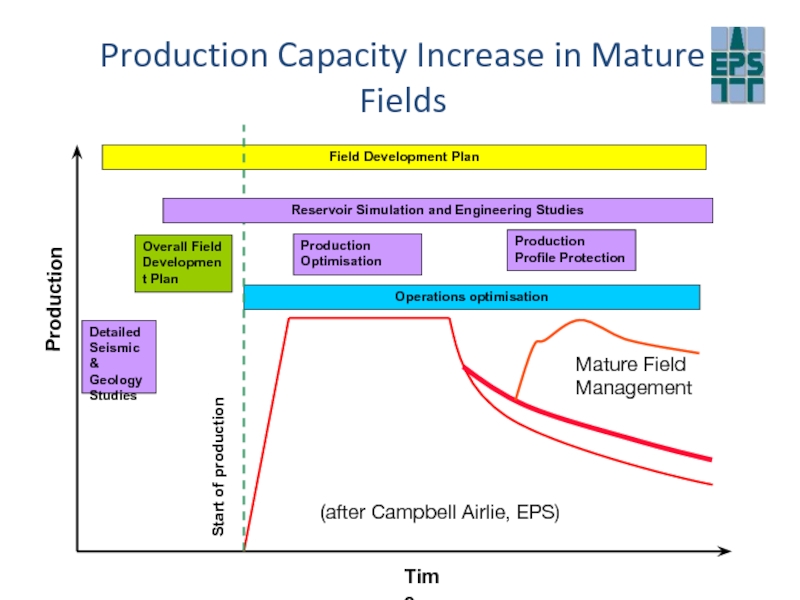
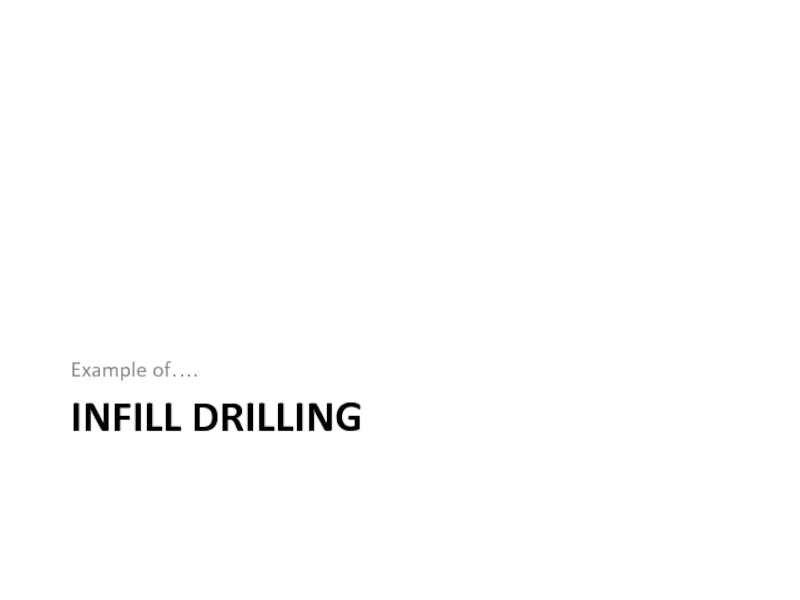
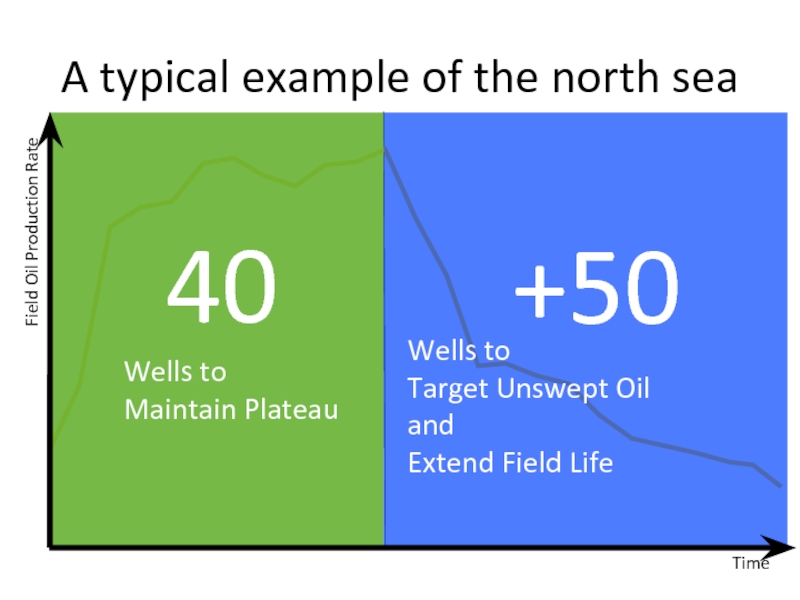
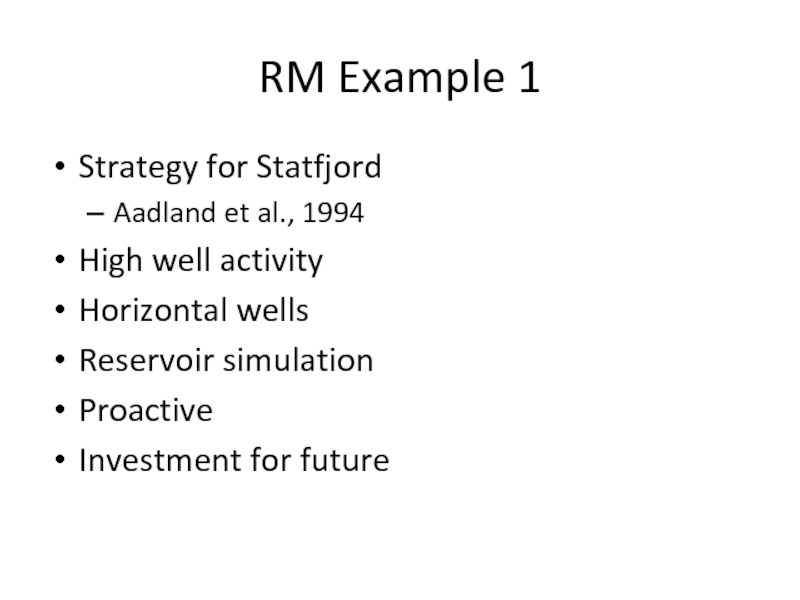
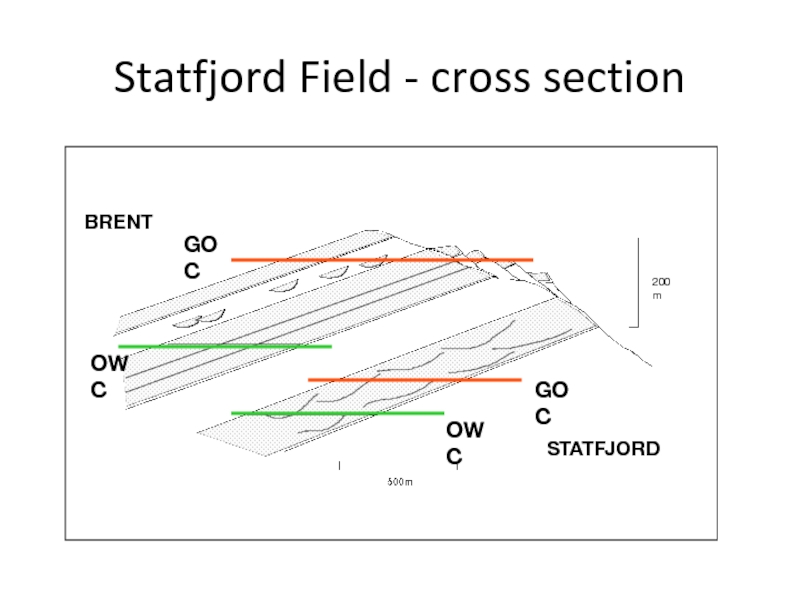
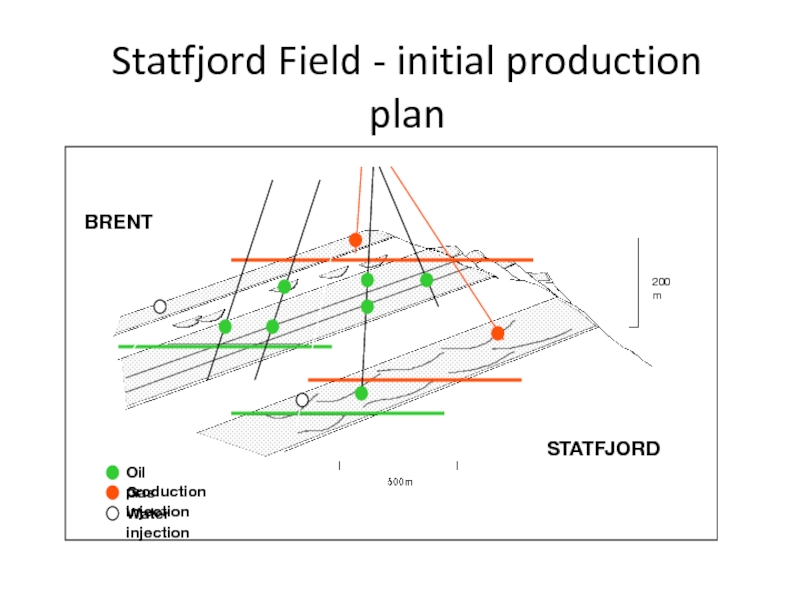
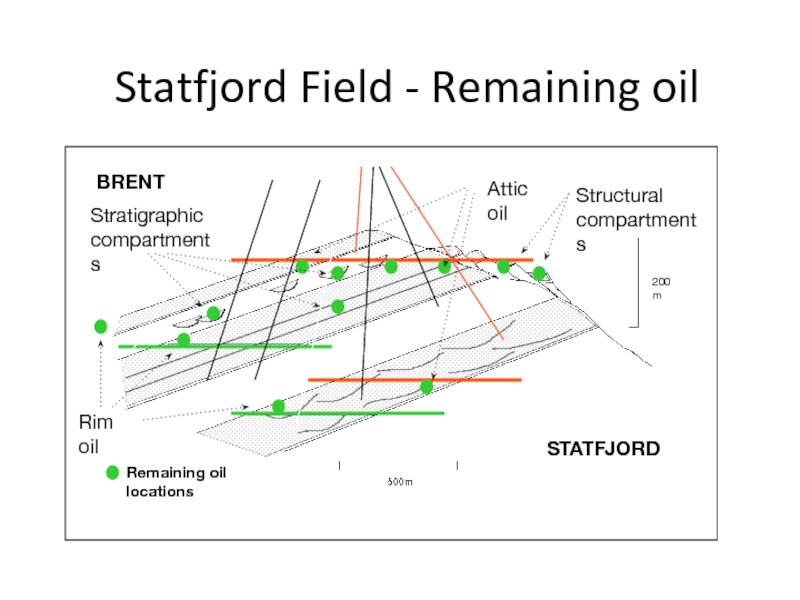
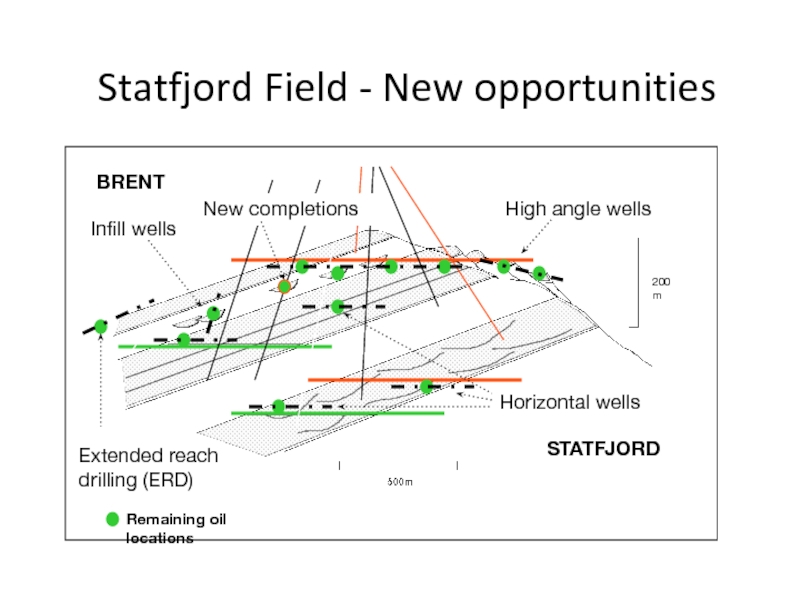
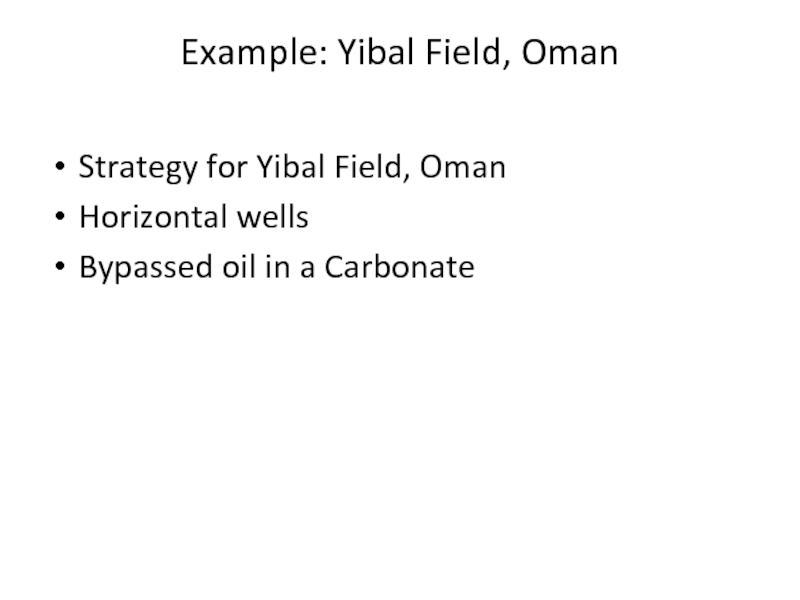
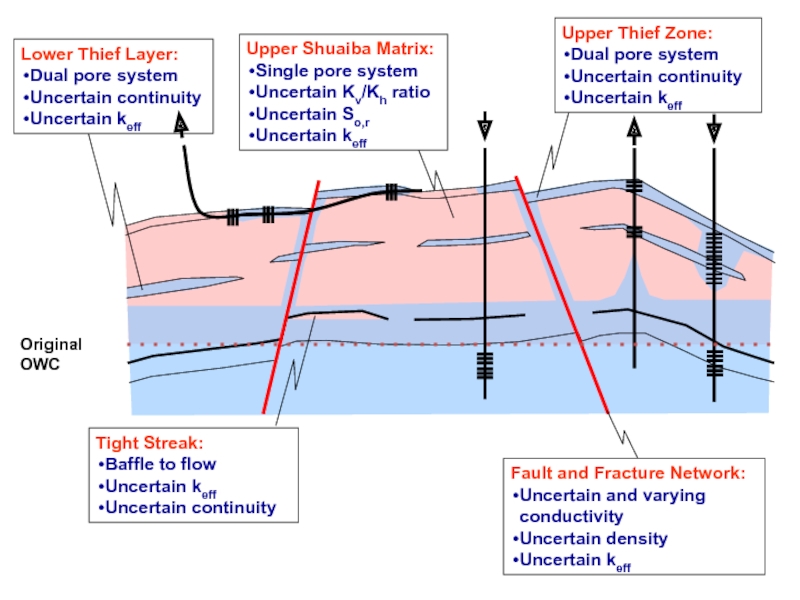
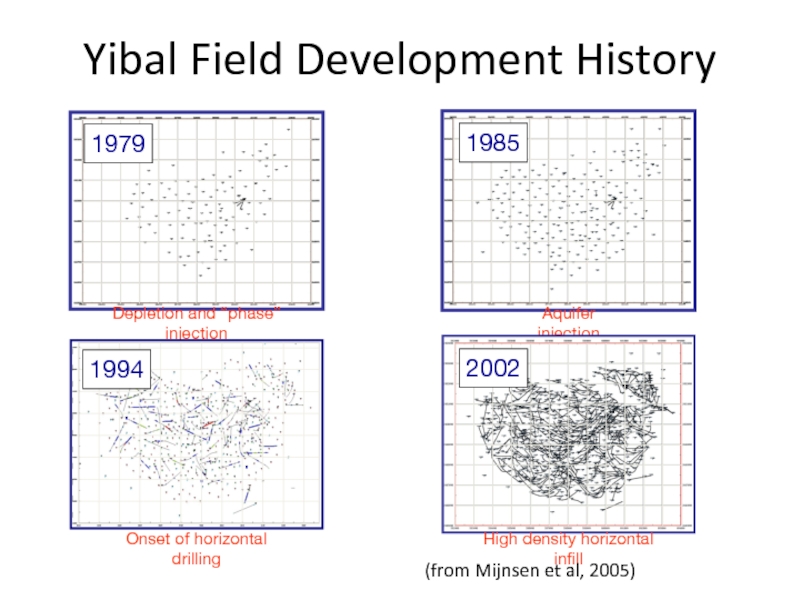
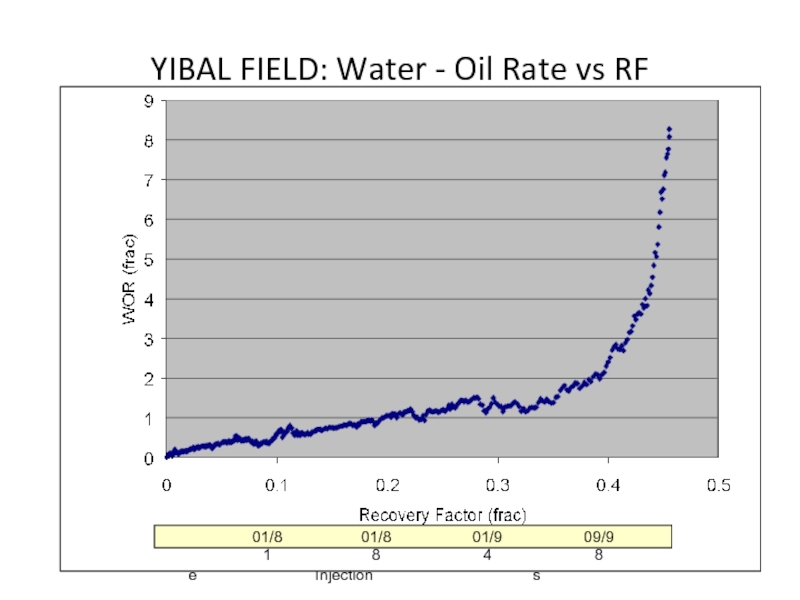
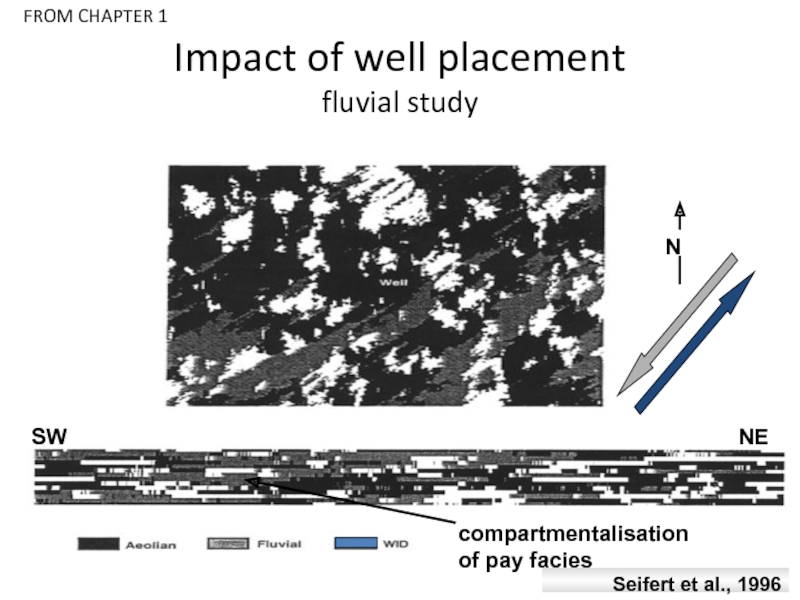
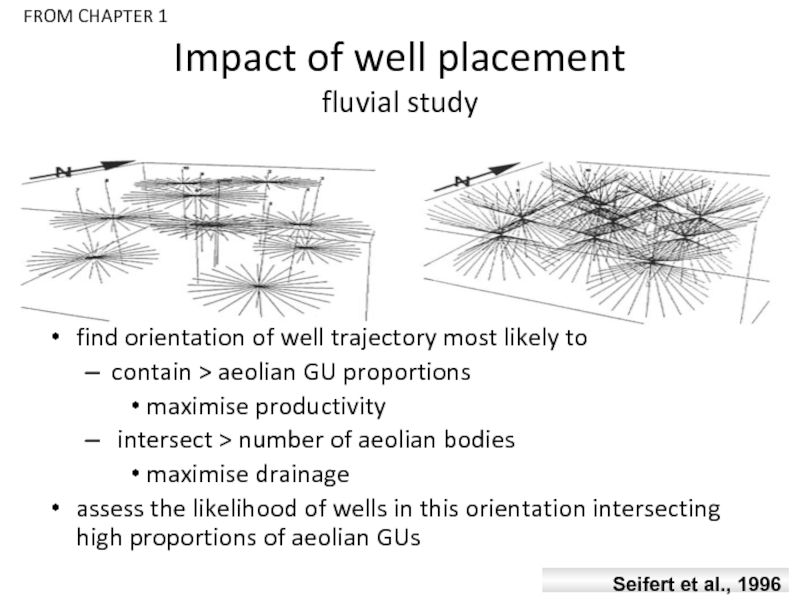
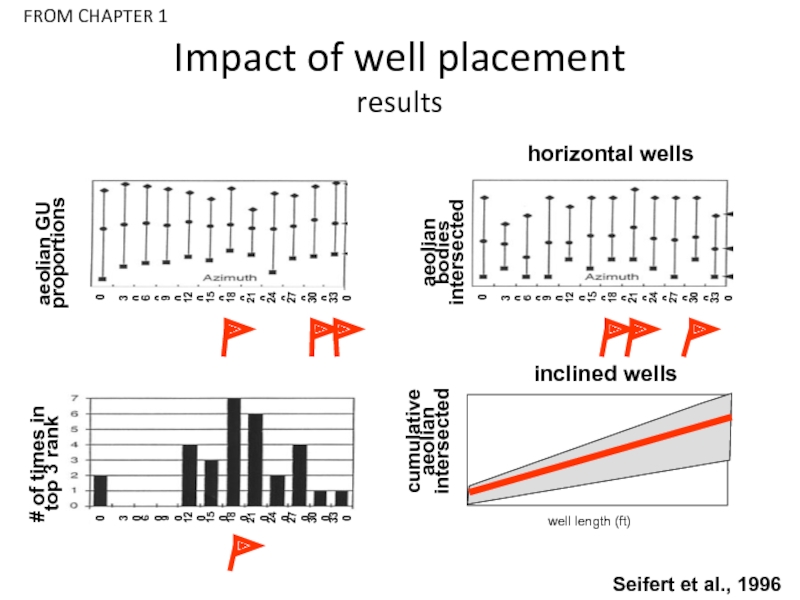
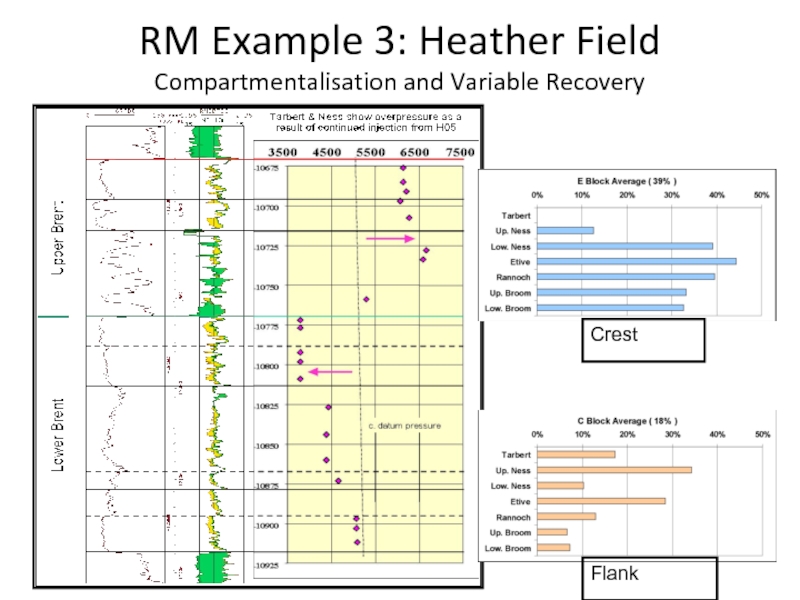
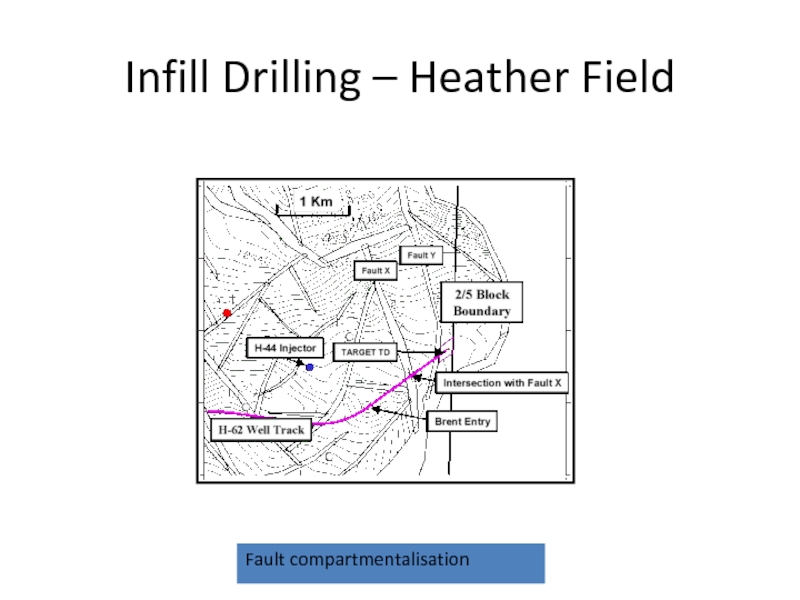

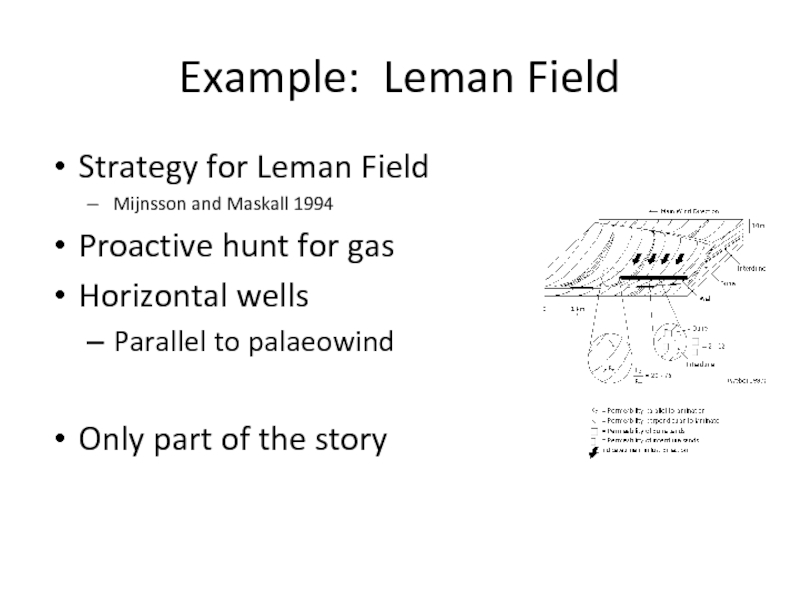
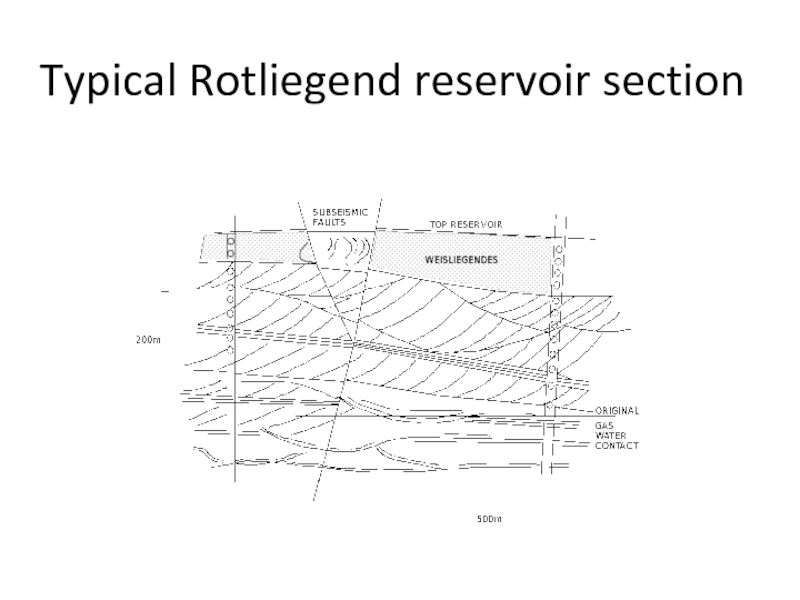
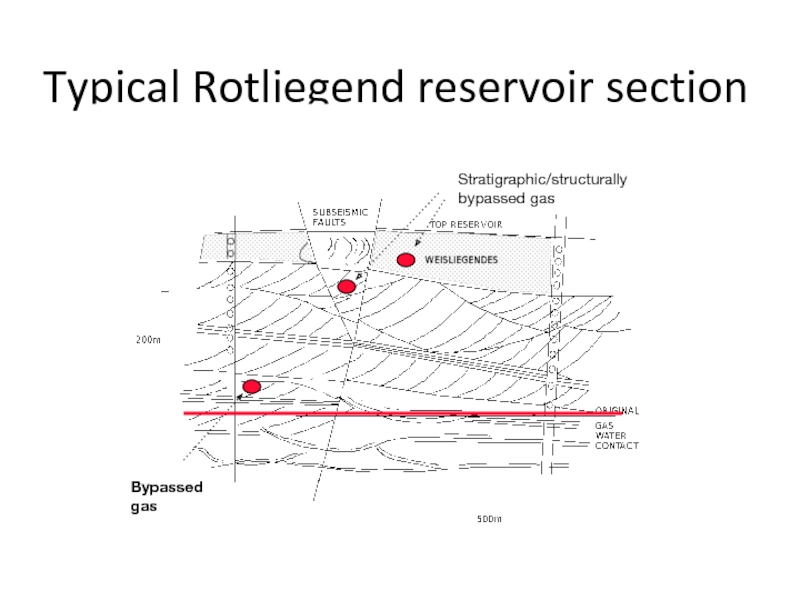
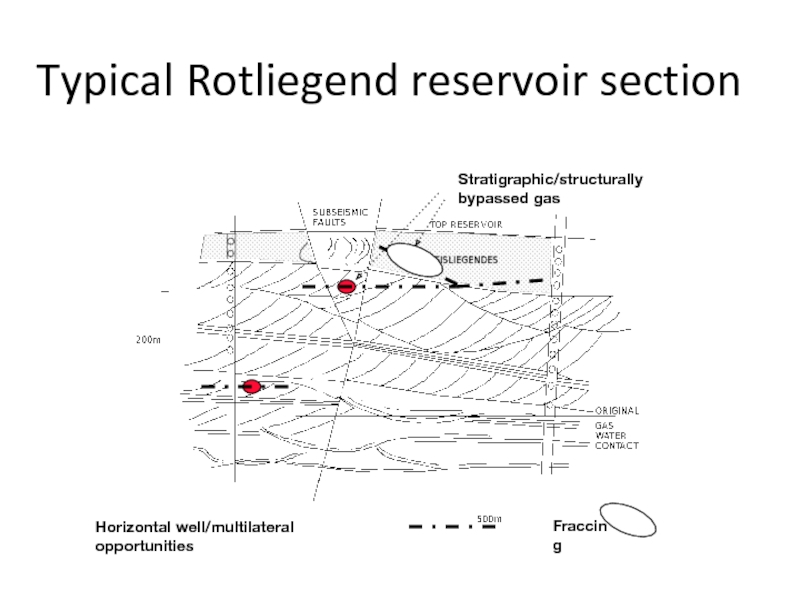

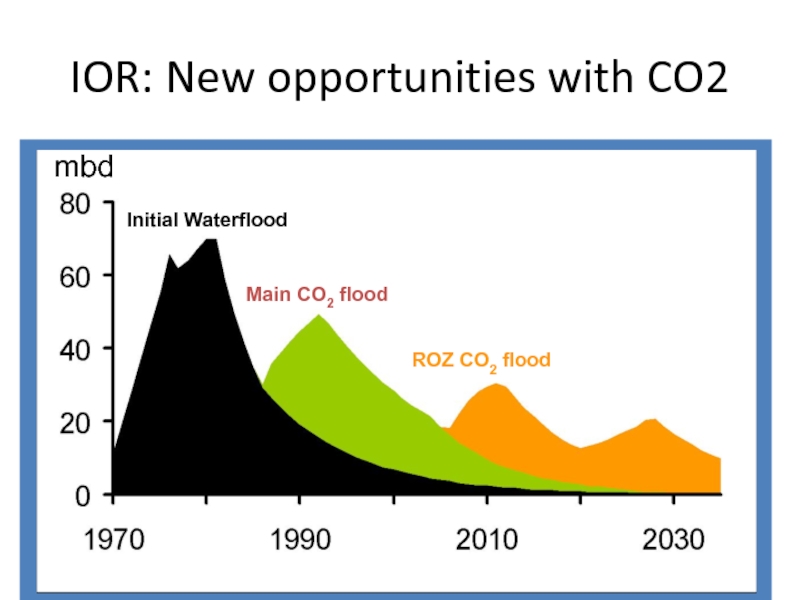

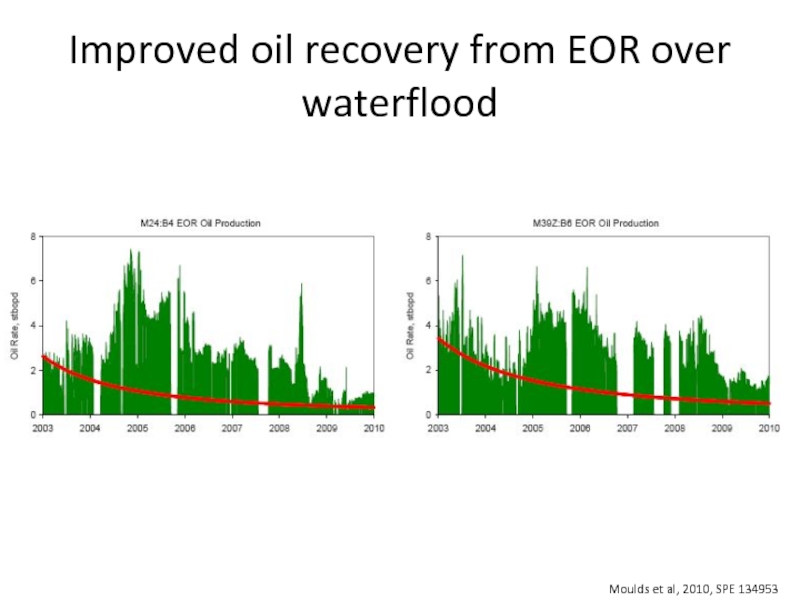
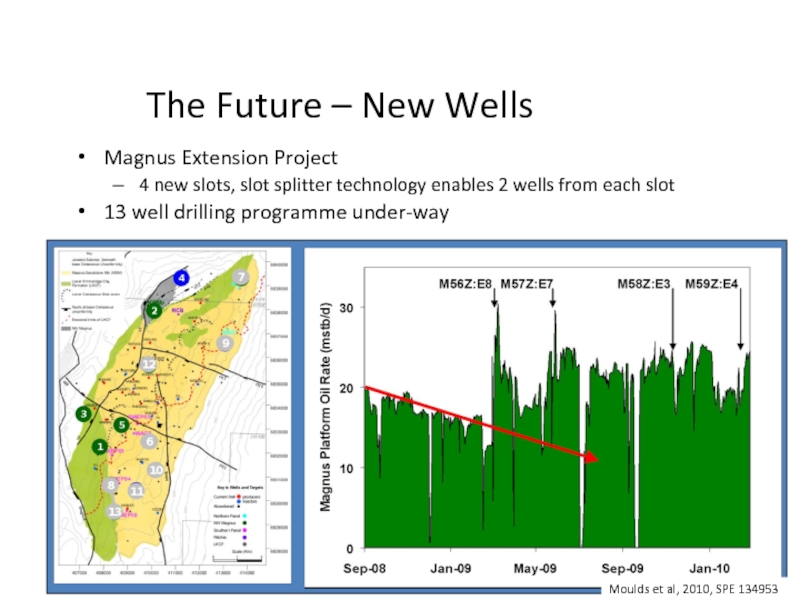
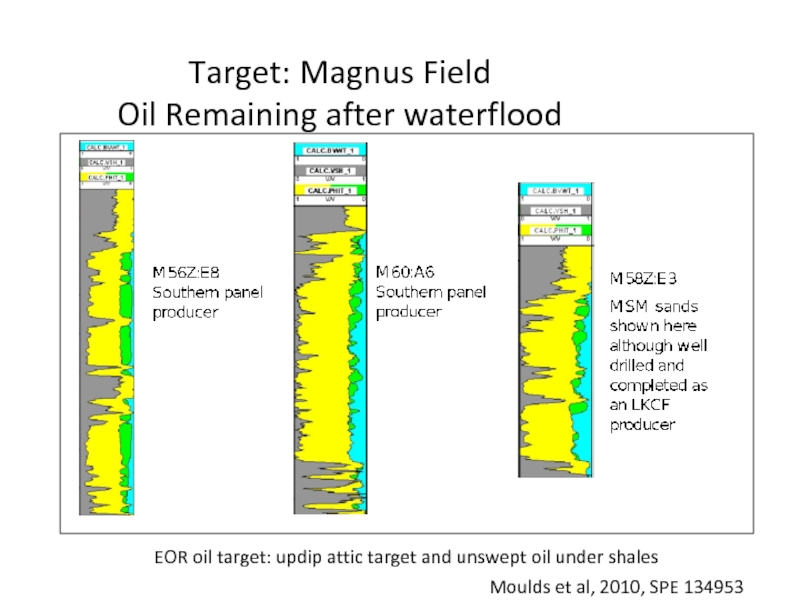

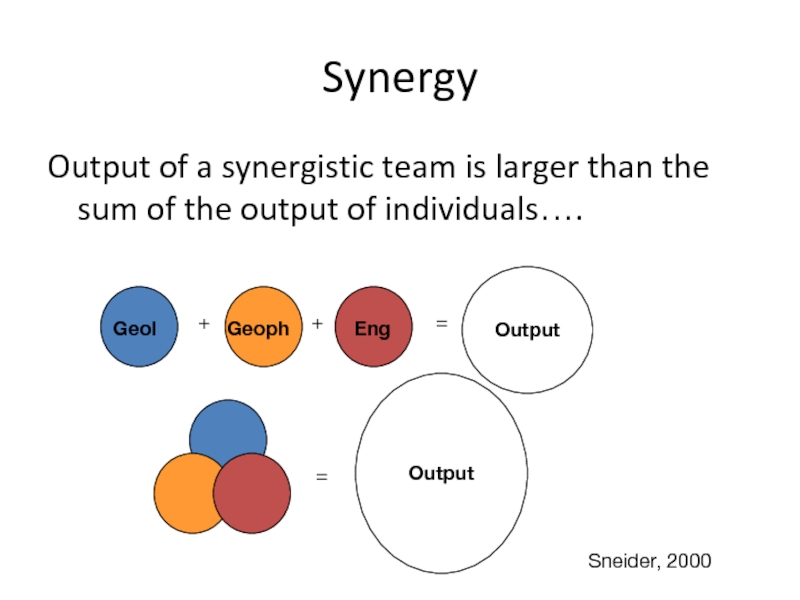
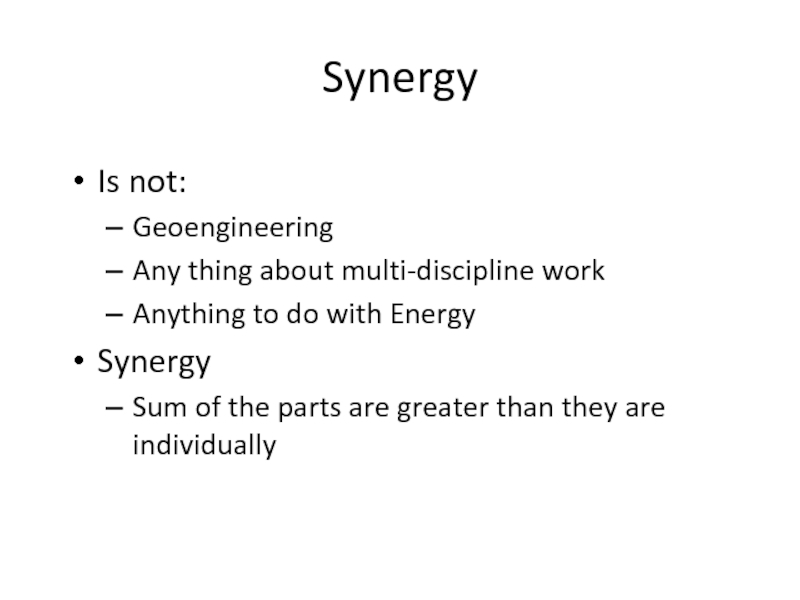
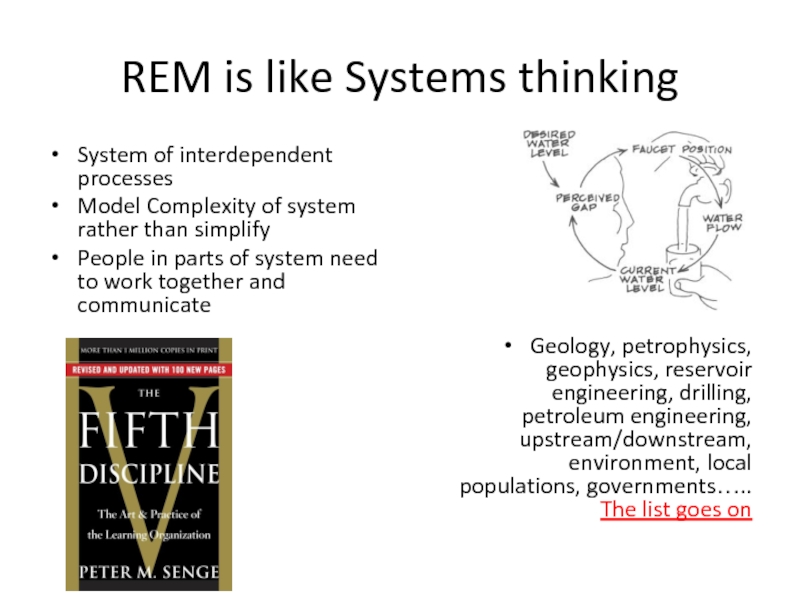
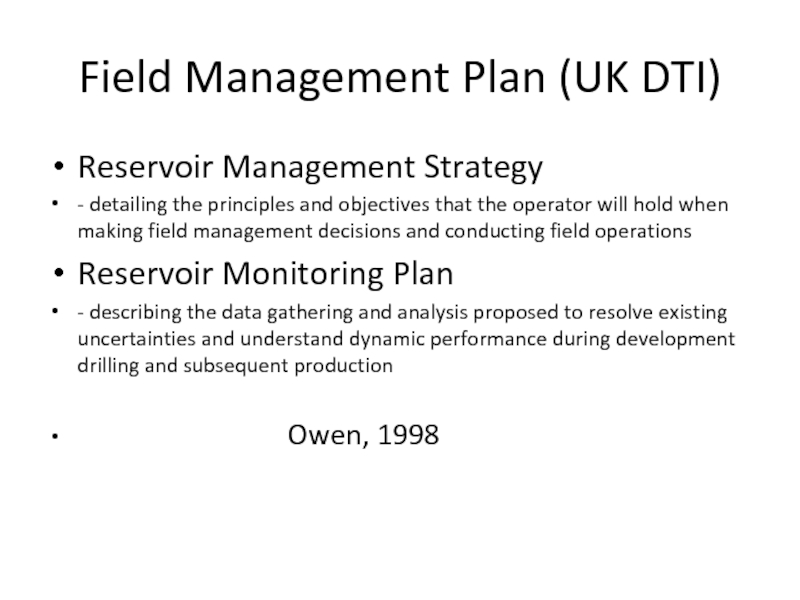
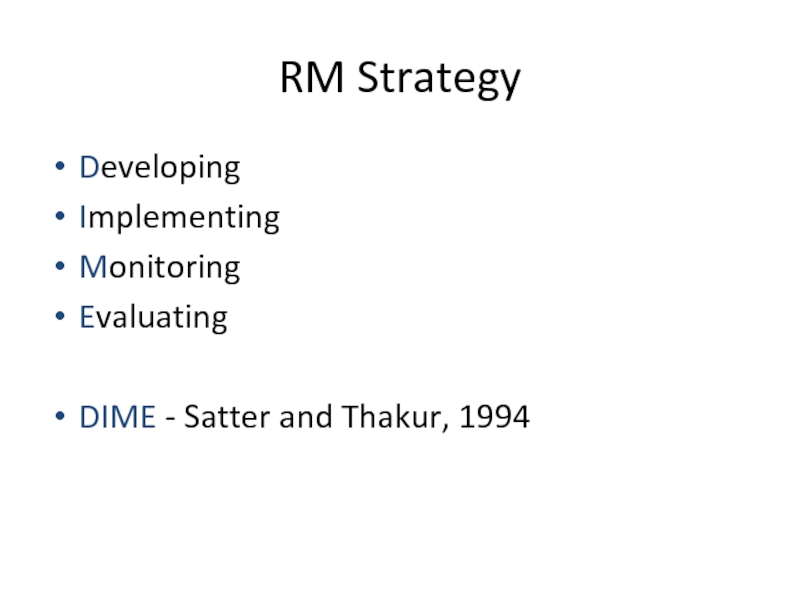

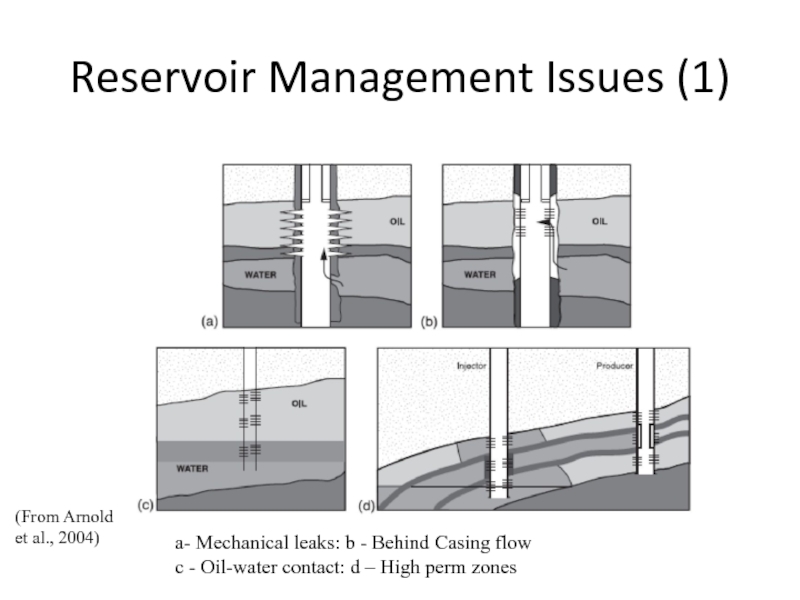

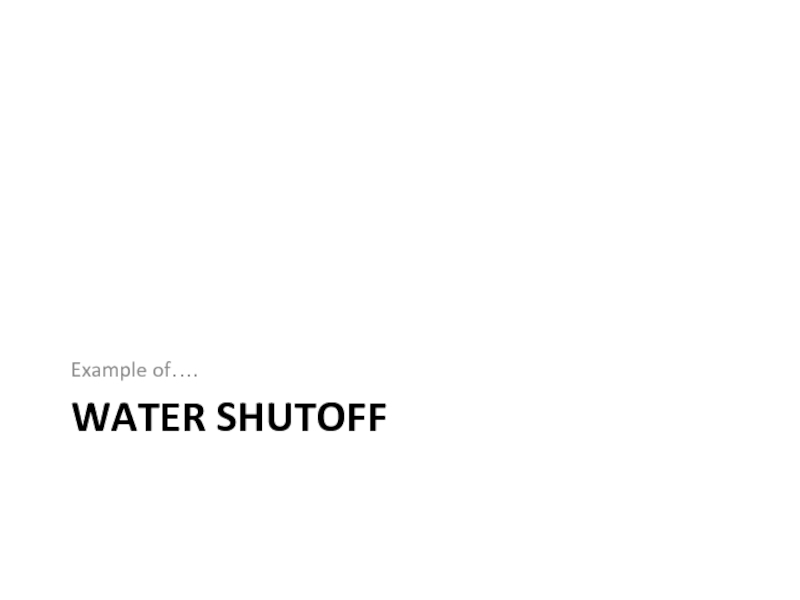
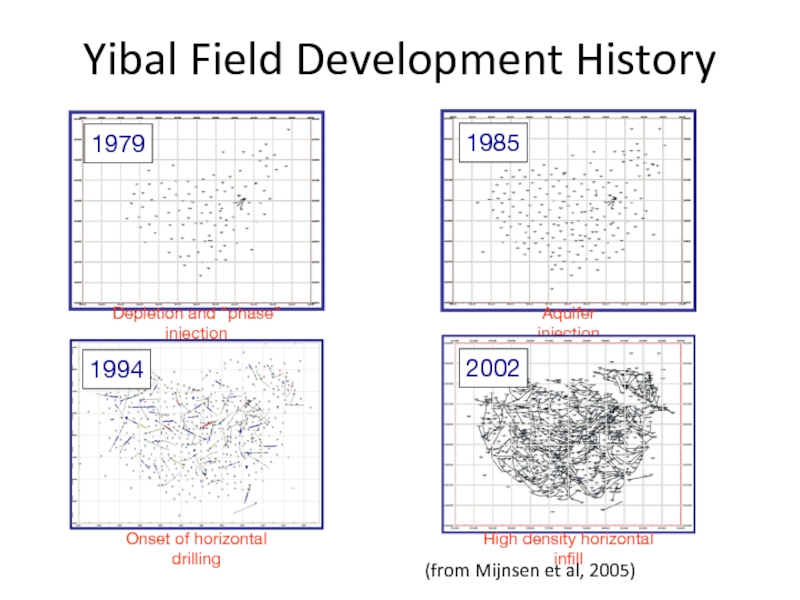
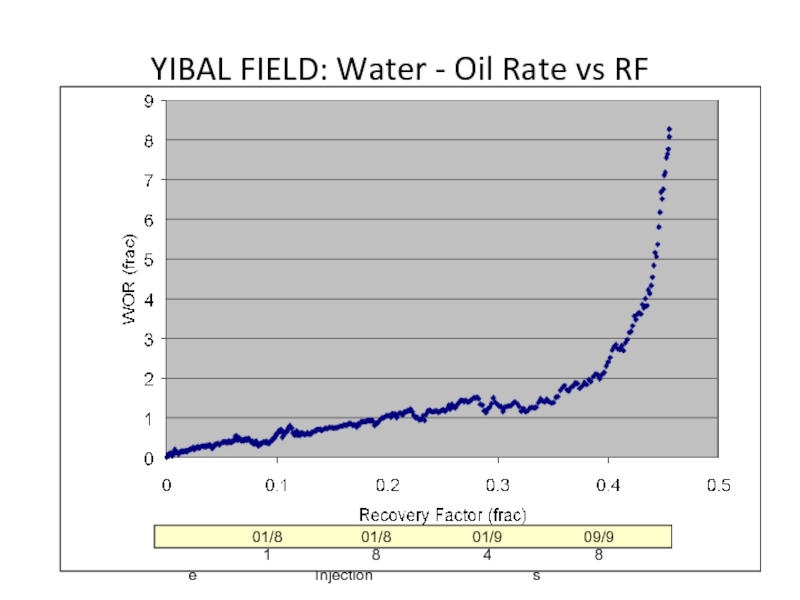
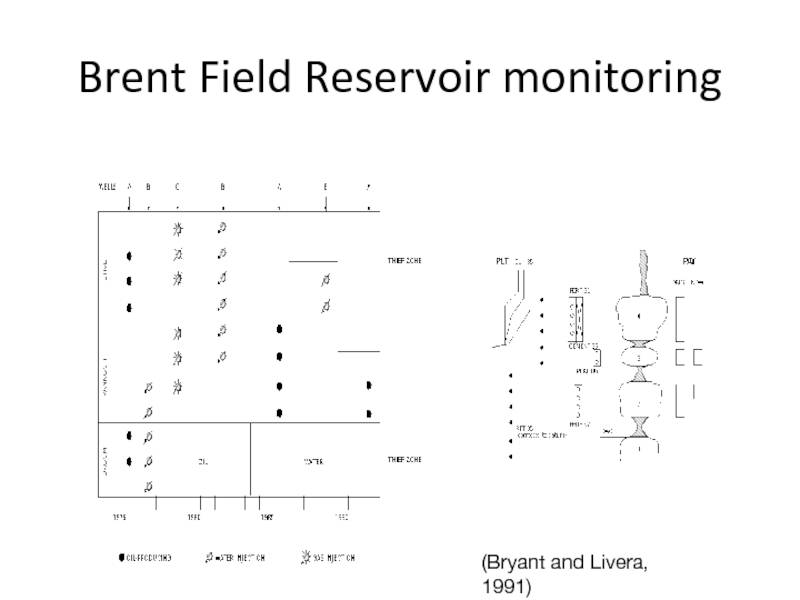
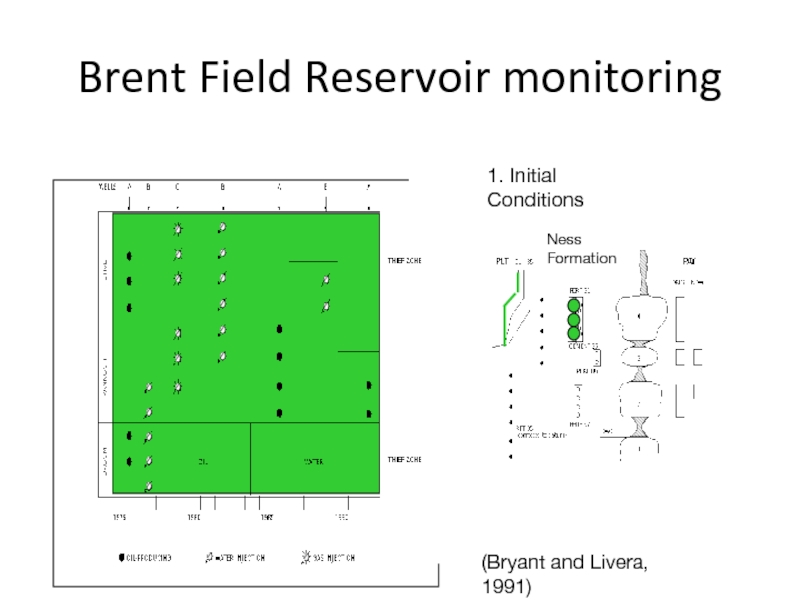
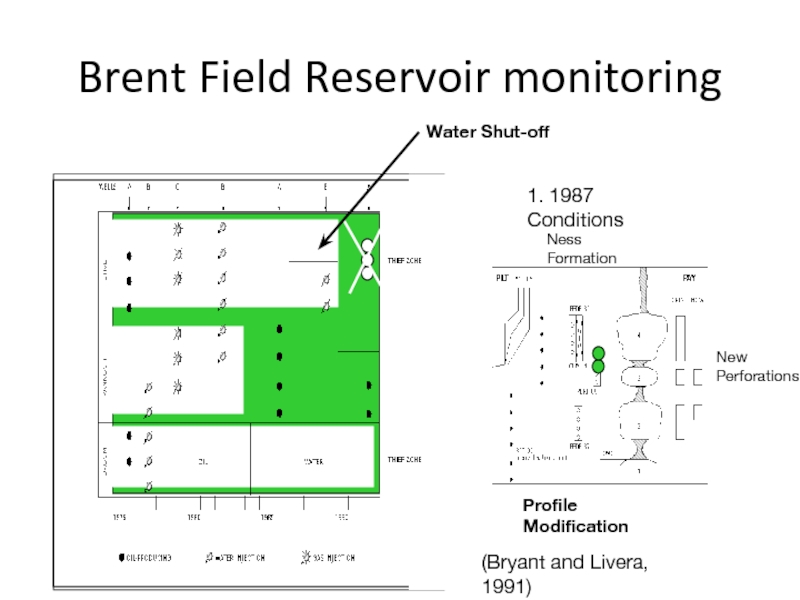

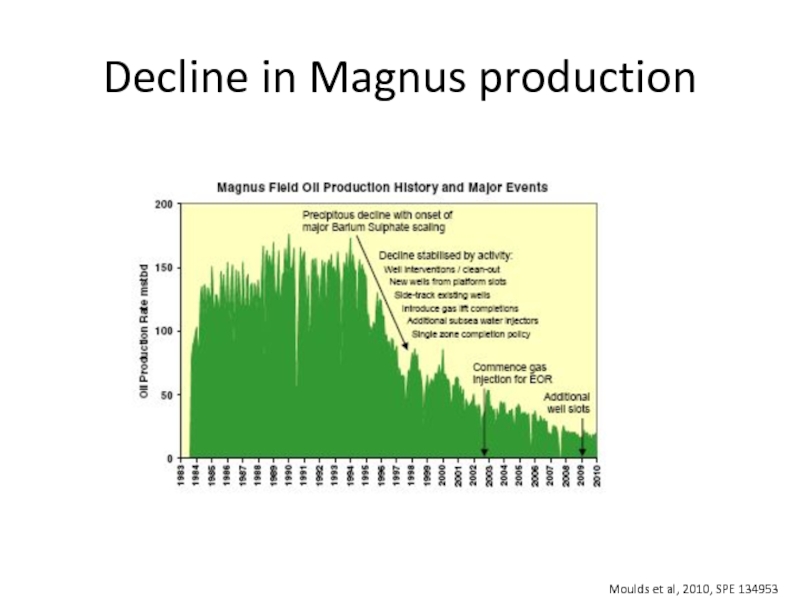
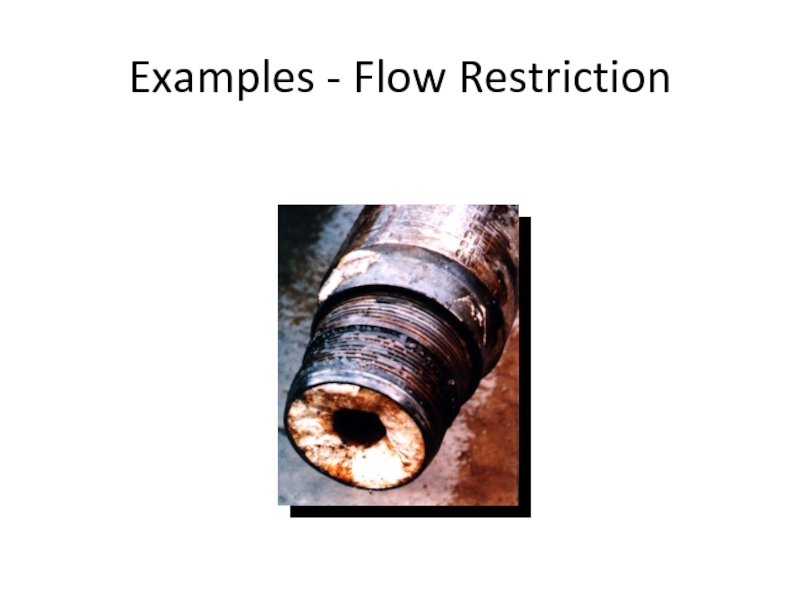
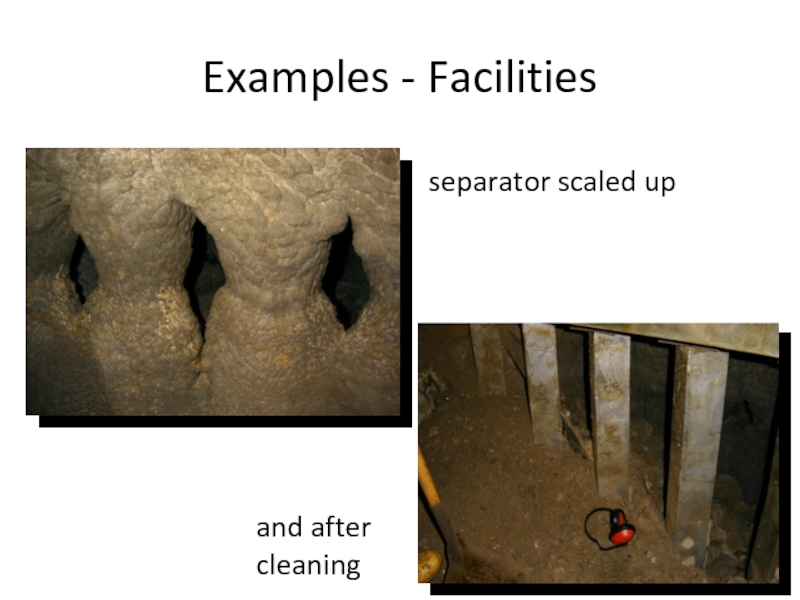
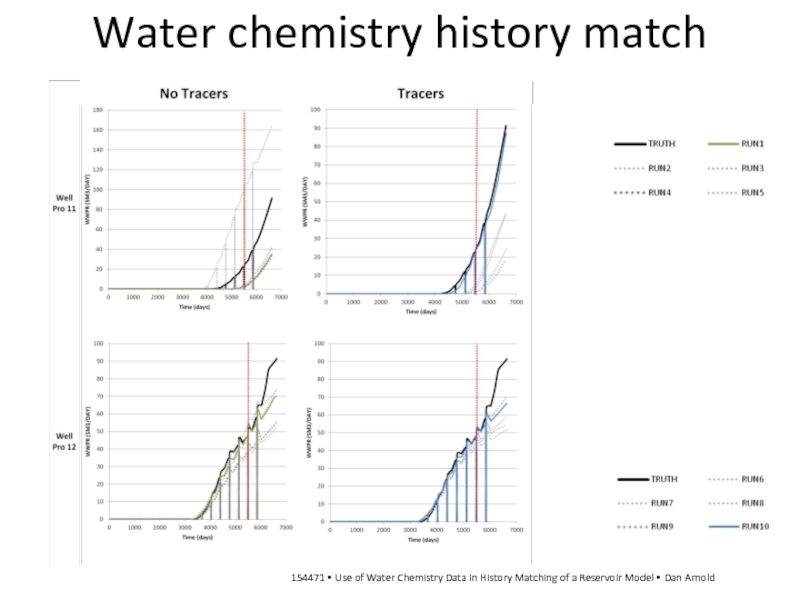
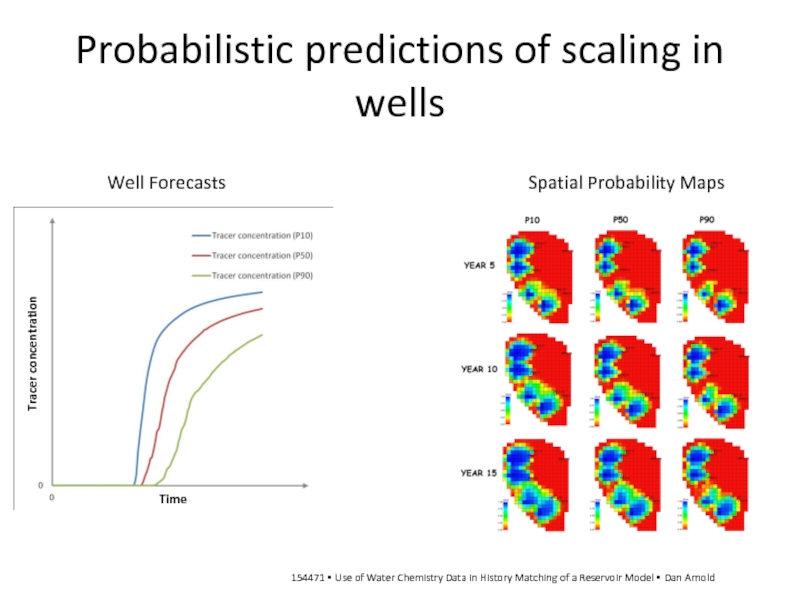
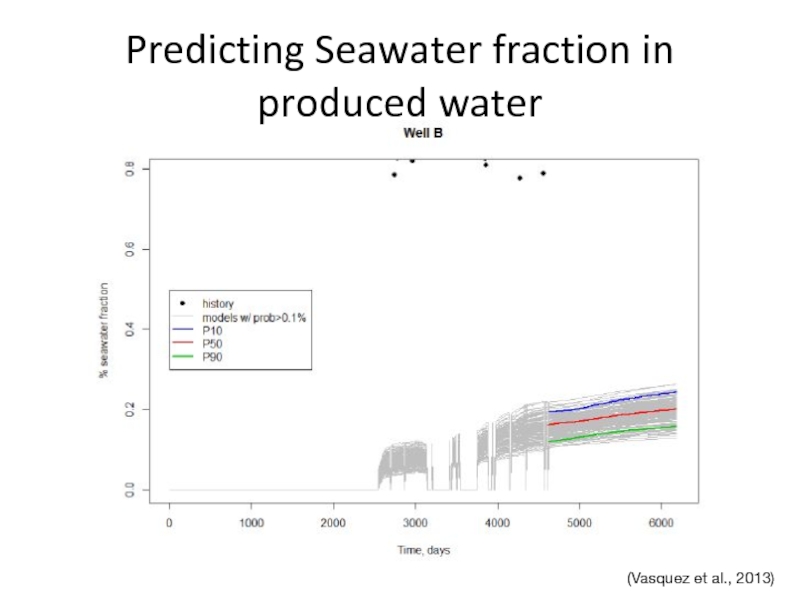
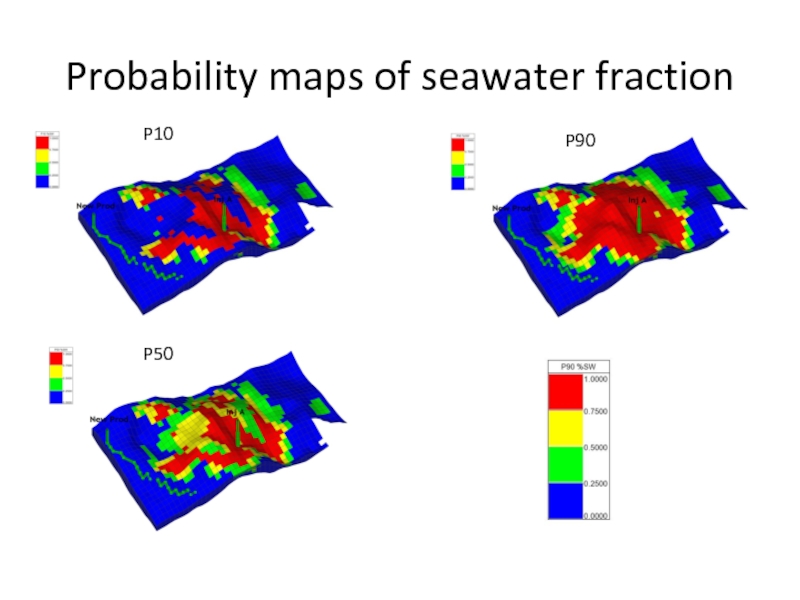
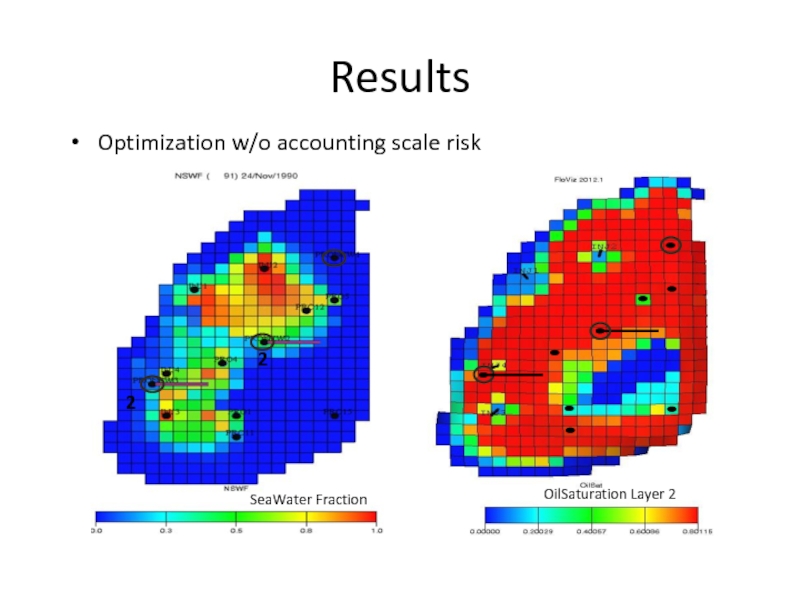
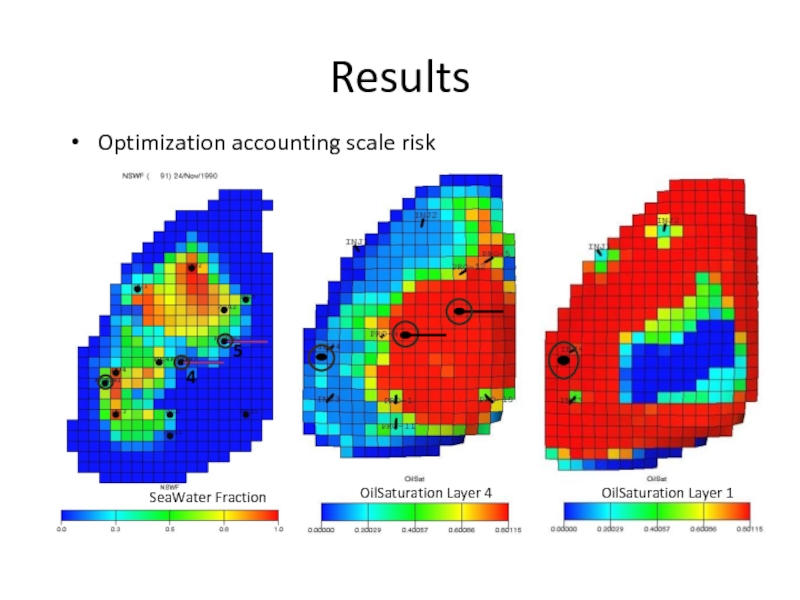
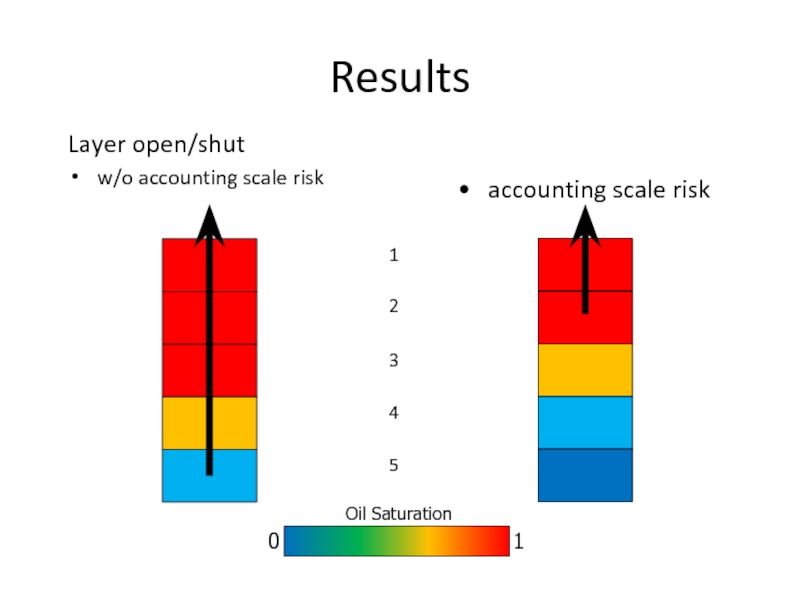
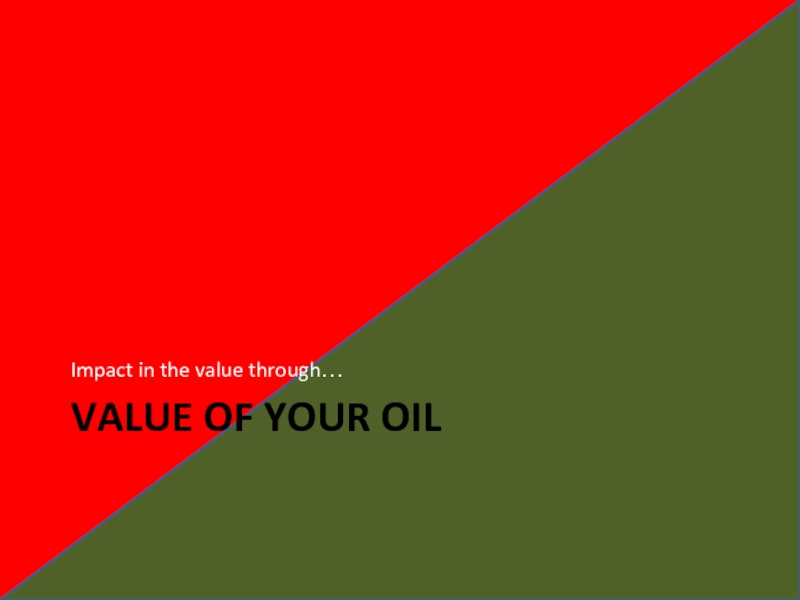
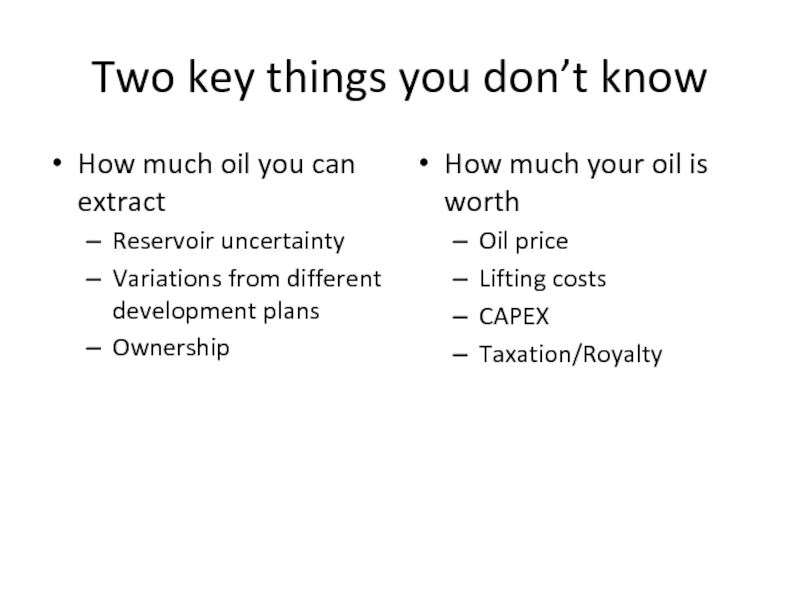
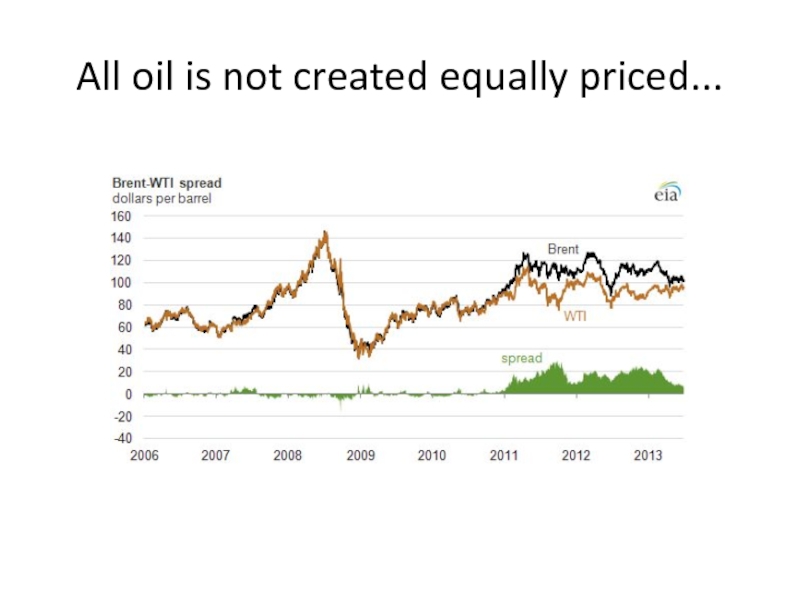
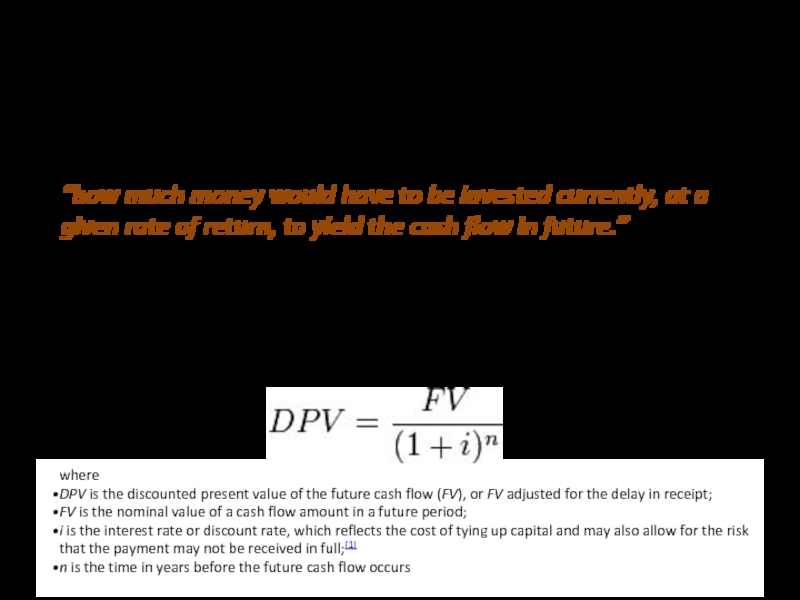
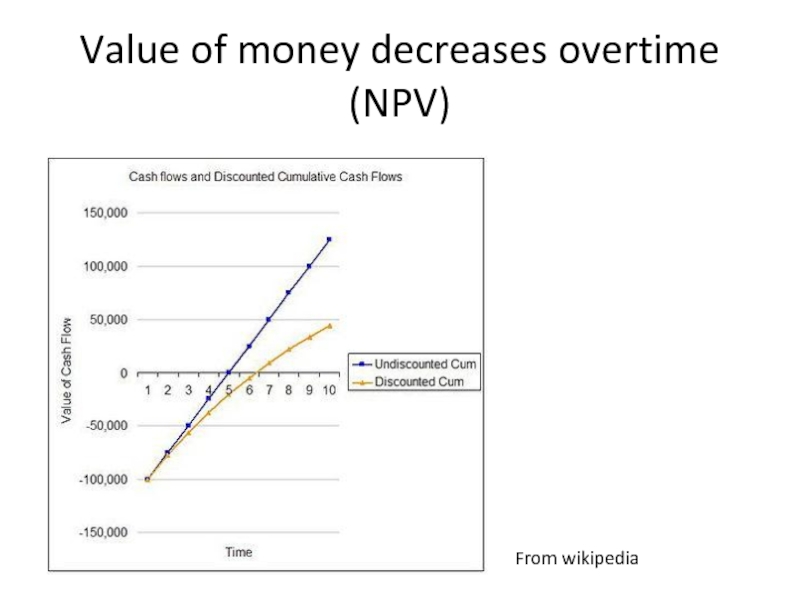
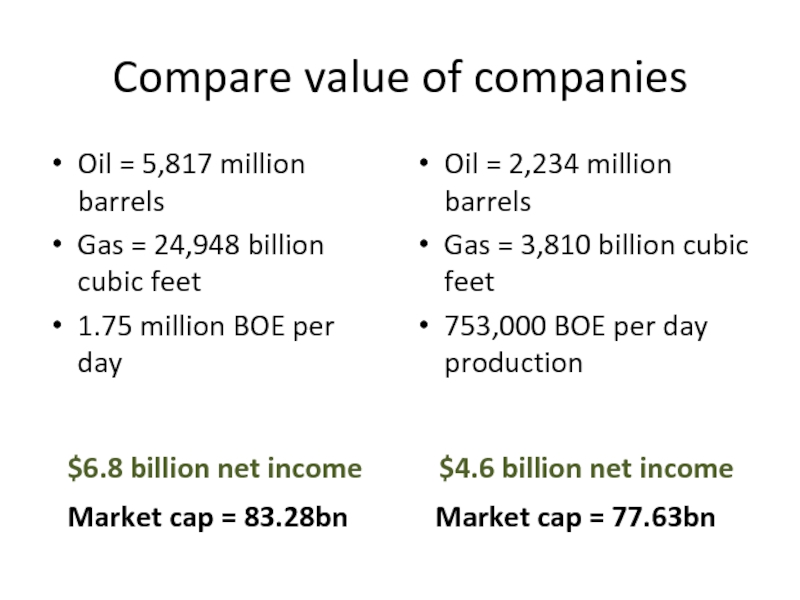
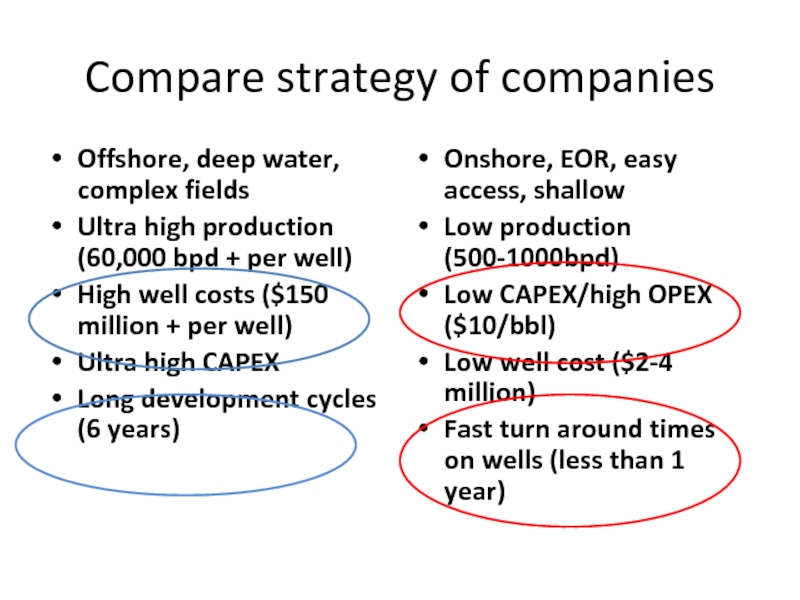
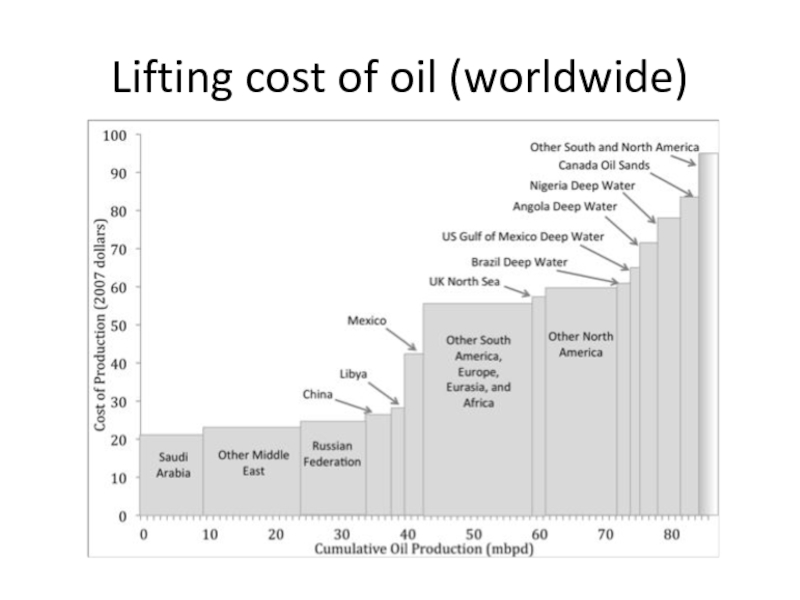
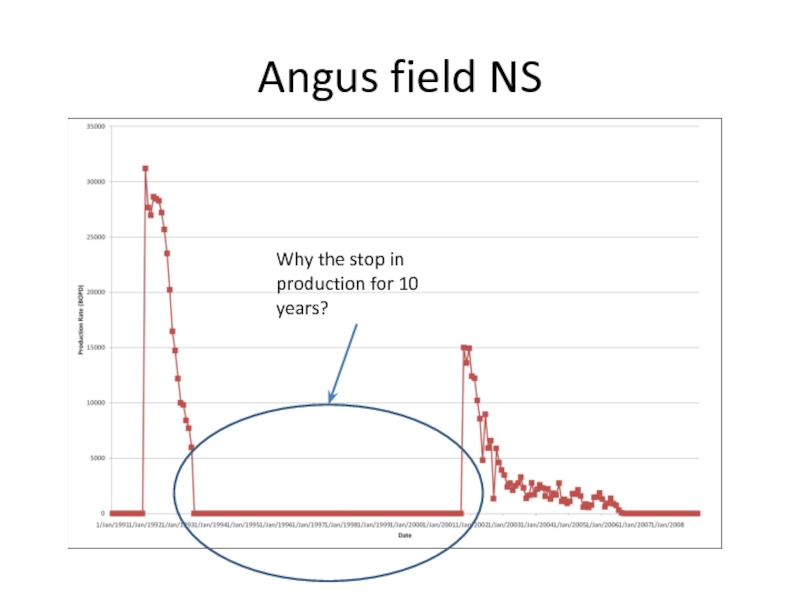
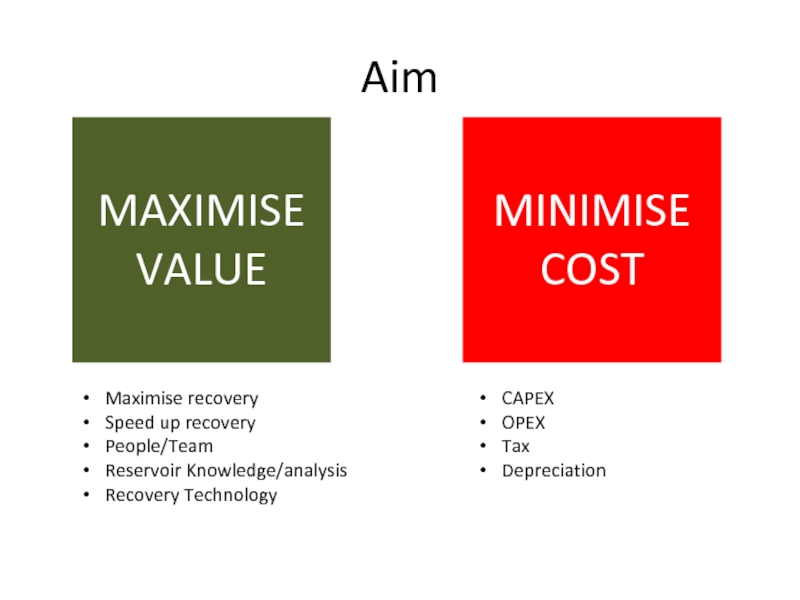
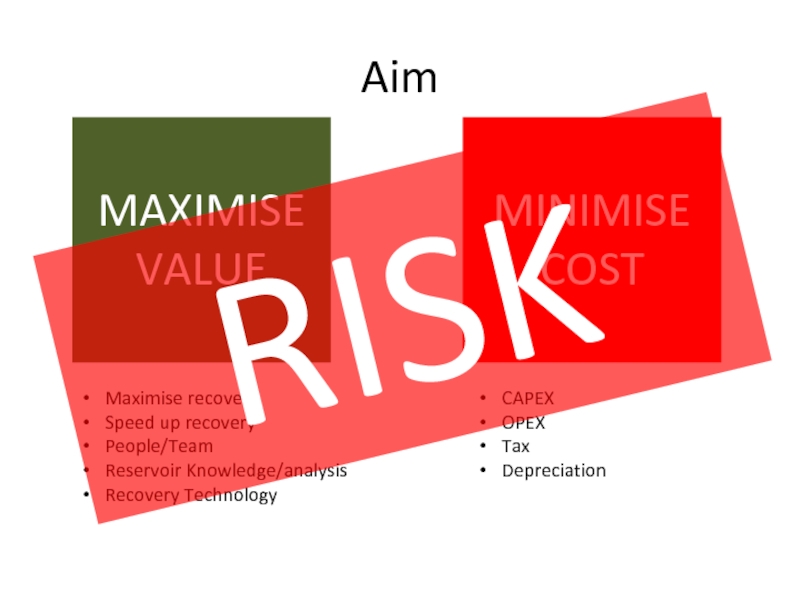
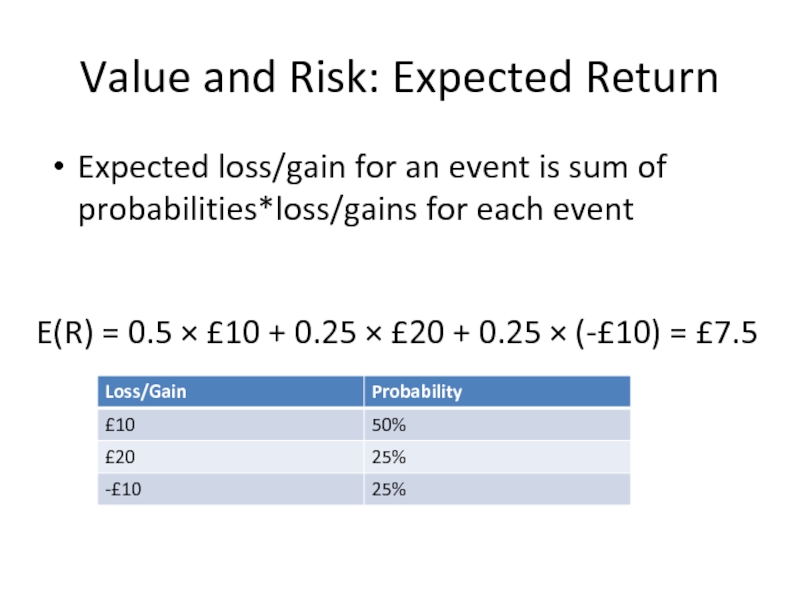
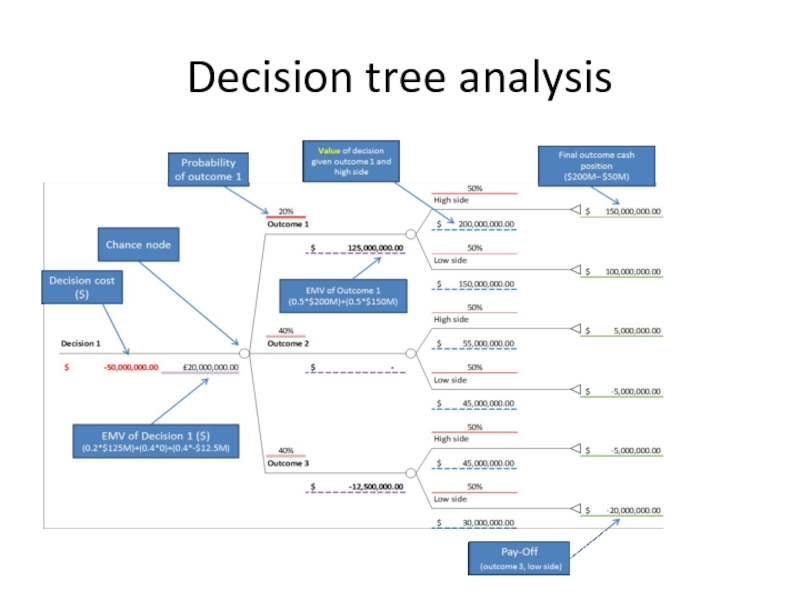
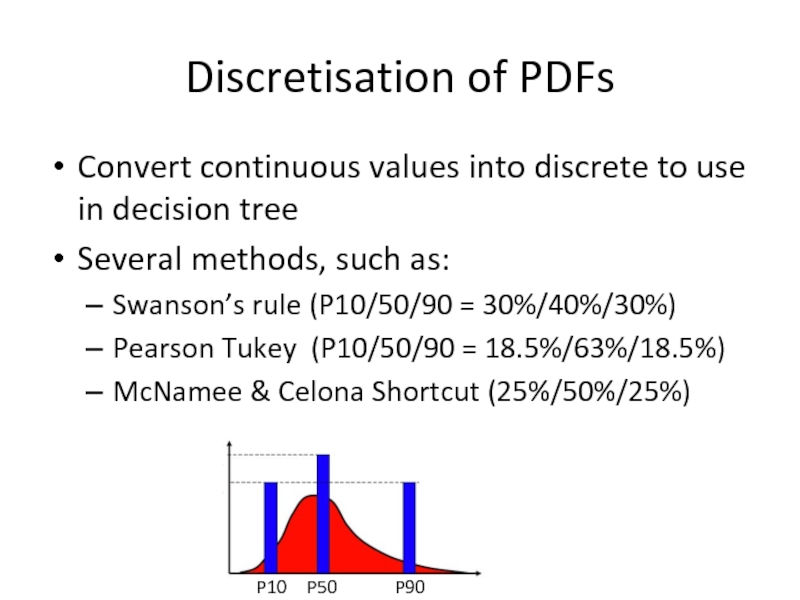

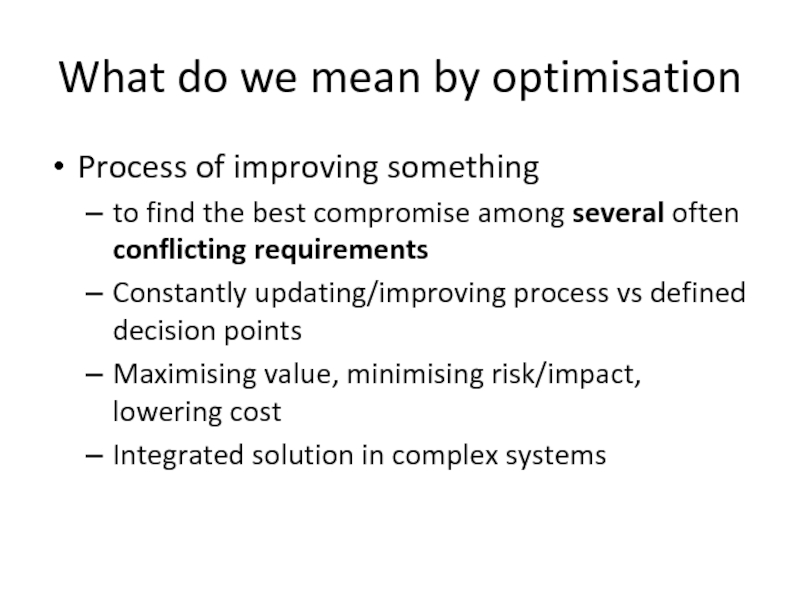
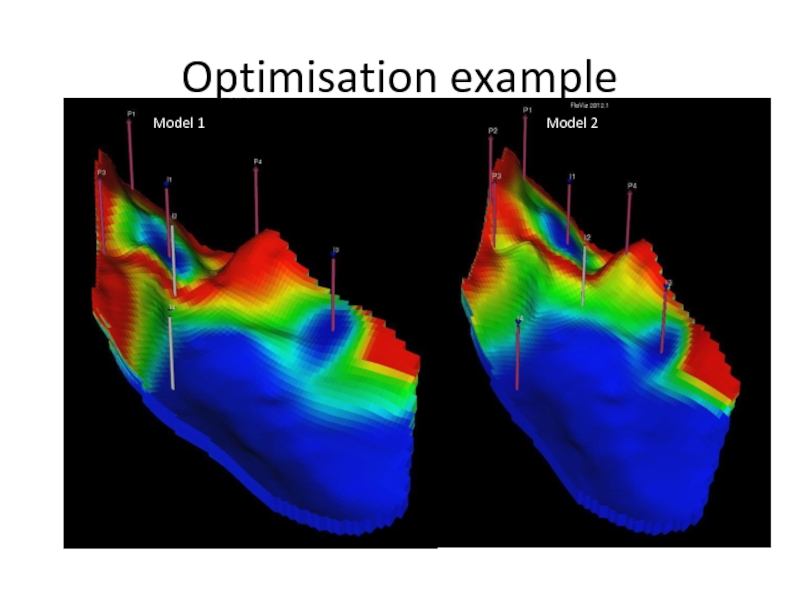
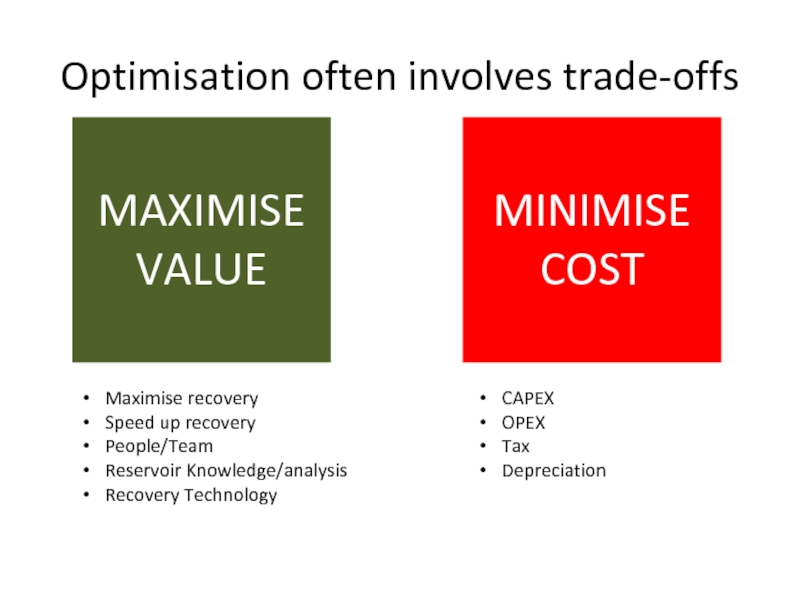
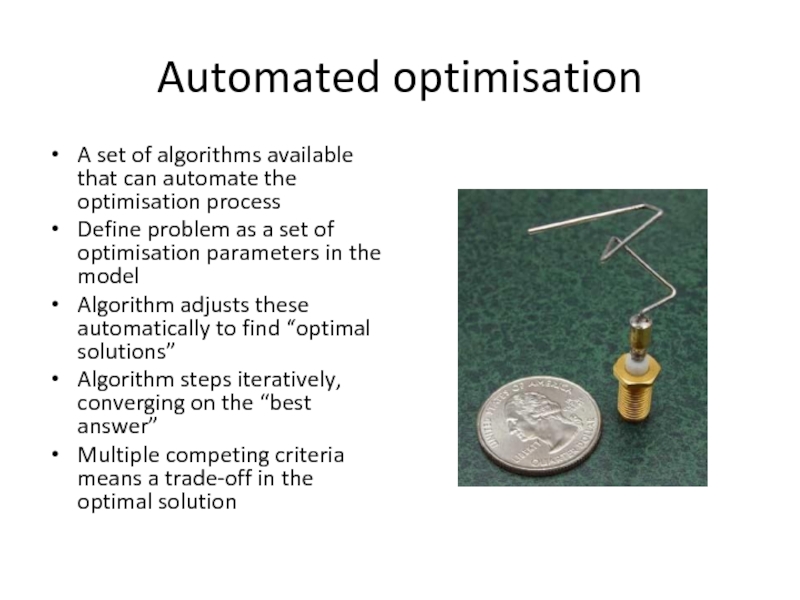
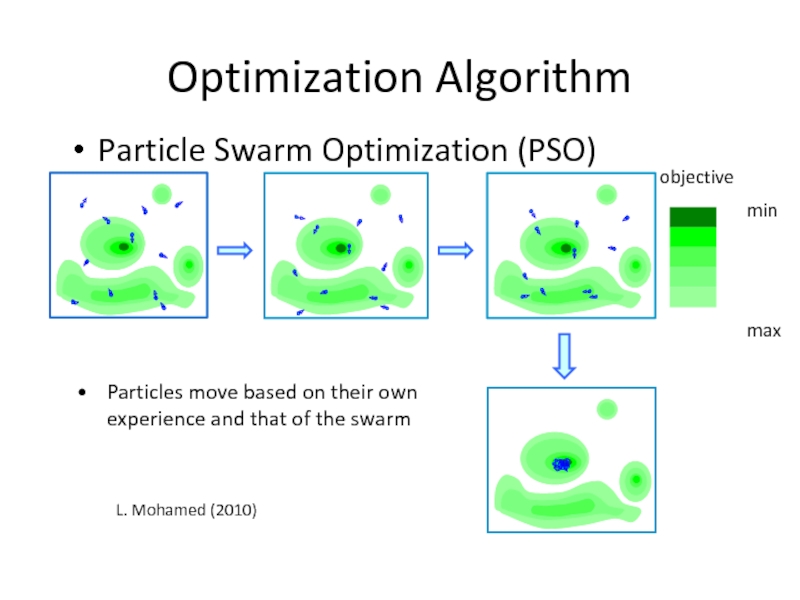
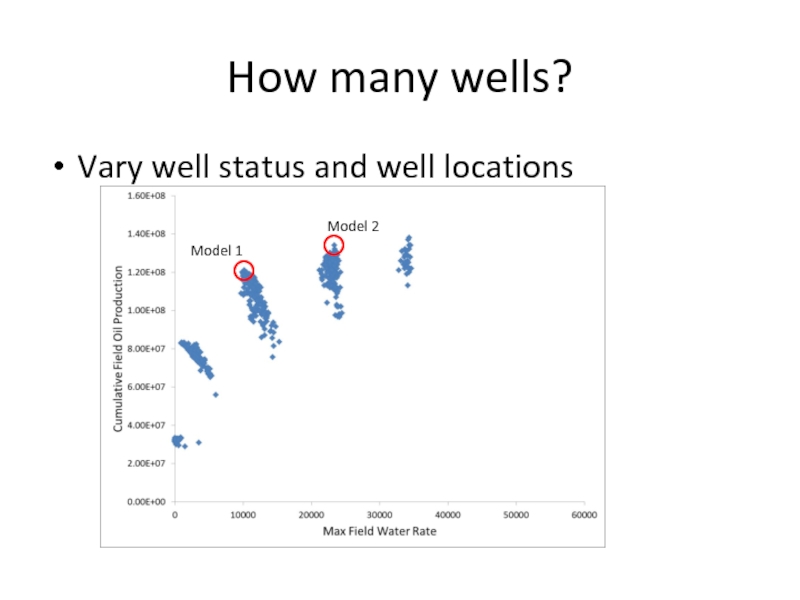
![Real life trade-off in optimisationVary injection well rates and locations of wellsWell rates in [0,15]](/img/tmb/4/315867/4c685269317cbf61974cda2483cf9334-800x.jpg)
